

Ngorongoro Crater

Sub regions inside
Broader region.

Renowned as a UNESCO world heritage site and protected wilderness area, Ngorongoro Crater is one of the best places in Tanzania to see the famous Big Five (Lion, Leopard, Elephant, Rhino, Buffalo) and for this reason is a popular choice amongst safari enthusiasts. A safari in the Serengeti or reserves in northern Tanzania is not complete without a visit to the Ngorongoro Crater.
Encompassing volcanic craters and fertile grazing grounds, Ngorongoro affords incredible game viewing all year round. Renowned for its big game and plentiful predators, game drives in this region are exciting and offer great photo opportunities. Experiences to be had in the Ngorongoro Crater include big five game drives on the crater floor, bird watching, interactions with people from the Maasai tribe, and visits to Olduvai Gorge.
There is a selection of lodges that nestle on the rim of the crater, offering phenomenal views, gorgeous sunsets, and convenient access to the crater floor. A short distance away from the crater is Karatu which offers fewer crowds, smaller and more intimate lodges and additional activities such as walking and mountain biking.
Due to the fact that the Ngorongoro wildlife remains within the confines of the steep-walled crater throughout the year, your decision as to when to visit is not likely to revolve around maximising your game viewing experience. What is likely to influence your decision, however, are the highs and lows of the tourist seasons as the crater floor can become rather crowded with visitors at certain times of the year.
Visitor numbers tend to be at their highest during the dry season from around June to September as this is generally considered to be the best period for wildlife watching. The game usually gathers around rivers and water holes during the dry season and the vegetation is at its thinnest, making the animals much easier to spot. The dry season’s days tend to be warm and sunny but early mornings and evenings can get cold, so be sure to pack plenty of warm clothing.
Visitors numbers then typically decrease significantly during the rainy season which begins around the end of October and continues until the end of May. Tourist rates are generally reduced during this time and the landscape becomes beautifully lush and green. The higher water levels in the Ngorongoro Crater’s Lake Magadi also result in higher concentrations of both resident and migratory water birds including large numbers of flamingo for which the area is known. Aside from the months of March, April and May, when the rains are at their heaviest, the rains are usually short afternoon showers and are unlikely to affect your safari experience. Note that travellers who are eager to experience the wonders of the calving season, should plan their trip during the wet season, particularly during the months of December, January and February.
Forming part of the greater Serengeti ecosystem, the Ngorongoro Conservation Area is an impressive UNESCO World Heritage site in northern Tanzania . This pristine expanse of wilderness is comprised of a large area of short-grass plains on the southern border of the Serengeti National Park as well as the exquisite Ngorongoro Highlands region, featuring a range of dramatic ancient volcanoes on the western side of the Great Rift Valley.
The area’s star attraction is undoubtedly the Ngorongoro Crater, the world’s largest inactive, intact volcanic caldera, which forms a unique 300 square kilometre natural enclosure for around 30, 000 wild animals. The crater is renowned for containing the highest density of big game in Africa including all of the ‘ Big Five ’ as well as cheetah, serval cat, jackal, hyena, Grant's and Thompson's gazelle, and over 400 species of bird. In addition to its astonishing array of wildlife, the crater features the wonderfully scenic Lake Magadi; the Lerai Forest, considered one of the best places in Africa for leopard sightings; and the lovely Ngoitokitok Spring area, inhabited by countless hippos, elephants, and lions.
Other popular attractions within the greater Ngorongoro Crater Conservation Area include the smaller Empakaai Crater, known for its exceptionally large flocks of flamingos, and the spectacular Olduvai Gorge. This steep-sided, 50-kilometre-long ravine is one of the world’s most significant prehistoric sites boasting a fascinating museum displaying replicas of some of the hominid and animal fossils unearthed at the site.
Must see: The magnificent Ngorongoro Crater containing: an impressive abundance of resident wildlife, an acacia forest crawling with leopards, a beautiful lake teeming with waterbirds, and the Ngoitokitok Spring area, inhabited by countless hippos, elephants, and lions.
.webp)
Apr 12, 2024
Anja is very attentive and patient.
Apr 11, 2024
Shann is a great professional
Shann immediately demonstrated pleasant professionalism, competence, experience and patience. She advised and accompanied me in organizing the trip. She listened to all my needs and the suggestions were very fruitful for me. he was very kind and always available even during the holidays. thank you Shann
It was easy
It was easy, it all worked as planned, our expectations were exceeded. Anja was easy to communicate with through Whatsapp and always responded promptly to any questions.
Apr 10, 2024
She made it so easy to book
She made it so easy to book - Leigh-Ann was great to deal with . She made it so easy and worked with the dates I gave her . I appreciate it so much and when I book my next safari - I hope to have the same experience - which was awesome !!!!
Botswana Experience
Anja, our agent, was very kind and helpful all the time to organize the perfect trip. She did it quickly and efficiently. The amount of days we spent in every place was perfect to really enjoy the hotels and the different activities they proposed (in general the hotels are very nice but we don’t have the time to really experience the place but here we did). Also the selections of hotels was very very nice. Nice infrastructure, excellent service (very professional) and outstanding places to visit (all the parks were great). We had a wonderful experience with the company in Botswana.
Thank you Heleen for great service and…
Thank you Heleen for great service and always very helpful with all the changes we made. highly recommended
Keith was extremely helpful during the…
Keith was extremely helpful during the booking process. He is the only reason I continued the booking process with your firm. There were issues with your website among other things that had me feeling uncomfortable. Keith has great energy which eased my concerns. I feel the package Keith put together is great and I expect to have a wonderful trip.
Apr 9, 2024
Creating a Trip of a Lifetime
Shann Shaw was extremely patient and very helpful with getting a trip of a lifetime put together. Thank you so much for making it possible!
Keith answered all of my questions…
Keith answered all of my questions without any issues. He addressed everything that I asked and was quite prompt in his responses.
TOP DESTINATIONS
- Kruger Park
- Okavango Delta
- Serengeti National Park
- Victoria Falls
TOP COUNTRIES
- South Africa
TRAVEL DEALS
View All Travel Deals
SOUTHERN AFRICA
East africa, indian ocean islands, top experiences.
- Beach Holidays
- Family Safaris
- Honeymoon Safaris
- Desert Safaris
- Luxury Rail Safaris
- Multi-Generational Safaris
- Positive Impact Safaris
- Photographic Safaris
- Walking Safaris
WILDLIFE SAFARI
- Big Five Safaris
- Birding Safaris
- Gorilla Trekking Safaris
- Migration Safaris
- Mobile Camping Safaris
- Horseback Safaris
FEATURED EXPERIENCES
Comfort levels, property types.
- Tented Camps
- Boutique Hotels
Featured Safari Collections
- Imvelo Safaris
- African Bush Camps
- Great Plains
- Saruni Basecamp
GET TO KNOW US
- Meet The Team
- Pricing Explained
- Traveller Reviews
- Traveller Stories
- Why Book With Us?
- HerdTracker
- Safari Cost Calculator
- South Africa In 360
- Trusted Safari Partners
What are you looking for?
- Safaris & Tours
- Destinations
- Experiences
- Accommodations
- Why book with us?
Hello traveller!
It's in Cape Town now.
We're sorry. Our safari planners aren't available now. Our office hours are 08:00 - 19:00 (GMT+2).
Call us to speak to an experienced safari planner.
Alternatively, we recommend...
Schedule a phone or Zoom call with one of our safari planners
Complete our travel enquiry form to connect with a safari planner
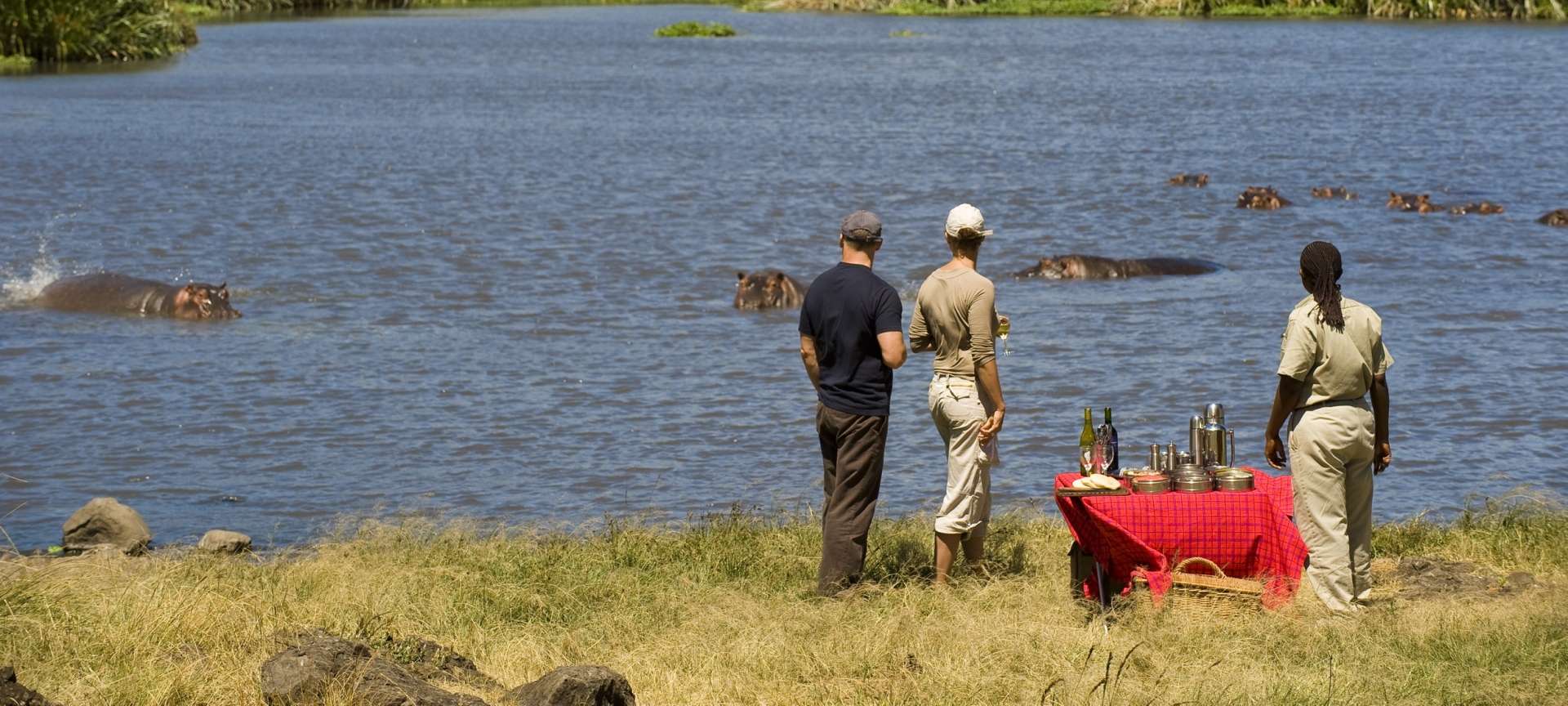
- Ngorongoro Crater Safari
The ultimate guide to your next Ngorongoro Crater Safari
Get to know ngorongoro crater.
This is where vast herds of the Great Migration come to give birth in a 3-million-year-old collapsed volcano, Masai people live and fossils abound
Ngorongoro Crater – a Unesco World Heritage site – is 600 meters deep, 20 kilometres wide and the largest unflooded, unbroken caldera in the world. It's an extraordinary ecosystem where you can find the Big Five or even, if you're lucky, the endangered black rhino on the Crater floor.When it was still active, the volcano deposited its volcanic ash on what's now the Serengeti plains towards the west, preserving many fossils in Olduvai (Oldupai) Gorge, discovered by Louis and Mary Leakey. The greater Ngorongoro Conservation Area conserves the fragile Ngorongoro Crater ecosystem and serves as an important space for the animals of the Great Migration to give birth at Lake Ndutu, which borders the southern Serengeti.
Ngorongoro Crater Video
- Ngorongoro Crater
How it Works
View our recommended safaris for inspiration and get ready to plan your dream safari
Contact us or fill out an enquiry form and one of our travel experts will help you tailor make your perfect safari
Enjoy an authentic African experience, with peace of mind
Why Ngorongoro Crater?
- Unesco World Heritage Site
- Great Migration calving season
- Biggest concentration of wild mammals in the world
- Walking safaris on the Crater rim or to Lake Natron
- Black rhino
- The Big Five
Where to go in Ngorongoro Crater
- Empakaai Crater
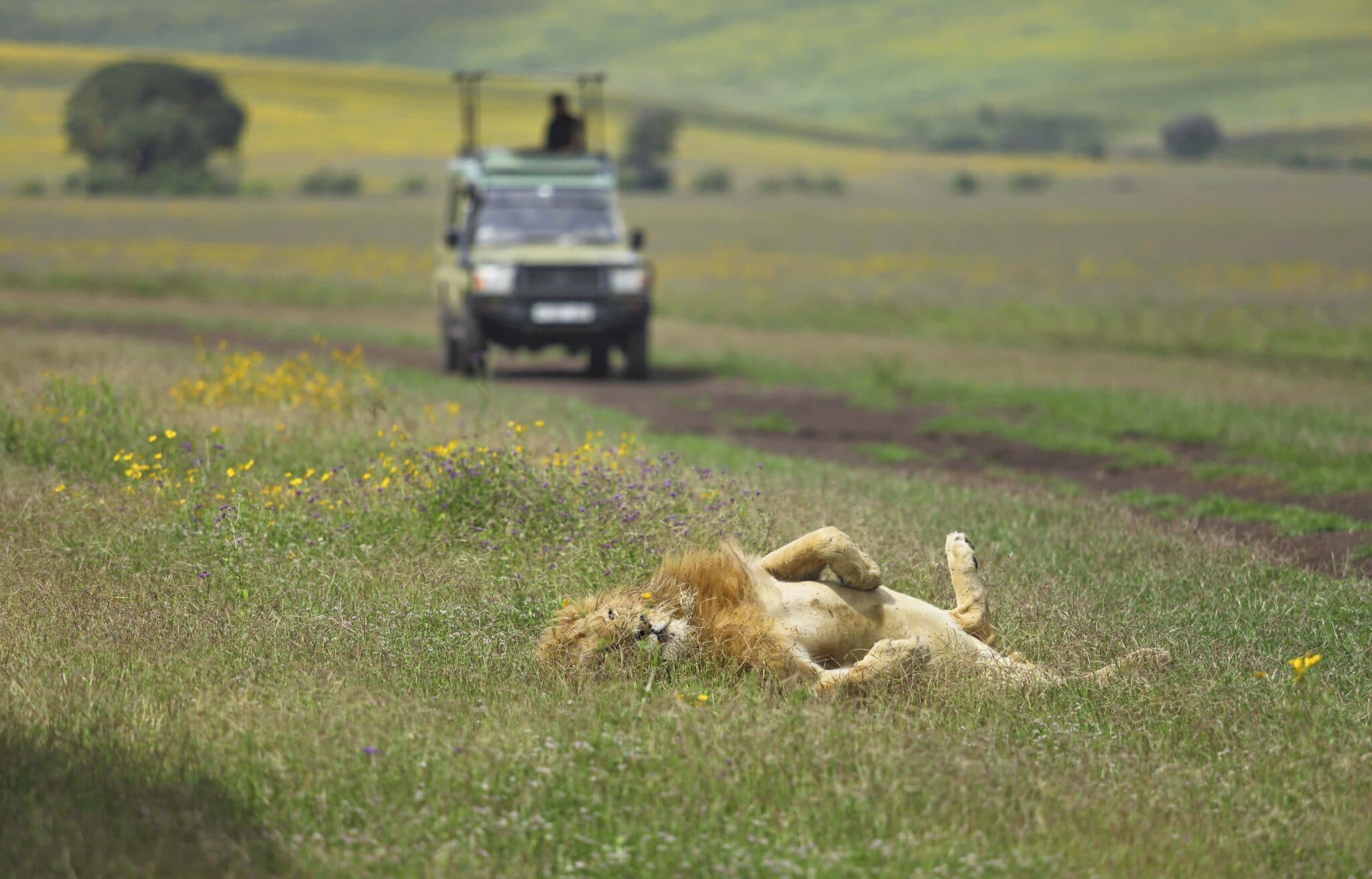
The second-largest crater in the Ngorongoro Conservation Area, Empakaai is almost 8km in diameter and its floor is dominated by a saline crater lake and enclosed by sheer 300m high walls that rise to an elevation of 3,200m on the eastern rim. On of East Africa’s most underrated and seldom-visited scenic gems, the crater lies about 90 minutes’ drive northeast of Ngorongoro Crater via the Embulbul Depression, a grassy bowl that which dips to below 2,350m at the base of the 3,260m Mount Losirua and 3,648m Lolmalasin (the highest point in the Crater Highlands). The view from the forested crater rim is fabulous, whether you look inward to the emerald green crater lake, its shallows frequently tinged pink by thousands of flamingos, or east across the Rift Valley to the ashen slopes and smoking fumaroles of volcanic Ol Doinyo Lengai, a scene that also takes in Lake Natron and snow-capped Kilimanjaro on a clear day. Empakaai offers a welcome opportunity to break the safari regime of twice-daily game drives with a stiff steep guided hike to the crater floor. The steep but scenic descent along a tolerably well-maintained footpath takes 45-60 minutes, longer if you’re looking out for the plentiful birds that inhabit the forested crater walls, and there’s also a chance of spotting bushbuck, buffalo, blue monkey and even elephant. Good walking shoes and a reasonable level of fitness are recommended.
- Heroes Point
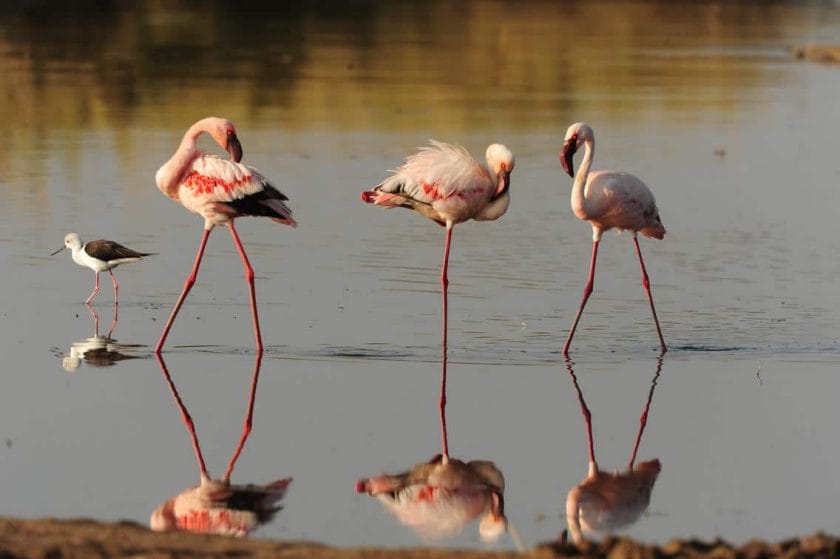
Coming from the direction of Arusha, the road from Lodware Entrance Gate to the crater rim switchbacks uphill through fertile slopes swathed in Afromontane forest to Heroes Point, which is where most visitors catch their first breathtaking view to the crater floor. It is here that German conservationist and filmmaker Michael Grzimek (son of the legendary Professor Bernhard Grzimek of Serengeti Shall Not Die fame) was buried in 1959 after his tragic death in an aeroplane crash over the Serengeti at the age of 24. Look closely at the crater floor below and you should pick out a few hundred-strong herds of wildebeest, zebra and buffalo moving across the crater floor, as well as elephants on the edge of Lerai Forest or flamingos in the shallows of Lake Magadi.
- Lake Eyasi and the Hadzabe
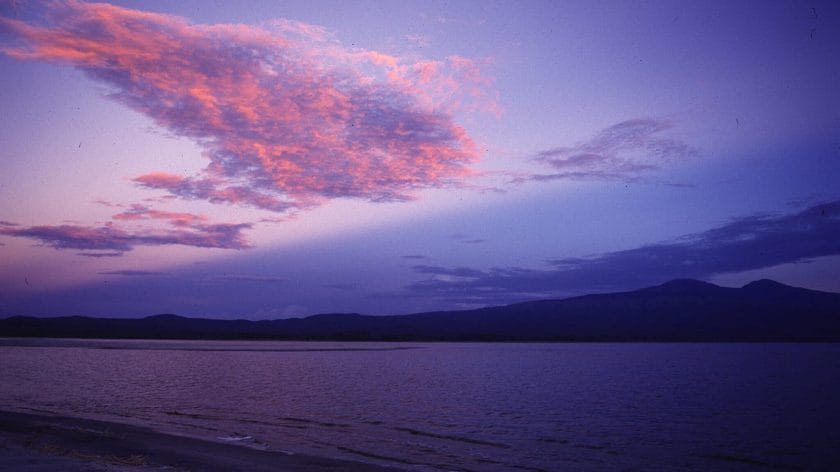
Bounding the southern Ngorongoro Conservation Area at the base of the Rift Valley Escarpment, remote Lake Eyasi is a shallow soda lake prone to large fluctuations in area and level depending on local rainfall. Possessed of a certain desolate beauty, the surrounding dry savannah is home to the Hadza, or Hadzabe, a tribe of nomadic hunter-gatherers that numbers fewer than 100 individuals today and speaks a similar click language to the San people of Southern Africa. The overgrown village of Mang’ola is the most important settlement in the area, and the base from which it is usually possible to visit a family of these traditional nomads, who resolutely refuse to be coerced into a more settled agricultural or pastoral lifestyle, and join them on a hunting expedition in search of baboons, dik-dik or even mice, all of which are despatched with a traditional bow and arrow.
- Lake Natron and Ol Doinyo Lengai
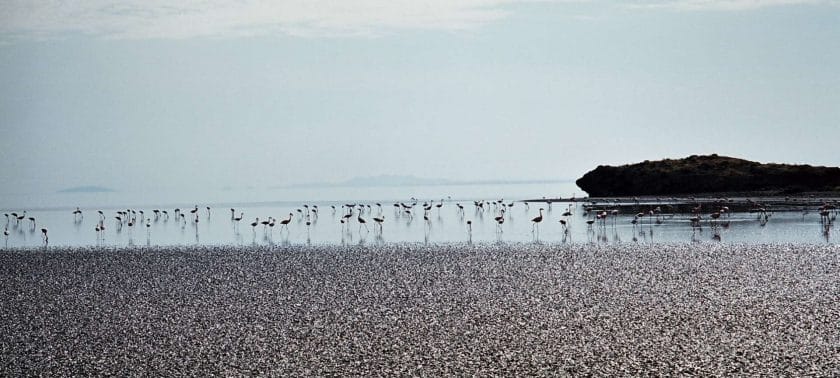
Set within the Rift Valley on the eastern border of the Ngorongoro Conservation Area, Natron is perhaps the most starkly beautiful of all the Rift Valley lakes south of Turkana. Almost 60km long but nowhere more than a metre deep, this primordial alkaline sump is renowned for its caustic and unusually viscous waters, which are enclosed by a crust of volcanic ash and salt, as well as a few isolated swamp patches fed by bubbling hot springs. There is some large wildlife in the area, but Natron’s main faunal claim to fame is as the only known breeding ground for East Africa’s 2.5 million lesser flamingos, which congregate at an inaccessible part of the lake between August and October. Natron also attracts up to 100,000 migrant waders during the European winter. The main attraction close to the Natron is Ol Doinyo Lengai, the Maasai ‘Mountain of God’, a textbook volcano that rises more than 2km above the surrounding Rift Valley floor to an altitude of 2,960m. Probably the most active volcano in East Africa, Lengai has erupted at least a dozen times in the past 150 years, experienced almost continuous low-key activity over the last past century and a half, the most dramatic in recent years being over 2007, when it emitted an ashen steamy plume that travelled almost 20km downwind. The steep ascent of Lengai, ideally undertaken overnight to avoid sun exposure on the black shadeless slopes, is a popular hike with fit and adventurous travellers, at least when the volcano is sufficiently placid. It should only be undertaken with an experienced local guide, ideally leaving shortly before midnight to reach the crater rim for sunrise.
- Lake Ndutu and the Serengeti Plains
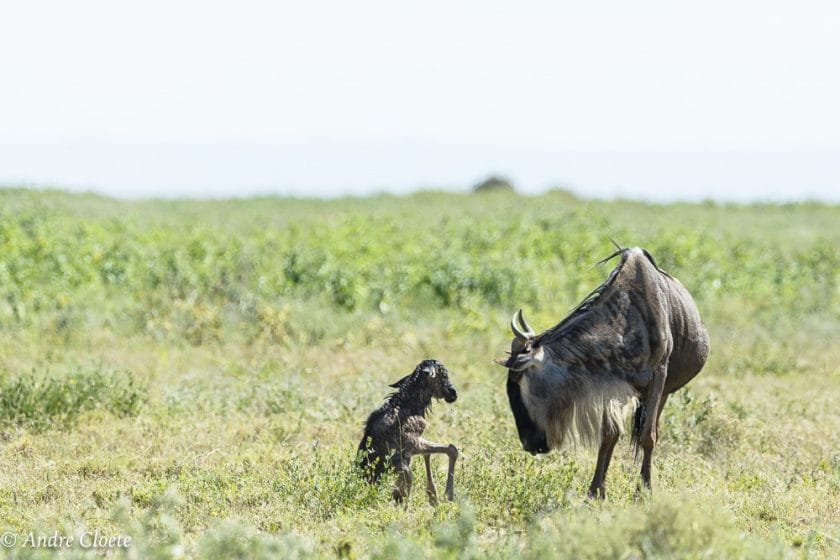
Ngorongoro Conservation Area is essentially an eastern extension of the vast Serengeti-Mara ecosystem – indeed, it formed part of the original Serengeti National Park as it was gazetted in 1951 but was split off shortly afterwards to appease Maasai protests against being evicted from their traditional grazing lands. Today, the southeast of the conservation area, around Oldupai Gorge, remains an important component of this migratory ecosystem, a fact of which you will be in no doubt should you pass through the area en route to the Serengeti National Park during the rainy season (late November to early May), when large herds of wildebeest and other ungulates disperse across the short grass plains and calve en masse in February. At other times of year, the area is a good place to look for cheetah, bat-eared fox, eland and ostrich. The game viewing centrepiece of the region is Lake Ndutu, which straddles the Serengeti-Ngorongoro boundary at the epicentre of the wildebeest dispersal, when it offers truly dramatic game viewing.
- Oldupai Gorge
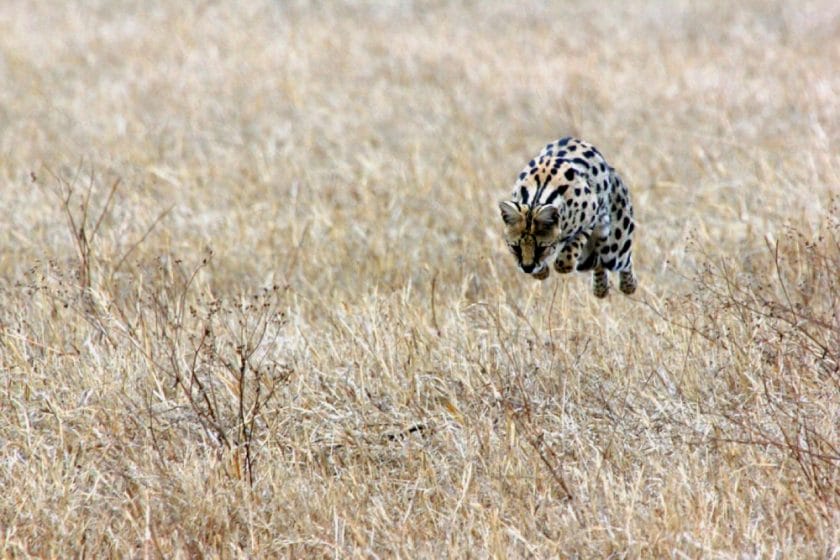
Two million years ago, the landscape of Ngorongoro Conservation Area looked very different to how it does today. Ngorongoro itself would have been an active volcano, taller perhaps than Kilimanjaro is now, and the seasonally parched plains at its western base were partially submerged beneath a seasonal lake that formed an important watering hole for our hominid ancestors. The fluctuating nature of this ancient lake led to a high level of stratification, one that accentuated by sporadic deposits of volcanic ash from Crater Highlands, creating ideal conditions for the fossilisation. Then, tens of thousands of years ago, fresh tectonic activity caused the land to tilt, leading to the formation of a new lake to the east and the creation of a seasonal river that cut through the former lakebed to expose layers of stratification up to 100m deep and a continuous archaeological and fossil record of life on the plains over the past two million years. Named after the Maasai word for the wild sisal that grows in the area, Oldupai Gorge is one of the richest palaeontological sites in East Africa. First excavated in 1931 by Professor Louis Leakey, it was here, in 1959, that Louis’s wife Mary Leakey unearthed a critical landmark in the history of palaeontology: the discovery of a fossilised cranium that provided the first conclusive evidence that hominid evolution stretched back over more than a million years and had been enacted on the plains of East Africa. Nicknamed ‘Nutcracker Man’ in reference to its bulky jawbone, the cranium belonged to a robust Australopithecine that had lived and died on the ancient lakeshore around 1.75 million years earlier, and while its antiquity would later be superseded by more ancient fossils unearthed in Ethiopia and Kenya, it rewrote the perceived timespan of human evolution, shot the Leakeys’ work to international prominence, and led to an a series of exciting new discoveries, including the first fossilised remains of Homo habilis. At nearby Laetoli, in 1976, four years after Louis’s death, Mary Leakey discovered footprints created more than three million years ago by a party of early hominids that had walked through a bed of freshly deposited volcanic ash – still the most ancient hominid footprints ever found.
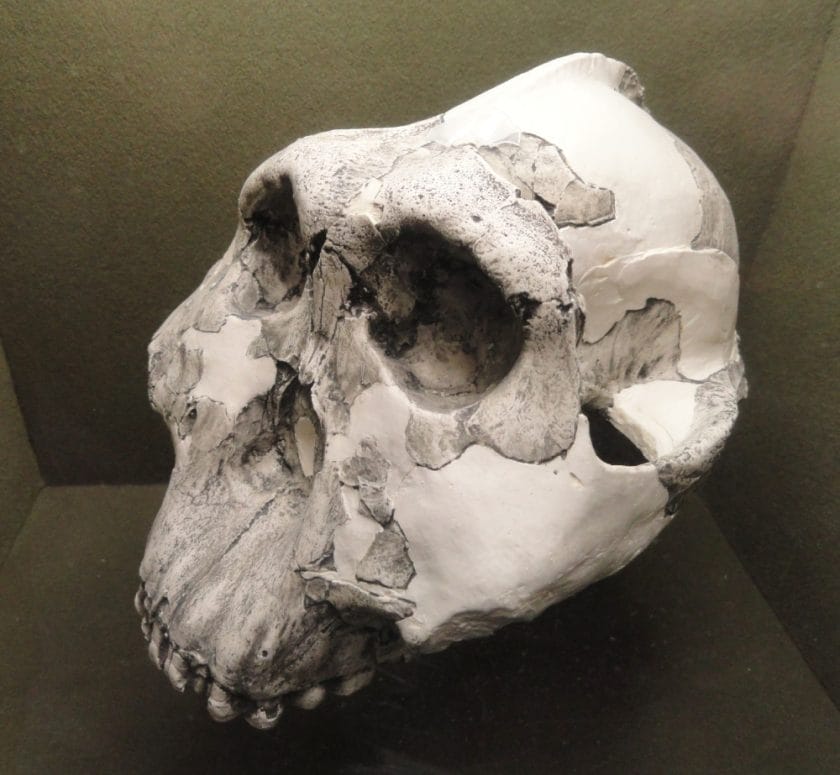
Today, the original diggings can be explored with a guide, but the main attraction is an excellent site museum that lies a short distance off the main track connecting Ngorongoro Crater to Serengeti National Park. Displays include replicas of some of the more interesting hominid fossils unearthed at the site as well as the Laetoli footprints, along with genuine fossils of a menagerie of extinct oddities: a short-necked giraffe, a giant swine, an aquatic elephant and a bizarre antelope with long de-curved horns. Outside the museum, look out for colourful dry-country birds such as red-and-yellow barbet and purple grenadier.
- Olmoti Crater
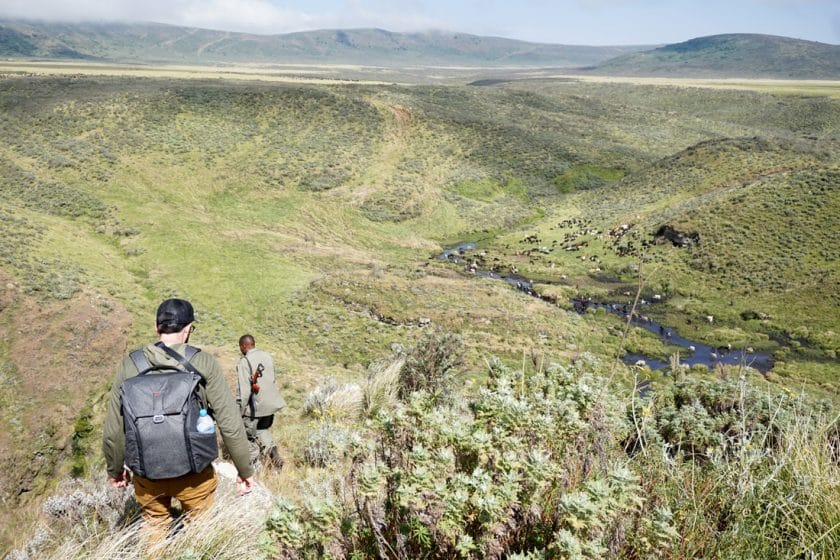
Another dramatic relic of the volcanic activity that shaped the Crater Highlands over the past ten million years, Olmoti – a Maasai name meaning Cooking Pot – is a sunken caldera whose rim is reached along a 30-minute footpath from the ranger post at Nainokanoka. Covered in grass and bisected by a river valley, this shallow crater doesn’t quite match Ngorongoro or Empakaai for scenery, but it is very pretty, and it offers good grazing to the local Maasai cattle and various antelope. Look out for pairs of augur buzzard cartwheeling high in the sky, and the cliff-loving Verreaux’s eagle. From the main viewpoint, a short footpath leads to the seasonal Munge Waterfall, where the eponymous river cascades out of the crater.
Travel with Confidence
With over 20 years of experience, our team will help you choose the perfect african safari for your adventure., 24/7 support, personalized, popular ngorongoro crater safaris, these recommended tours for ngorongoro crater can be tailor-made to match your budget..
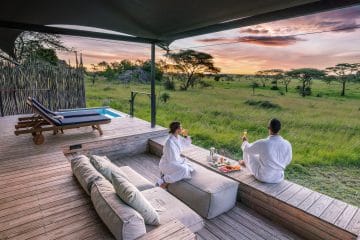
Honeymoon Safari in the Serengeti National Park
East Africa Tanzania Ngorongoro Crater Serengeti
From $ 6240 /USD
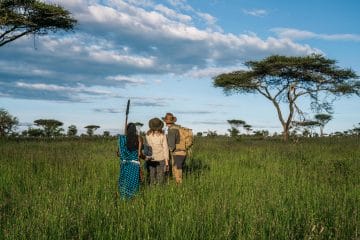
Tanzania Northern Circuit Luxury Safari
East Africa Tanzania Arusha Tarangire Ngorongoro Crater Serengeti
From $ 8900 /USD
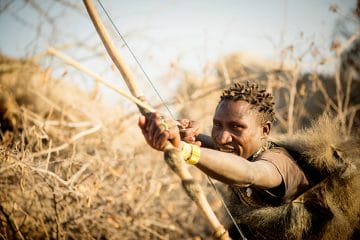
Cultural and Unplugged Safari in Tanzania
East Africa Tanzania Lake Manyara Ngorongoro Crater Serengeti
From $ 10390 /USD
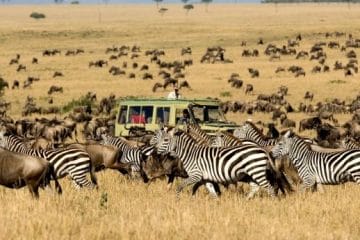
Luxury Great Migration Safari from June to Octo...
Tanzania Arusha Tarangire Lake Manyara Ngorongoro Crater Serengeti
From $ 16900 /USD
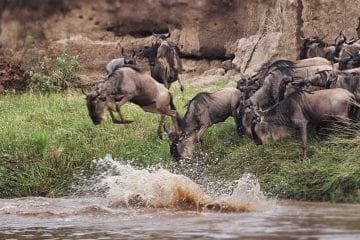
Classic Tanzania with North Serengeti Migration...
East Africa Tanzania Tarangire Ngorongoro Crater Lake Manyara Serengeti
From $ 12650 /USD
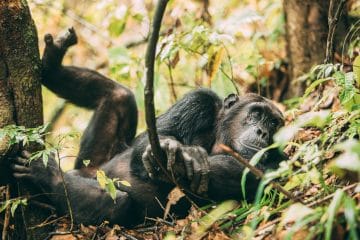
Greatest Tanzania Adventure
East Africa Tanzania Ngorongoro Crater Serengeti Mahale Mountains
From $ 15190 /USD
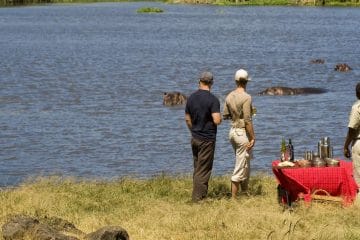
33 Ngorongoro Crater Safaris to choose from
Stay for 6 - 17 days
Experience our Tailor-made Tours in Ngorongoro Crater
When is the best month to travel to ngorongoro crater.
- Ngorongoro in January
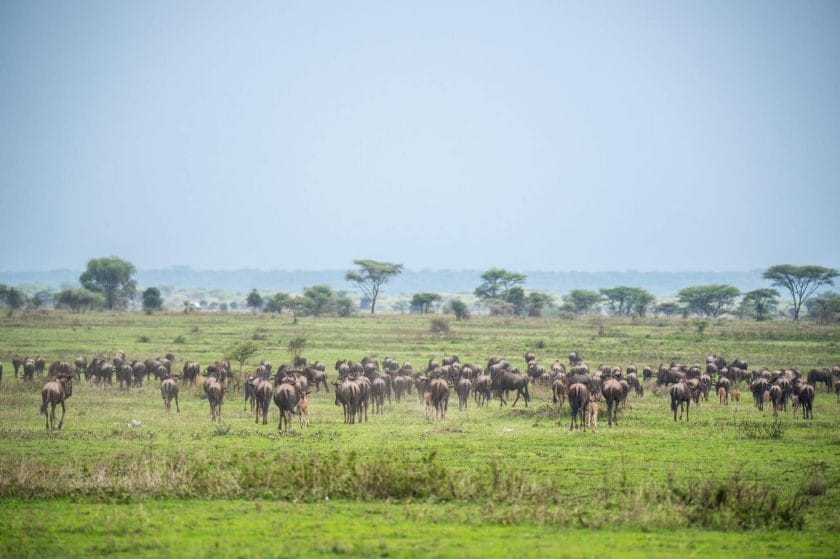
Ngorongoro Crater has a temperate climate characterised by rather chilly nights throughout the year but January is one of the warmest months, with an average daily maximum of 23°C and average minimum of 10°C. January generally marks the end of the so-called short rains, so it shouldn’t be all that wet, but the landscape retains a lush green appearance and the air tends to be crisp and clear. Ample resident mammal populations in the crater are further boosted by migrant herds of wildebeest as they disperse into the south of the Serengeti-Ngorongoro ecosystem, and the month also offers top notch bird watching thanks to the presence of large numbers of Palaearctic migrants and the tendency for many resident birds to display colourful breeding plumages during the rains.
- Ngorongoro in February
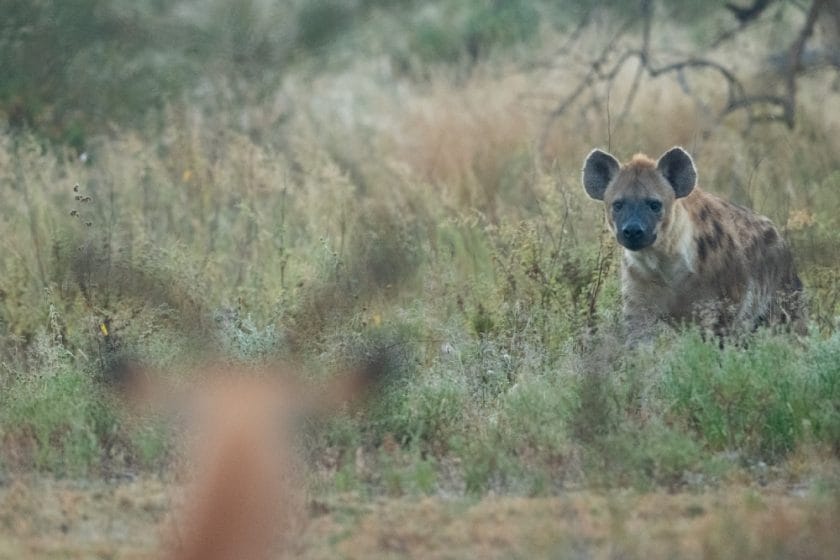
As with January, February is one of the warmest months in this temperate destination, with an average daily maximum of 23°C, but night time temperatures typically drop around 10°C on the crater rim, so be prepared for cool evenings. February is the main cusp month between the so-called short rains and long rains, so rainfall is relatively low (the monthly average is 55m) but the landscape is lush and green. February is also the main calving season for the million-plus wildebeest that congregate in Serengeti-Ngorongoro border area at this time of year, and event that is not only spectacular in itself but that also tends to attract high concentrations of large predators (lion, spotted hyena and cheetah). Birdwatching is excellent to the presence of large numbers of Palaearctic migrants. For those combining a safari with a Kilimanjaro climb, February is one of the best times to tackle the great mountain. The one drawback of visiting in February is that this combination of positive factors attracts a high influx of tourists and corresponding volume of safari vehicles in the crater floor.
- Ngorongoro in March
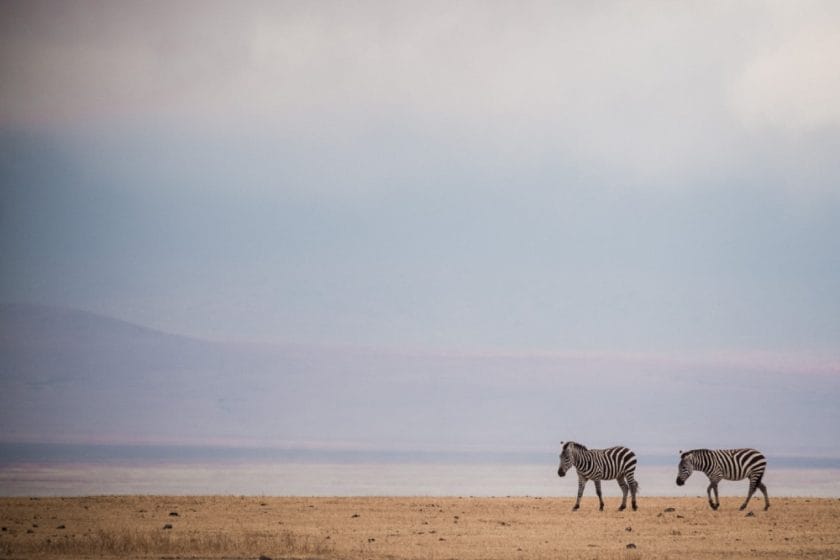
March is a relatively warm month in Ngorongoro, and one of the wettest. The average daily maximum is 22°C, night time temperatures on the crater rim typically drop to around 10°C, and the average annual rainfall is 135mm, though this tends to fall mostly in stormy bursts rather than long bouts of drizzle. The crater floor is lovely and green at this time of year, and there is plenty of wildlife around, not only on the carter floor itself, but also in the more westerly Serengeti border area, where the wildebeest migration is still concentrated in the immediate aftermath of the main calving season. For birders, most of the Palaearctic migrants are present, and many resident species are sporting colourful breeding plumages. Tourist volumes tend be slightly down from February, partly because the calving is over, partly because the monsoon season usually hits Zanzibar – the region’s most popular beach destination – in late March.
- Ngorongoro in April
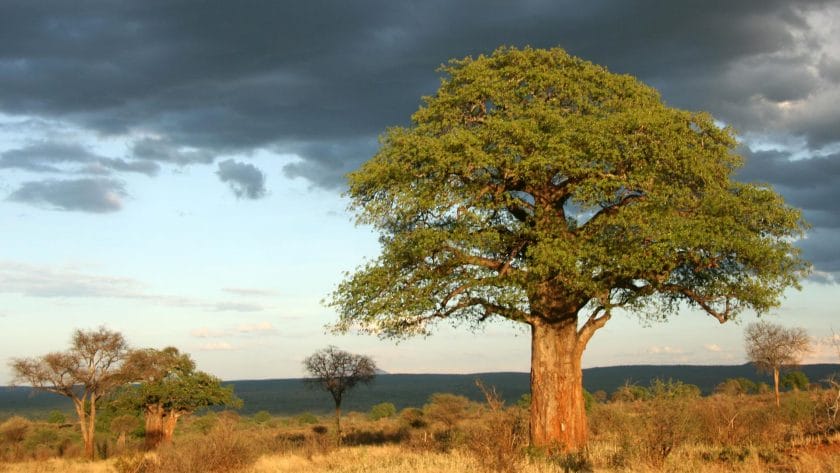
April is the wettest month in most parts of Tanzania, and Ngorongoro is no exception, with the crater rim receiving an average monthly rainfall of 220mm. This has no direct effect on wildlife viewing – on the contrary, wildlife populations within the crater are very high in April – but it does mean that a significant proportion of game drives are likely to be partly rained. Taking other parts of the country into account, April is also the peak of the monsoon season on Zanzibar and the coast, and the worst possible month for Kilimanjaro climbs. On a brighter note, at least for those who’ve no intention of climbing Kilimanjaro or exploring the coast, this weight of negative factors mean that tourist numbers on Tanzania’s northern safari circuit tend to bottom out in April, which makes it an excellent time to experience Ngorongoro and the Serengeti at their least crowded.
- Ngorongoro in May
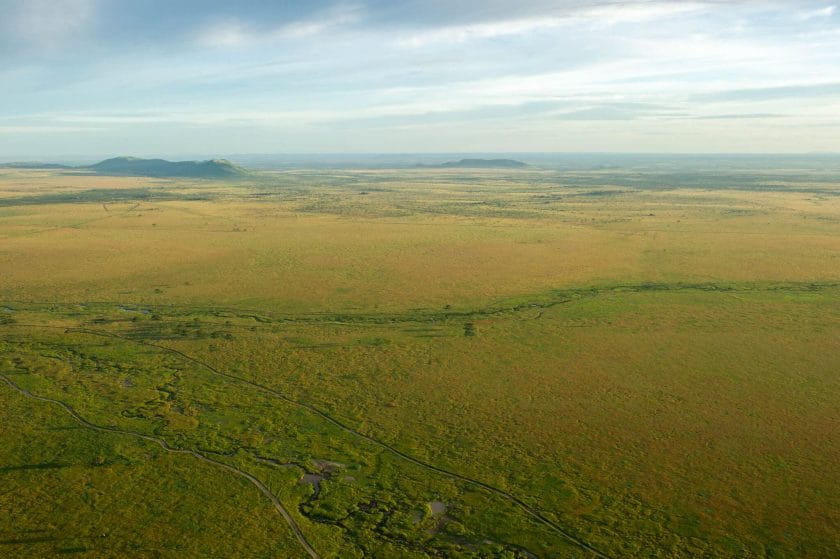
The long rains that peak in April usually continue into early to mid-May, but overall it tends to be a lot dryer that the two months that preceded it. Wildlife viewing is usually excellent, and the scenery is lovely and green, though the wildebeest that amass in the west of the Ngorongoro Conservation Area usually start to head northwest and deeper into the Serengeti at some point before the start of June. That said, for those whose visit to Tanzania is all about the northern safari circuit, May is a pretty good choice, as it tends to be very uncrowded, many hotels and lodges offer discounted rates.
- Ngorongoro in June
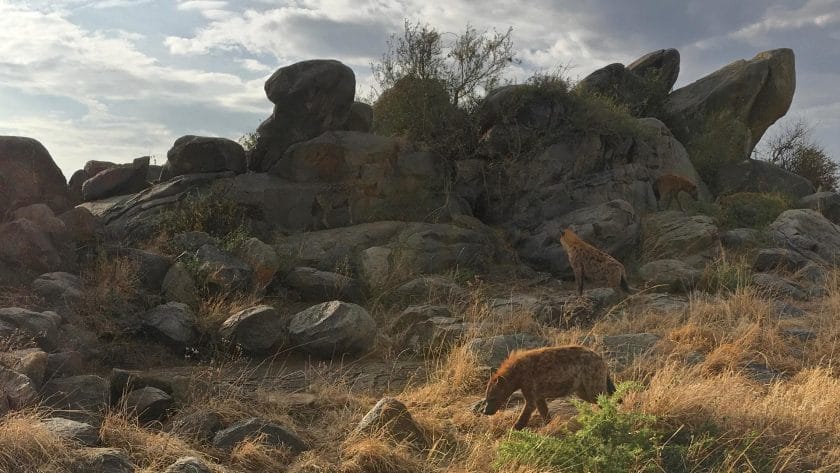
June is arguably the optimum month to visit Ngorongoro Crater. The long rains should be over, but the scenery will still be green and lush, and the safari circuit remains relatively uncrowded, as peak tourist season only starts to kick in towards the end of the month or into July. Looking further afield, it is also a good month for Zanzibar beach holidays and Kilimanjaro climbs, and for catching the Serengeti migration as it moves northwest towards the Grumeti River. There are no real negatives other than that the crater rim will be pretty chilly (average daily maximum 19°C and nightly minimum 8°C) and the avian variety is relatively low.
- Ngorongoro in July
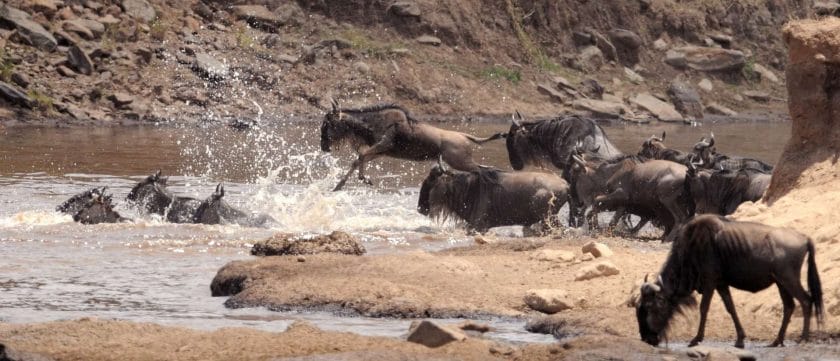
July is a good month to visit Ngorongoro Crater. The long rains will be a distant memory, but the crater shouldn’t have dried out completely, and wildlife is prolific as ever. Further afield, July is also a good month for Zanzibar beach holidays and Kilimanjaro climbs, as well as for optimistic travellers hoping to catch the dramatic Grumeti river crossing as the Serengeti wildebeest march northward through the Western Corridor. Those hoping for an uncrowded safari should be aware that July usually marks the start of the high season in northern Tanzania. Together with June, it is the chilliest month on the crater rim (average daily maximum 19°C and nightly minimum 8°C) but this shouldn’t be a deterrent – just bring plenty of warm clothing.
- Ngorongoro in August

August is one of the driest months in Ngorongoro Crater, and with the long rains having ended two to three months ago, the landscape will be looking parched, yellow and dusty. This makes it easier to see predators on the open plains, so it is great for wildlife spotting, but the hazy skies and starker scenery tends to be less rewarding than wetter time of year for photography. It is also peak safari season, with the wildebeest migration now dispersed along the Mara river in the northern Serengeti and plenty of wildlife activity in Tarangire National Park, whilst also being popular for Zanzibar beach holidays, so things tend to be quite crowded. August is the one of the chilliest months on the crater rim (average daily maximum 20°C and nightly minimum 8°C) so bring plenty of warm clothing.
- Ngorongoro in September
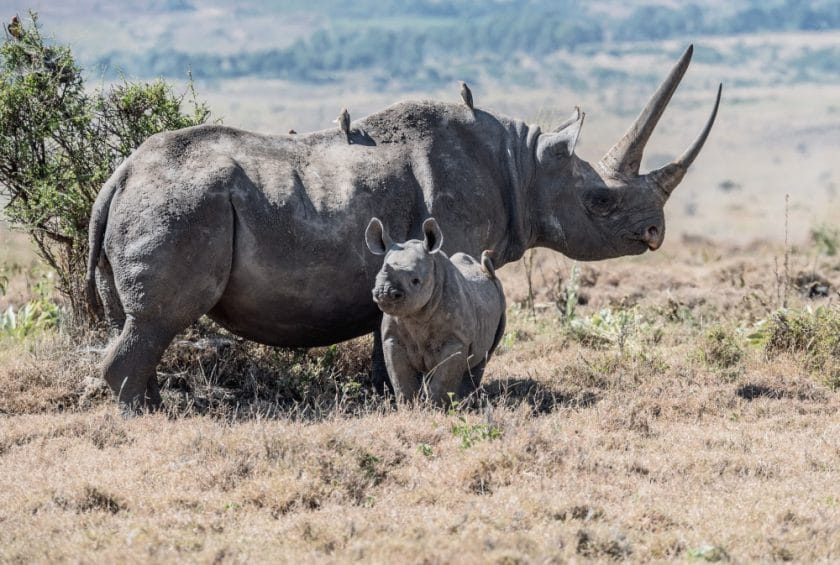
The dry season that started in May or June should continue into August, leaving parts of the crater floor looking like a dust bowl and the remaining grassland all parched and yellow. The low vegetation is great for spotting animals, with predators being at their most conspicuous, and wildlife tends to congregate close to the few remaining sources of drinking water. This is peak safari season in northern Tanzania – as is the case in August, the wildebeest migration will be concentrated around the Mara river in the northern Serengeti and there’s plenty of wildlife activity in Tarangire National Park – as well as popular for Zanzibar beach holidays, so things tend to be quite crowded. The crater rim is quite chilly in September (average daily maximum 21°C and nightly minimum 8°C) so bring plenty of warm clothing.
- Ngorongoro in October
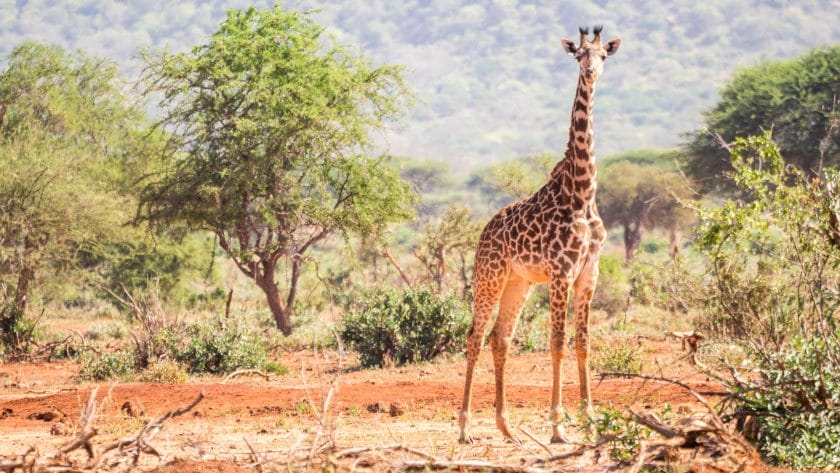
October is a month of transition in Ngorongoro Crater. The start of the month is the height of the long dry season, and much of the crater floor resembles a barren dust bowl of fine volcanic soil, while what grass remains will be low and yellowing, making it easy to spot larger predators, while grazers tend to congregate close to the few remaining sources of drinking water. The first of the short rains usually fall towards the end of October, providing welcome alleviation to the dryness, but unlikely impact negatively on tourist activities. October is peak safari season in northern Tanzania, with the wildebeest migration usually concentrated in the northern Serengeti at the start of the month but starting to travel south once the rains arrive. For those including nearby Tarangire National Park on their activity, wildlife numbers here generally peak in October. Ngorongoro tends to be quite crowded during this time. The crater rim is warms up a bit in October (average daily maximum 22°C and nightly minimum 9°C) so you should still bring plenty of warm clothing.
- Ngorongoro in November
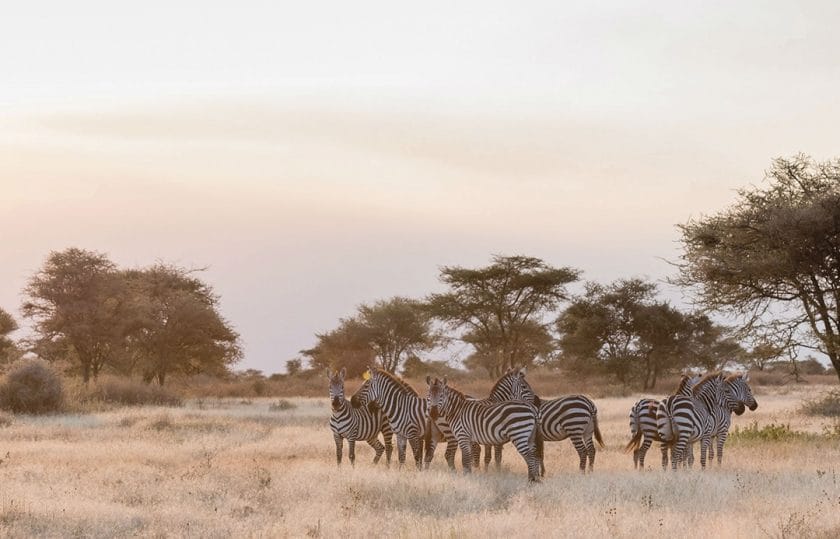
Ngorongoro Crater tends to be relatively warm and wet in November, with an average daily maximum temperature of 22°C, a nightly minimum of 10°C, and around 110mm of rainfall. These short rains are usually not so heavy as to have a negative impact on tourism, and they create an spring-like aura of regeneration to the landscape following the long dry season. Wildlife is plentiful, with the migrating herds of wildebeest and zebra pouring into the Serengeti-Ngorongoro border area after spending the dry season further north, and many animals start breeding at this time of year. For birders, the first of the Palaearctic migrants usually arrive in November. Further afield, November isn’t the greatest month for a beach holiday on Zanzibar or for climbing Kilimanjaro, so Ngorongoro tends to be less crowded than average.
- Ngorongoro in December
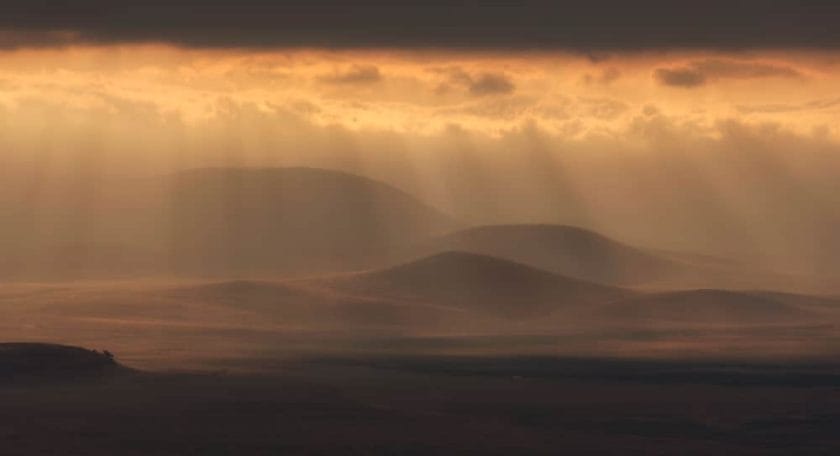
The short rains that started in October continue into December, which is actually the third wettest month in Ngorongoro, receiving an average annual rainfall of 135mm. It is also relatively warm, with average daily temperatures ranging from a minimum of 10°C to a maximum of 22°C. Coming after the long dry season, the rain tends to feel rejuvenated, lending a fresh spring-like feel to the crater and initiating plenty of breeding activity among mammals and birds alike. Wildlife is plentiful, with the migrating herds now concentrated in the Serengeti-Ngorongoro border area, and the influx of Palaearctic migrants is delightful for birders.
Our Recommended Tours in Ngorongoro Crater
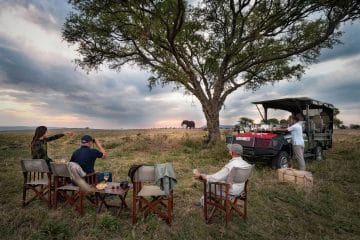
Green Season Migration Safari
From $ 5700 /USD
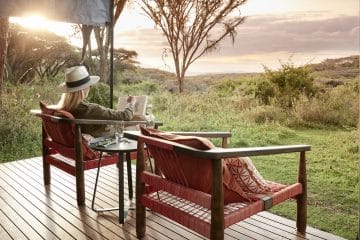
Affordable Fly-in Ngorongoro and Migration Safari
From $ 6870 /USD
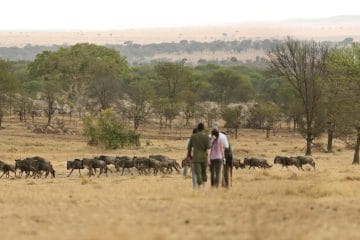
A Romantic Safari in Tanzania
From $ 7580 /USD
Looking for Something Unique?

Migration Safaris in Africa
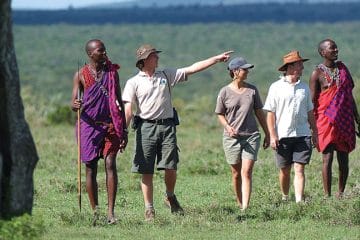
Walking Safaris in Africa
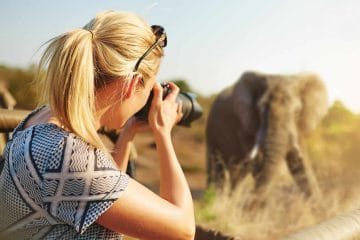
Photographic Safaris in Africa
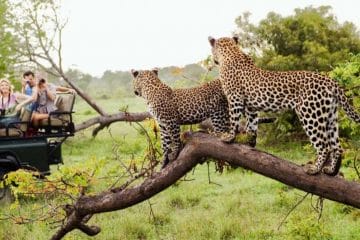
Big Five Safaris in Africa
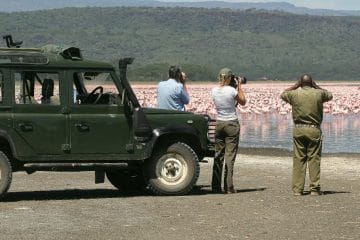
Birding Safaris in Africa
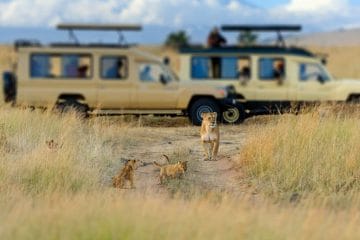
Big Cat Safaris in Africa
Why travel with us?
Recent reviews from travellers who planned and booked their africa trips with discover africa safaris, south africa and namibia safari. megan is knowledgeable, attentive, providing a top....
20 Day Cape Town, Kruger and Namibia Adventure Review
Gita Gandhi, Canada 05 Nov 2023
Excellent service.
Ngala tented Camp Review
BigMo, United States 07 Jun 2021
Matthys designed a perfect safari for my family which ensured we had....
Desert and Delta Review
Rhona, United States 15 Aug 2020
Excellent attention and bespoke travel experience..
Tanzania Great Migration Review
Ruth, United States 12 Sep 2018
Amazing moremi game reserve safari..
Moremi Game Reserve Safari Review
Karen O’Connor, United States 24 Apr 2018
Spectacularly customized honeymoon experience with discover africa.
African Honeymoon Review
Stephanie, United States 24 Sep 2016
Ready to plan your tailor-made safari.

Antoinette Booyse, Safari Travel Planner
Free safari planning advice from destination experts
Faqs about ngorongoro crater.
- This magnificent Ngorongoro crater is over 600 meters (2000 feet) deep, with high walls towering around the crater edge and a massive area of 259 km2.
- With Ngorongoro wildlife remaining in the steep-walled crater all year, the question of when to go on a Ngorongoro Crater safari is more about how many other people and vehicles you want to share the crater with.
- High visitor numbers can be expected during the dry peak season of July to September, as well as the December to February calving season that follows the November rains.
- With this in mind, the main rainy season of April to May is often regarded as the best time to visit the Ngorongoro Crater because there are far fewer visitors and the crater is lush and green in comparison to the dusty dry-season landscape.
- The Ngorongoro Crater is a massive caldera formed over 2.5 million years ago when a volcano the size of Mount Kilimanjaro erupted and then collapsed on itself.
Our Recommended Activities in Ngorongoro Crater
- Maasai Visits
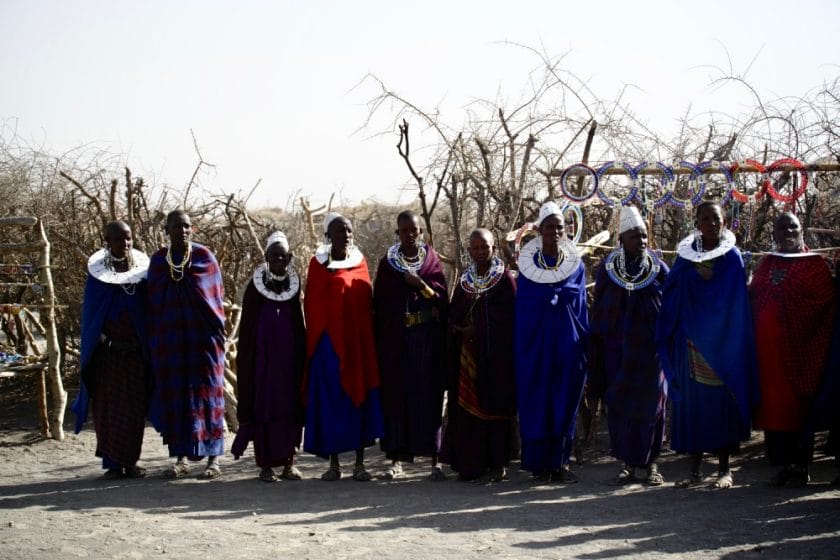
Ngorongoro Conservation Area is one of the last places in Africa where large herds of wildlife still roam alongside people. The people in question are the pastoralist Maasai, staunch traditionalists renowned for their ongoing adherence to a cattle-herding lifestyle and distinctive attire of toga-like red blankets, ochre-dyed hair and beaded jewellery. Several Maasai ‘cultural villages’ scattered in and around Ngorongoro Conservation Area now cater to tourists, and while these manyattas admittedly offer a slightly contrived the experience, all are longstanding Maasai settlements whose inhabitants live a largely traditional lifestyle – and the opportunity to meet, interact with and photograph these proud and charismatic people (whose traditional respect for the local wildlife is the main reason why so much of it still survives in Maasailand) is not to be missed.
See Ngorongoro Crater in Your Comfort
- Affordable Safari in the Ngorongoro
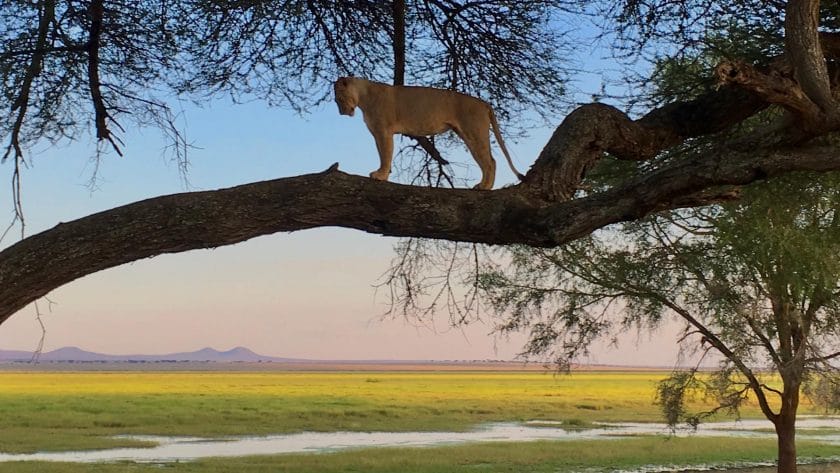
Affordability is a relative thing when it comes to Ngorongoro and the other parks along the northern Tanzania safari circuit. All the parks are serviced by mid-range lodges but these tend to charge rack rates that would be considered upmarket in most other contexts. With Ngorongoro specifically, a good way to keep things affordable is to stay in or around Karatu – although it is less atmospheric than sleeping on the crater rim. Rooms in terms of quality are probably 50% cheaper outside the conservation area, and there are even a few genuine mid-range options that offer simple but comfortable accommodation at wallet-friendly rates. Accommodation and meals aside, most costs associated with an Ngorongoro or northern Tanzania safari (for instance, fuel, driver and conservation fees) are pretty much the same irrespective of whether it is labelled a budget, mid-range or upmarket safari, but the ‘per person’ cost of a safari will decrease significantly if these are split between a group of four or five like-minded friends or family rather than a solo traveller or couple.
- Budget Ngorongoro Safari
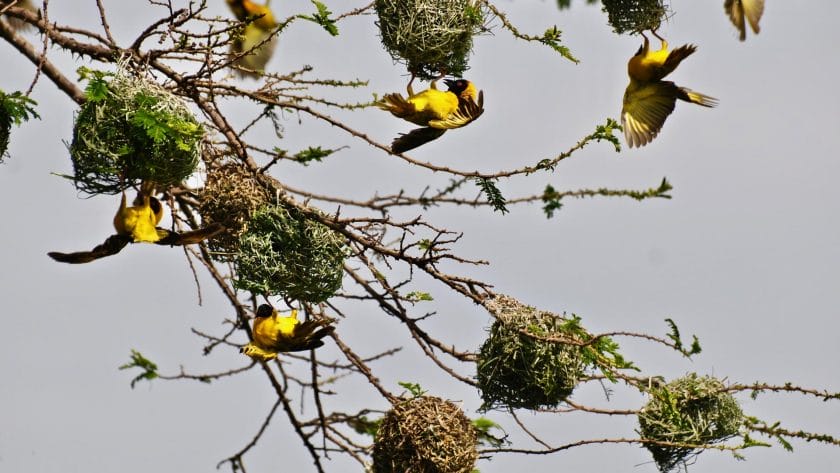
The Ngorongoro Crater cannot be considered a budget destination. The conservation authority charges a high daily entrance fee and crater service fee and access is only realistic in a sturdy and well-maintained 4×4 with an experienced local driver, and accommodation on the crater rim and in nearby Karati is all pretty pricey. The best way to keep down costs is to camp, either at the official campsite on the crater rim (stunning location, but expensive, with limited amenities, and very cold at night) or at one of several equipped but less attractive private sites close to Karati. It will also cut the price significantly if you join or try to put together a group of four of five like-minded travellers, so that transport-associated costs can be split between several people, bearing in mind that most itineraries would also take in a couple of other safari destinations, for instance Serengeti, Tarangire and/or Lake Manyara National Park.
- Luxury Safari in Ngorongoro
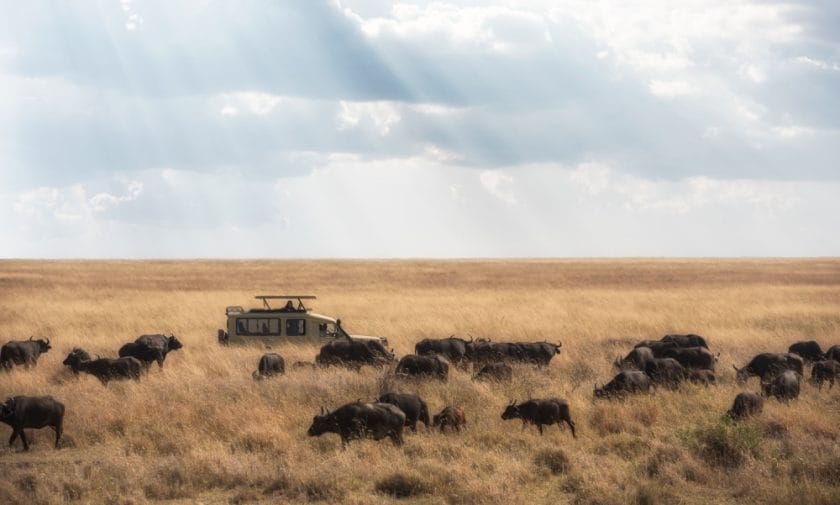
Northern Tanzania boasts some of the most luxurious, exclusive and expensive lodges anywhere on the African safari circuit. Typically, these offer packages inclusive of world-class cuisine, house wines and beer, and game drives with guides who boast a higher level of expertise and far greater local knowledge than the average jobbing safari driver. These all-inclusive lodges also tend to cater to a clientele willing to pay more to fly between lodges rather than to drive along the long, bumpy, spine-jarring roads characteristic of the region. It should be noted that exclusivity and luxury are not always synonymous in northern Tanzania: some of the region’s most prestigious camps and lodges are truly world class in every respect, but others are semi-permanent or mobile tented camps whose main selling point is their remote, down-to-earth and exclusive atmosphere rather than five-star amenities.
Who is Travelling to Ngorongoro Crater with you?
- Family Safari in the Ngorongoro
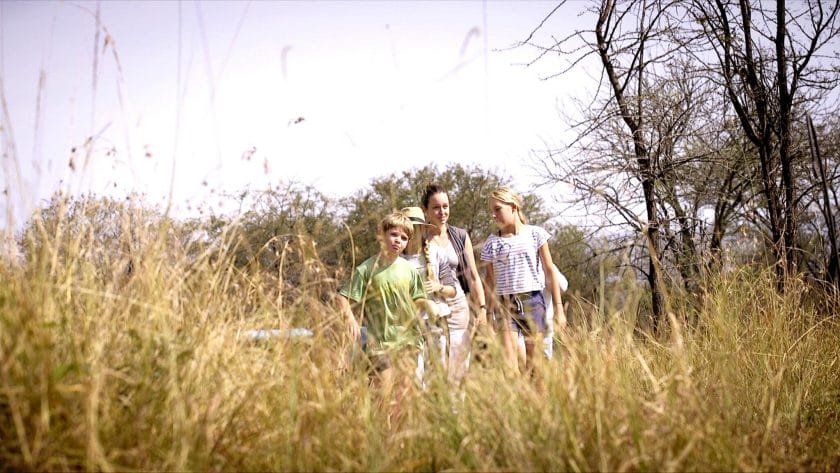
Ngorongoro and the other reserves that comprise Tanzania’s northern safari circuit are well suited to family and small group safaris. Cost-wise, since almost all safaris are undertaken in 4x4s with pop-up tops, the optimum group size is four or five individuals, though larger groups can always be split between two or more vehicles. It is generally a good idea for groups to be reasonably compatible in terms of previous safari experience and special interests – repeat safari goers often have different priorities than first-timers, while passionate birdwatchers or photographers are likely to get up the noses of less dedicated fellow passengers. For this reason, unless your budget absolutely dictates it, we would recommend against joining a group safari with strangers.
- Honeymoon Safari in the Ngorongoro
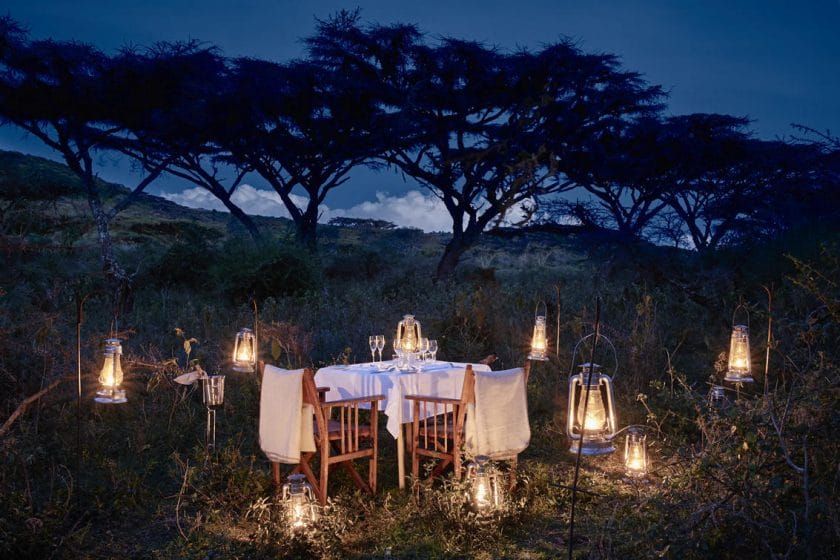
Bespoke safaris are the name of the game in Tanzania, and probably half of the open-topped 4x4s you see in Ngorongoro and elsewhere on the northern safari circuit are occupied by one couple. In many respects, the best way to explore the area is with a like-minded partner rather than a larger group with more divergent interests and temperaments. It is also a more spacious arrangement than cramming four or more passengers into one vehicle. For honeymooners, the Ngorongoro Crater rim must one of the most romantic and memorable settings imaginable. While long dusty game drives on a chilly highland morning watching lions devour gazelles or elephants depositing their heavyweight stools on the roadside might not be everyone’s cup of romance, the crater rim does boast a couple of lodges whose honeymoon facilities live up to the superb setting. A popular option with honeymooners to Tanzania is a few days on safari taking in Ngorongoro and the greater Serengeti area, or even a sojourn into Kenya if you have the time and budget.
- Solo Travel to the Ngorongoro
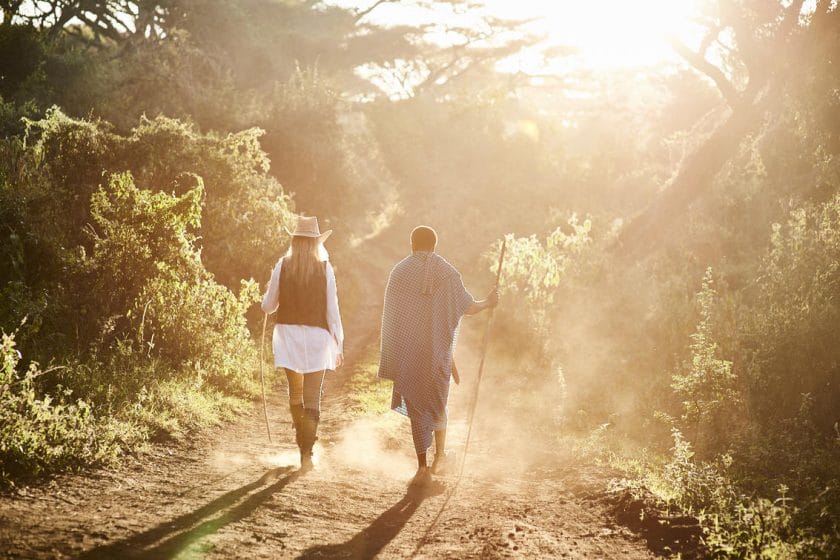
Very few people visit Ngorongoro solo. The main reason for this is presumably because a solo safari in northern Tanzania works out to be so much more expensive per person than it does for a couple or a small group. That said, if cost is not an obstacle, there is absolutely no reason why you couldn’t do a solo safari to Ngorongoro and elsewhere in Tanzania. Those actively seeking company along the way might do best to fly between the sort of exclusive lodges that offer all-inclusive packages, shared game drives and a common dining experience. Those that prefer their own company might prefer to book a bespoke road safari with their own driver/guide throughout. Special interest groups for which a solo safari might be preferable to joining a group safari are photographers and birdwatchers who want to pursue their passion without having to compromise to allow for the requirements of more generalist safari goers.
What You Need To Know
- Welcome to the Ngorongoro Crater
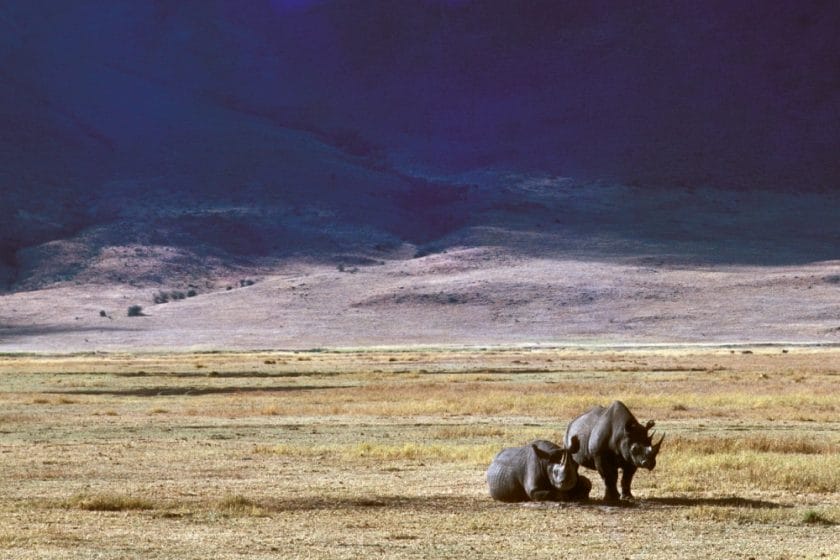
The Ngorongoro Conservation Area is the largest unbroken, unflooded volcanic caldera in the world. It is a scenic showstopper that extends across an astonishing 260 square kilometres. The crater is hemmed in on all sides by sheer craggy walls that rise up to 600m above the floor. The view from the lushly forested rim is utterly stupendous and would justify a visit to Ngorongoro in its own right. But this spectacular crater also stands as one of Africa’s most alluring safari destinations, supporting solid populations of all of the Big Five (elephant, lion, leopard, black rhino and buffalo), plus a host of other iconic large mammals, in a lush and scenic landscape that frequently draws comparisons to the metaphorical “Garden of Eden”. Extending eastward from its border with the Serengeti National Park, the 8,292-square-kilometre Ngorongoro Conservation Area forms part of the greater Serengeti ecosystem, and its western plains lie along a migration route followed annually by some 2,5 million wildebeest and other ungulates. The eastern part of the conservation area comprises the Crater Highlands, a geologically spectacular region of volcanic peaks and craters formed by the same tectonic forces that created the Great Rift Valley below. Most of the crater highlands stand above the 2,000m contour, and while the loftiest peak, Lolmalasin, only ranks third among Tanzania’s mountains (after Mount Kilimanjaro and Mount Meru), there is no higher summit in any of the dozen African countries that lie to its south.
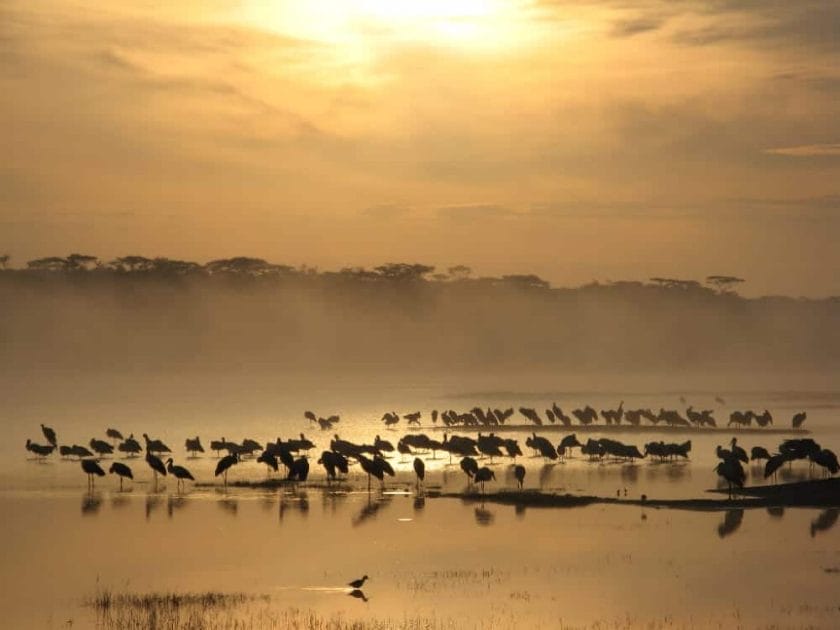
Ngorongoro Conservation Area was inscribed as a UNESCO World Heritage Site in 1979. It is one of only 38 such sites worldwide to be listed on mixed natural and cultural criteria. In addition to its staggering volcanic scenery and profuse wildlife, the conservation area contains many archaeological sites of great international importance. Most notable among these is Oldupai Gorge, where Richard and Mary Leakey discovered the game-changing , 1,75 million-year-old fossil jawbone nicknamed Nutcracker Man in 1959. Nearby, the three-million-year-old Laetoli footprints are the most ancient hominid tracks ever found. Another striking feature of Ngorongoro Conservation Area is that among African game reserves of comparable stature, it still supports significant human communities, comprised mainly of traditionalist Maasai and Datoga pastoralists and Hadza hunter-gatherers, all of whom co-exist reasonably harmoniously alongside the prodigious wildlife.
- Wildlife in the Ngorongoro Crater
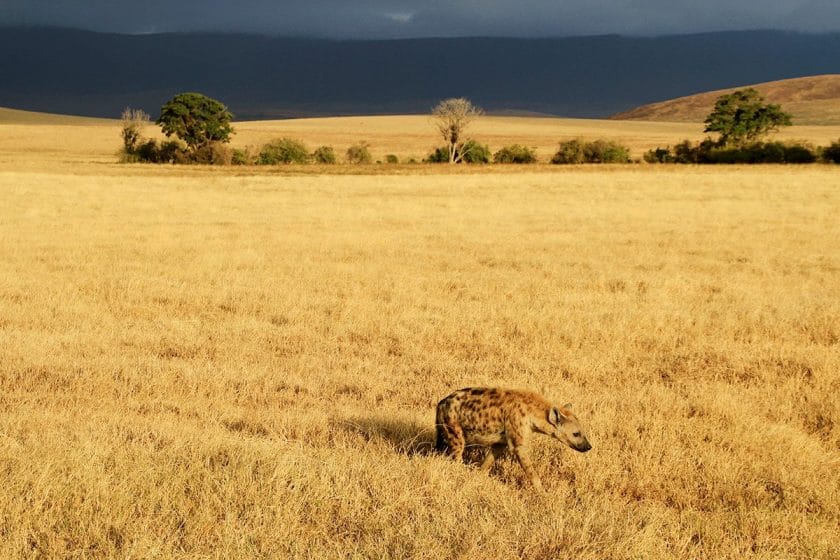
The game viewing centre piece of Ngorongoro Conservation Area is the grassy floor that stands at an altitude of 1,800m. T he crater is dominated by a cover of open savannah that looks lush and green during the rainy season but is altogether dustier and more windswept during drier months. Important micro habitats within the crater floor include the fever-tree forest at Lerai, the shallow saline Lake Magadi, the lush reed-fringed Gorigor Swamp, and a permanent hippo pool fed by Ngoitokitok Springs. The open grasslands of the crater floor is home to immense concentrations of grazing antelops all year through, with numbers peaking between December and May, the main rainy season. Most common are blue wildebeest and Burchell’s zebra, resident populations of which are estimated at 10,000 and 5,000 respectively. Wildebeest and zebra are commonly seen together and/or in the company of other grazers such as the diminutive Thomson’s gazelle, the larger and longer-horned Grant’s gazelle, and the rather doleful looking topi and Coke’s hartebeest). Other less numerous antelopes include the handsome Defassa waterbuck (which differs from the common waterbuck in having a redder tinge to the coat and a full white rump), the secretive bushbuck, and the massive eland, all of which are most commonly seen in the vicinity of Lerai Forest or swampy areas.
The crater floor supports significant populations of all the Big Five. Most commonly the African buffalo, large herds of which are often seen marching across the crater floor in search of grazing or water. Least likely to be seen is the leopard, which is resident on the crater floor, but only in small numbers due to a lack of suitable habitat, and tends to be retiring and secretive. Ngorongoro Crater serves as something of a retirement ground for old elephant bulls, many of which sport outsized tusks to dimensions now seldom seen in parts of Africa that have suffered from commercial poaching in recent decades. Lerai Forest and the nearby Gorigor Swamp are the favoured haunt of these mighty male tuskers, up to 70 of which are resident at any given time. Oddly, no elephant breeding herds are resident on the crater, though females and family herds do pass through from time to time.

Ngorongoro Crater is one of the best places in East Africa to look for the black rhino, an endangered species with a very restricted presence in Tanzania. Between 1964 and 1992, the crater’s resident population of these cumbersome beasts decreased from an estimated 100 individuals to no more than 10 as a result of poaching. Since then, the local rhino population and the diversity of the gene pool has been boosted by the introduction of several individuals from South Africa, though the authorities are reluctant to publicise actual numbers. All the crater’s rhinos have been fitted with a tracking device in their horns, in order to monitor their movements and to discourage poachers. They tend to range between the Lerai Forest and Lake Magadi, browsing in the latter by night and then moving into more open terrain by day. Their unusually pale coloration is attributable to a predilection for bathing in saline Lake Magadi and rolling in the fringing salt flats. The floor of Ngorongoro Crater reputedly supports Africa’s densest concentration of lions, with up to 100 individuals present in suitable conditions. That said, lion numbers do fluctuate somewhat, due to a combination of disease (the closed nature of the crater makes its inhabitants particularly vulnerable to epidemics), emigration from and immigration to the surrounding highlands, and occasional pride takeovers that often result in the new dominant male killing all unrelated cubs and adolescents. It would be unusual to spend a day in the crater and not see any lions, which are generally very relaxed around vehicles, though they might be encountered just about anywhere so it is difficult to predict where you might find them.

Other predators are well represented too. Most populous is the spotted hyena, which is Africa’s second largest carnivore after the lion, and tends to be less dependent on scavenging than is popularly assumed. An estimated 400 individuals are resident in the crater, so you are unlikely to spend long there without stumbling across one. If you specifically want to seek out a hyena, head to the eastern shore of Lake Magadi, where they often rest up during the day, occasionally trying to sneak up and snack on the flamingos that flock the shallows. The open grasslands of the crater floor are the perfect cheetah habitat, and there are also plenty of small antelope for these feline speedsters to feed on, so it’s a bit surprising that none were present as recently as the 1990s. The most likely explanation for this is competition with the dense populations of lion and spotted hyenas, both of which will routinely chase a cheetah off a fresh kill. Since 2000, however, cheetahs have recolonised the crater floor and they are now quite commonly seen stalking through the plains in search of gazelle.
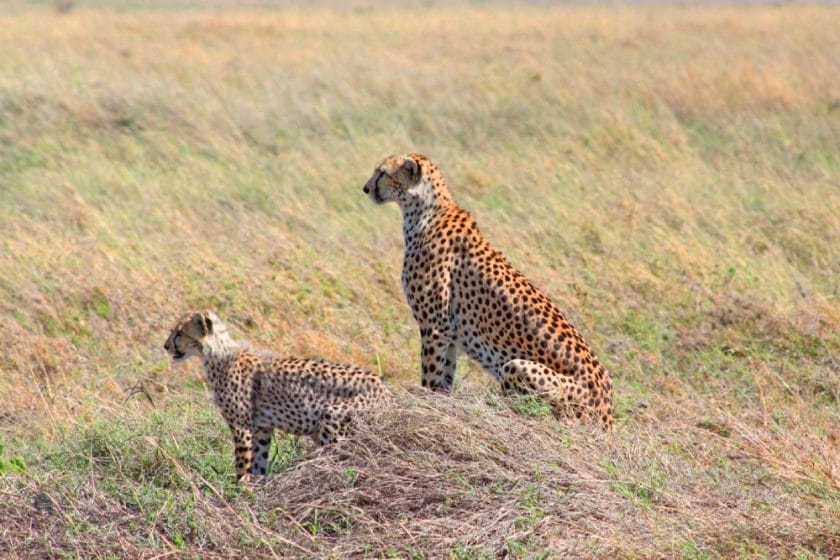
Other common predators are the golden jackal, black-backed jackal and bat-eared fox, with the former being most likely to be encountered due to its relatively diurnal habits. By contrast, giraffe and impala, both common on the surrounding plains, are totally absent from the crater floor. In the case of the giraffe, this is possibly attributable to a lack of suitable browsing fodder, or to the difficulty of descending the steep crater walls, but the absence of impala is a mystery. ### Birds A high proportion of the 550-plus bird species recorded in the Ngorongoro Conservation Area inhabit the crater floor. For casual visitors, a highlight is the large flocks of lesser and greater flamingo that aggregate in Lake Magadi, tinting its margins pink from a distance. Common grassland specialists include ostrich (the world’s largest bird), Kori bustard (the world’s heaviest flying bird, known for its spectacular mating dance) and a host of smaller ground birds including the exquisite rosy-throated longclaw, the babbler-like rufous-tailed weaver (a species endemic to the Tanzanian interior) and various larks, wheatears and pipits. Moist grassland often supports flocks of the lovely grey crowned crane and (in the rainy season) huge flocks of migrant white, black and Adbim’s storks. Lerai forest is the place to seek out striking woodland specialists such as Hildebrandt’s starling, green wood hoopoe and Fischer’s lovebird.
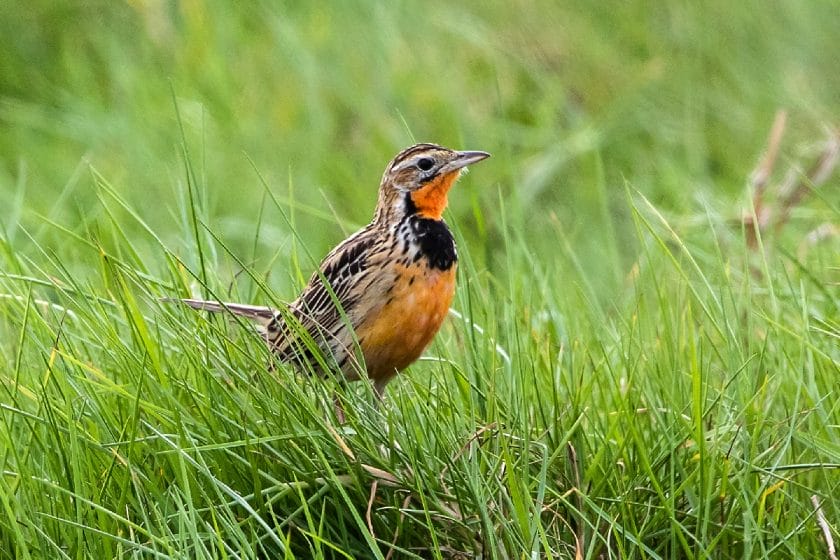
Raptors are abundant. The most conspicuous species is the handsome augur buzzard, sometimes seen here in its unusual melanistic form, but always distinguishable by its reddish tail. The crater floor is ideal habitat for the secretary bird, an anomalous long-legged terrestrial hunter that stands up to 1.5m tall and feeds mainly on snakes, which it stamps to death in a bizarre flailing dance. The most interesting of seven vultures recorded in the crater is the Egyptian vulture, a localised species whose who know to crack open ostrich eggs by holding a stone in its beak, making it the only avian tool-user. Finally, on the subject of scavenging birds, watch out for the black kites that haunt the picnic site at Ngoitokitok Springs, swooping down on unprepared tourists to snatch the food from their hands! The Afromontane forest that swathes the crater rim supports a very different flora and fauna to the crater floor. Mammals are thinly distributed, but the forest does support a dense population of elusive leopards, plenty of blue monkeys and bushbuck, as well as the secretive bushpig and the localised tree hyrax (which is more difficult to see than the rock hyrax, but reveals its presence with an far-carrying eerie nocturnal call that sounds like it comes from a much larger creature). Colourful forest birds often seen in lodge gardens on the crater rim include bar-tailed trogon, cinnamon-chested bee-eater, baglafecht weaver, tacazze sunbird, malachite sunbird, golden-winged sunbird and Schalow’s turaco.
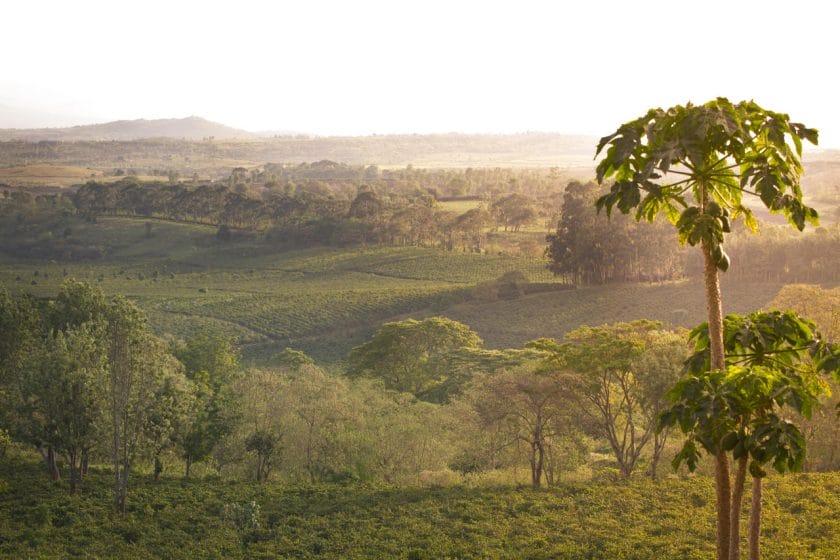
Elsewhere the crater highlands support a cover of open Afromontane grasslands where low volumes of grazers such as buffalo and zebra coexist with domestic cattle owned by the red-robed Maasai who still pursue their traditional pastoral lifestyle in the area. Game is rather more prolific in the relatively low-lying short-grass plains that stretch west from the base of the Crater Highlands to the Serengeti border. Indeed, this Serengeti-Ngorongoro border region is the main focal point of the annual Serengeti migration of more than two million wildebeest and other ungulates during the rainy season (typically from late November to early May) and it is also where the wildebeest calving takes place over February.
- Ngorongoro Travel Tips
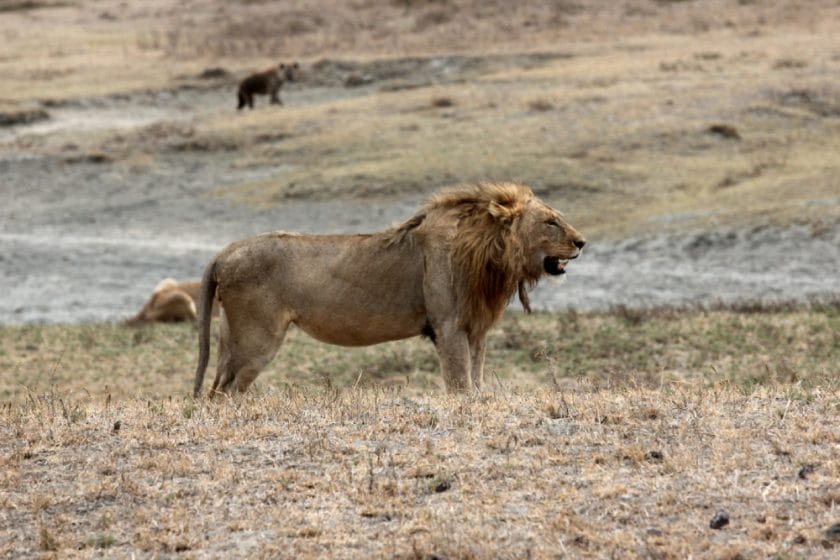
Ngorongoro Conservation Area can only realistically be explored in a solid 4×4. The 150km road from the northern Tanzanian ‘safari capital’ Arusha to Lodware Entrance Gate, the only access point along the eastern border, is now surfaced in its entirety, and can be covered in less than three hours. All roads within the conservation are unsurfaced, however, and most – including the bumpy descent and ascent tracks to the crater and corrugated strip of fine compacted ash running west to Serengeti National Park – are pretty rough going. Tanzania’s safari industry is not really geared towards a self-drive approach, and the roads are unsuited to large coach tours, which means that almost all visitors to Ngorongoro either join a bespoke or small-group safari with a local driver-guide, or fly from Arusha to a camp offering a package inclusive of game drives. In theory, Ngorongoro Crater could be visited on a standalone one or two-night safari out of Arusha, but in practice it usually forms part of a longer (5-14 day) safari taking in some or all of the other highlights of the northern Tanzania safari circuit i.e. Serengeti National Park, Lake Manyara National Park, Tarangire National Park and Arusha National Park. – A day trip to Ngorongoro Crater is worth planning carefully. Vehicles are forbidden from entering the crater before 07h00, and they must leave before 18h00, and a hefty ‘crater service fee’ is payable every time a vehicle enter the crater. This combination of rulings has forged a situation where most safaris breakfast at their lodge before going on a game drive and carry a picnic lunch. Far preferable, however, to take a packed breakfast and lunch, allowing you to get down into the crater as early as possible, partly because early morning offers the best photographic light, but also because the place is at its most magical before the tourist hordes descend, with the main procession usually starting the descent from 08h00 onwards.
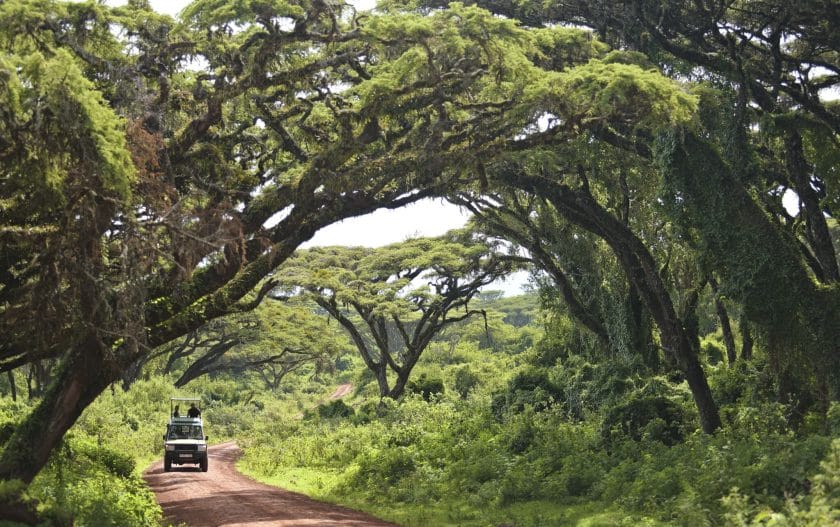
The conservation authority forbids tourists from staying overnight within Ngorongoro Crater. But several tourist lodges and tented camps are perched on the lofty crater rim, offering fine views over the floor and its teeming wildlife, and there is also a campsite. Plenty of accommodation is also available in and around the town of Karatu, which straddles the main surfaced road from Arusha about 15 minutes’ drive from Lodware Entrance Gate. The lodges on the crater rim are preferable in terms of views and for placing you as close as possible to the heart of the action, but accommodation in and around Karatu tends to offer better value for money. Either way, the elevated altitude of the crater rim and Karatu largely negate their near-equatorial location and nights can be decidedly chilly, so bring plenty of warm clothing to wear in the evening and early morning game drives.
- Weather in Ngorongoro
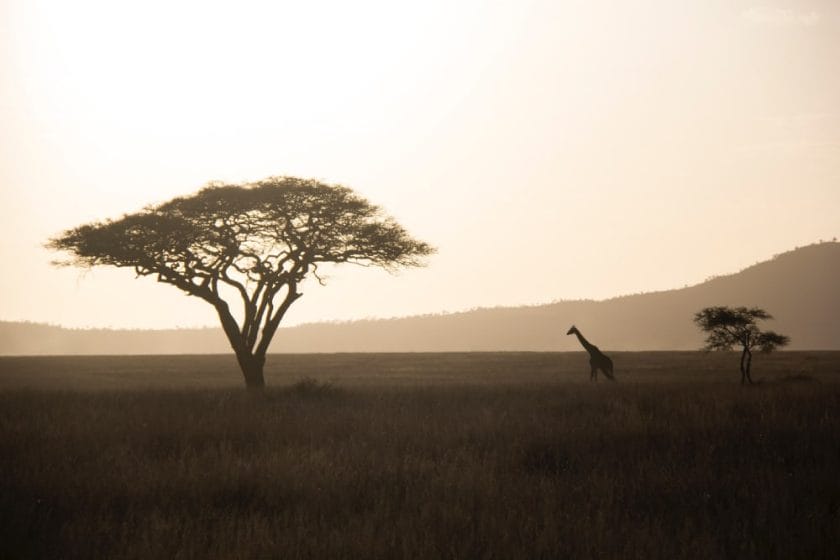
Although Ngorongoro and the Crater Highlands stand in the heart of the tropics less than 200km south of the equator, the high elevation (mostly above 2,000m) means the climate is surprisingly cool, seldom rising above 25°C by day and more often than not dropping to below 10°C by night. It tends to be sunny by day, but cloudy weather is far from unusual and the gap in altitude between the crater floor and rim usually results in a significant build-up of mist in the early mornings. Ngorongoro’s tropical location means there is relatively little seasonal variation in average minimum and maximum temperatures, though the period from October to March tends to be a few degrees warmer than the closest months of May to August. Rainfall is far more seasonal, since it is largely associated with the moist trade winds that blow inland from the Indian Ocean over November to May. More than 80 percent of the annual precipitation of 1,000mm falls over these months, with December. March and especially April being the wettest months. By contrast, rainfall over June to September stands at less than 20mm per month. Despite this, it is fine to visit Ngorongoro at any time of year and there are several more compelling factors in deciding your timing than climate. Because the crater can get quite crowded with safari vehicles during peak seasons, those seeking a relatively untrammeled atmosphere might consider aiming for April and May, which are the quietest months for tourism, not only both in Ngorongoro but in all the other reserves along the northern Tanzania safari circuit.
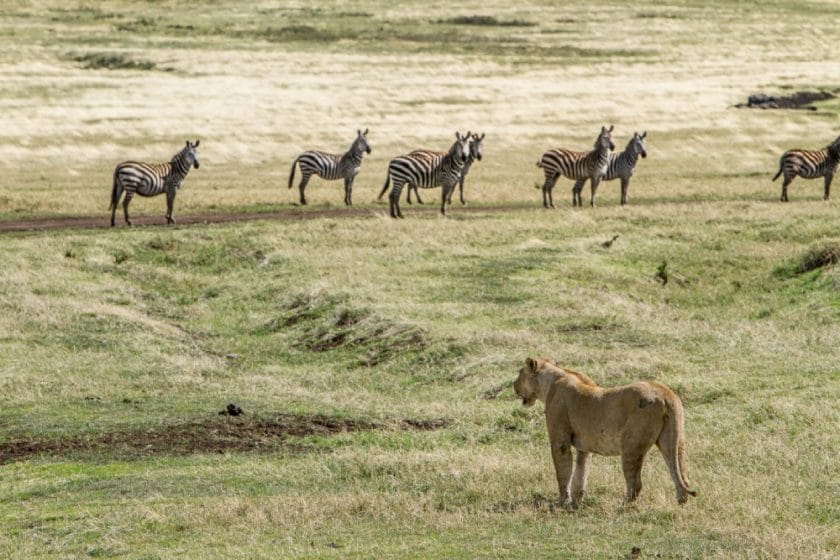
Since Ngorongoro is usually just a one- or two-night stop on a more extended holiday in Tanzania, the timing of a visit should also allow for seasonal factors at other sites on the itinerary. Those continuing on to the Serengeti might opt to time their safari to try to catch the wildebeest calving season in the south (February) or the peak period for river crossings in the north (August and September), while beach lovers on a safari-and-sand package would almost certainly want to avoid peak monsoon season on Zanzibar and the coast (April and May) and hikers tackling Kilimanjaro should aim to climb during one of its dry seasons (January to March or June to October).
- Why Ngorongoro Crater
Registered Members of these Organizations
USEFUL LINKS
- African Safaris
- African Safari Tours
- African Safari Lodges
- Why Book with us?
- Content Collaborations
- Safari Cost Estimator Tool
- Wildebeest Migration
- Privacy Policy
- Website Terms of Use
POPULAR COUNTRIES
- View All Countries
- South Africa Safaris
- Botswana Safaris
- Kenya Safaris
- Tanzania Safaris
- Namibia Safaris
- Rwanda Safaris
- Uganda Safaris
- Zambia Safaris
- Zimbabwe Safaris
POPULAR DESTINATIONS
- View All Destinations
- Cape Town Holidays
- Kruger Safaris
- Victoria Falls Safaris
- Masai Mara Safaris
- Serengeti Safaris
- Etosha Safaris
- Chobe Safaris
- Okavango Delta Safaris
TRAVEL BLOGS
- A Family Safari Guide to Health and Wellness
- WTM Africa 2024: Increased Global Interest and Sustainable Tourism Focus
- 10 Birds to Spot while on Safari in Tanzania
- Lufthansa Ups Direct Flights to South Africa
- Cape of Storms: What You Need to Know about Cape Town’s Weather
DISCOVER AFRICA SAFARIS
2nd floor, Tygervalley Chambers One, 27 Willie van Schoor Avenue, Bellville, Cape Town , 7530
Ngorongoro Crater safari | Travel guide
The Ngorongoro Crater in the Great Rift Valley in northern Tanzania is unique as it is the world’s largest intact volcanic caldera, a cauldron-like hollow formed in the volcano with a crater floor covering over 100 sq. miles and 0.4 miles deep.
This incredible crater, a UNESCO world heritage site in the Ngorongoro Conservation Area, is often referred to as ‘Africa’s garden of Eden’, due to the sheer volumes of animals and wildlife found there.
It is also one of the best places to spot critically endangered animals like black rhinos, golden cats, wild hunting dogs and see the amazing colours, abundance of wildlife and huge variety of flora makes the crater a natural wonder.
Table of Contents
Why visit the Ngorongoro Crater?
Safari in ngorongoro.
One of the Seven Natural Wonders of Africa, a safari at Ngorongoro is a must-do on a trip to Tanzania due to the incredible landscape and wildlife on display.
The crater was formed when a large volcano erupted and collapsed on itself with this explosion creating a caldera. Thousands of animals are attracted to the crater to feed on the abundant green grass and water with birds also attracted in their droves to the lush vegetation along the lakesides.
There are few places that have wildlife variety on this level and it is not so unusual to see the Big Five in one day at Ngorongoro with over 25,000 large animals found in the crater. The crater floor is also home to old elephant bulls that boast some of Africa’s largest tusks. The giant creatures are often found flaunting their ivory tusks near the Lerai Forest.
In addition, the accommodation here is excellent with numerous options from tented camps, luxury lodges to camping grounds.
Visitors will be amazed by the variety and numbers of animals they will encounter including the big five namely the African bush elephant, the lion, rhinoceros, leopard and the African buffalo.
Over 20,000 large animals can be found here including 7,000 wildebeest, 6,000 black spotted hyenas, 4,000 zebras, 300 Elephants and 55 Lions and many more wildlife.
The crater is one of the few places where visitors can easily see black rhinos in close proximity in their natural habitat.
Animals are free to enter or leave the crater, but many of them stay for plentiful water and grazing on the crater floor. Also on the crater floor are swamps, providing water and habitat for elephants and hippos as well as numerous smaller creatures such as frogs, snakes, and serval cats.
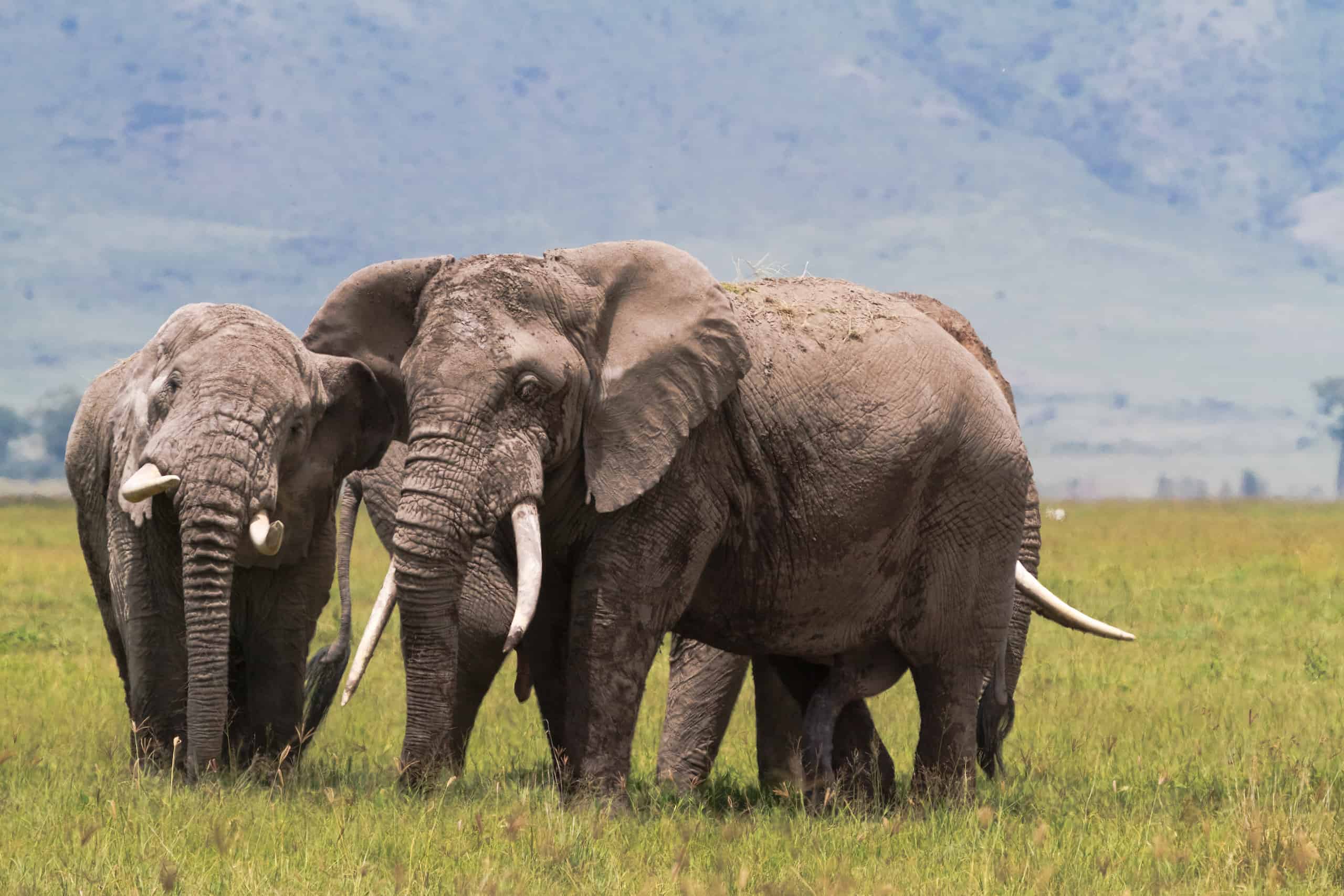
Over 500 bird species can be found here including the black kite, black-winged lapwing, Hildebrandt’s spurfowl, lesser flamingo and the Kenya rufous sparrow.
Open grassland covers most of the crater floor, turning yellow with wild flowers in June. The Makat soda lake is a great attraction for flamingos and other water birds.
Visitors can find long grasslands, high open moorland and the remains of dense evergreen montane forests covering the steep slopes. Highland trees include peacock flower Albizzia gummifera and yellowwood.
Elephants often graze in the forest shade during midday, emerging into the open plains during the early morning.
The small forest patches on the crater floor are home to leopards, monkeys, baboons and antelopes such as waterbucks and bushbuck.
Other activities at the Ngorongoro Crater
There are multiple activities and things to do in Tanzania that can be added to your safari including walking safaris . Here are some other activities which visitors can consider during their visit:
- Photo safaris: As safari destinations go, visitors on a photo safari will be in dreamland at Ngorongoro where small groups of just 3 travellers can share a luxury photography tour with like-minded individuals and enjoy big game viewing whilst capturing their favourite moments.
- Meet the Maasai tribe: Discover the homes and traditions of the Maasai people and attend traditional dance performances and meet the elders.
- Walking safaris: Explore wildlife and private concessions on foot, an authentic and economical means of exploring wildlife in the Ngorongoro and Lake Eyasi.
- Experience Bushmen in Tanzania: Discover how bushmen live and fight for food as well as their culture and food, an authentic Tanzania safari experience.
- Hike the Empakaai crater: A full day hike exploring the Empakaai crater wandering through beautiful forests and exploring incredible birdlife.
- Ngorongoro luxury safari tours: With excellent game viewing, Ngorongoro also offers some of the very best luxury lodges in the world. With incredible décor, modern decorated suites, excellent views, superb service and food, these intimate safari experiences have it all.
- 4×4 safari: A stunning self-drive Ngorongoro journey will allow visitors to enjoy the very best wildlife at their own pace.
- Hot air balloon tour: A scenic hot air balloon flight over the landscape offers a unique perspective on the incredible wildlife and crater.
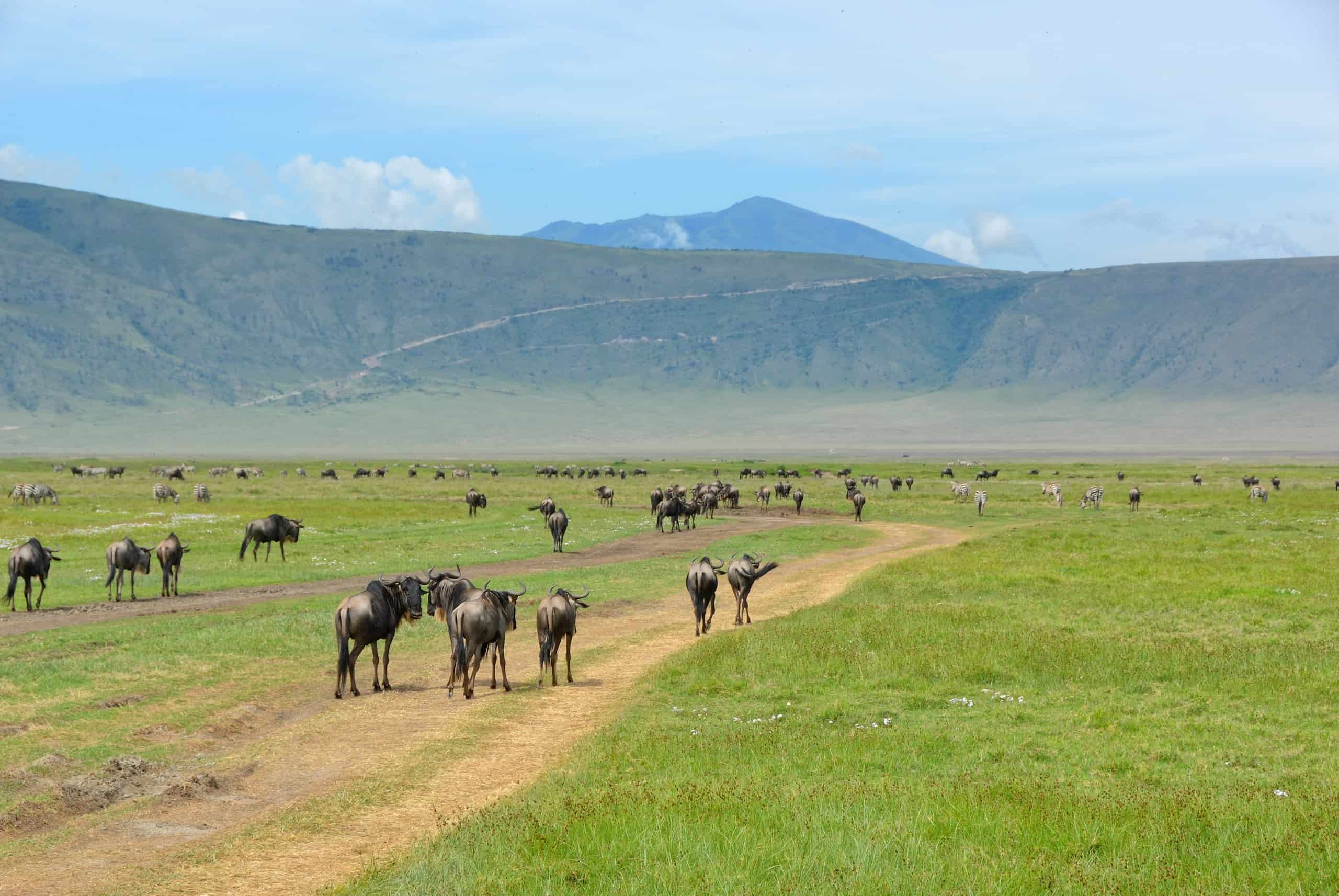
How to get to the Ngorongoro Crater?
By plane .
Access to the Ngorongoro Crater is typically made via a flight and road transfer. Typically, tourists will fly into Kilimanjaro International Airport (JRO), 29 miles from the town of Arusha. From Arusha, it is a three hour drive to Ngorongoro.
It is also possible to fly into Julius Nyerere International Airport (DAR), near Dar es Salaam and fly on to Arusha Airport (ARK) or Kilimanjaro International Airport (JRO). Visitors often combine trips to Ngorongoro with the Serengeti National Park .
International flights into the country can also be made arriving into Dar es Salaam (DAR) airport for visitors wondering how to get to Tanzania . DAR airport is located 18km south of Dar Es Salaam and a Tanzania visa and certain vaccinations may be required to enter the country.
From the capital Dodoma, the Ngorongoro Crater is 290 miles/8 hours driving, a less popular option given the time required.
Tariffs & Regulations
Entrance fee.
Prices per person per day:
- USD $60 per adult to enter the conservation area
- USD $10 per child (aged 5 – 16)
- Fixed price per vehicle weight of between $200 – $300
The gates into the Ngorongoro Conservation Area open at 6am and close at 7pm.
Carrying a small amount of Tanzanian currency , the Tanzania Shilling (TZS) is recommended as back-up when paying for items where credit card facilities are unavailable. Visitors can also review further details on overall Tanzania safari prices here .
Regulations
To visit the Ngorongoro Crater as well as the Olduvai Gorges, it is mandatory to be accompanied by an official guide and approved by the NCAA.
Visits to the crater are limited to a max duration of 6 hours.
Accommodation at the Ngorongoro Crater
Staying inside the Ngorongoro Conservation Area is possible, but the cost of accommodation can vary in price significantly. Rates mainly depend on the season and type of accommodation from lodges, manor houses, hotels and tented sites.
Typical accommodation rates range from $200 to $1,000 per person a night.
Luxury lodges
Lodges are set on the rim of the crater are exclusive and luxurious with views amongst the most spectacular in the world along with world-class service, incredible food, all luxury amenities, simply ideal for the perfect luxury safari or Ngorongoro honeymoon .
Pricing from $400 to several thousand dollars per night.

The Ngorongoro Crater Area hotels offer the perfect pillow for every person. From historic properties to boutique hotels, Ngorongoro has a wide selection for visitors to choose from.
Pricing starts from $420 dollars per night.
Tented camps
These sophisticated structures are large luxury tents on raised wooden floors with excellent guest services and meals provided, often found overlooking a wildlife-rich lagoon.
Pricing from $835 per person per night.
Manor houses
Visitors can step back in time at manor houses including Elewana The Manor at Ngorongoro with 9 luxurious cottages and the magnificent main Manor House, blending East African hospitality with old-world Afro-European architecture and decor.
Campervan
Guests on a self-drive safari with a campervan can make significant savings by sleeping in their vehicle.
Pricing starts from $80 per day.
Campsites
There are a number of affordable camping sites offering cheaper camping options for travellers on a budget including the Ngorongoro Simba Campsite.
Pricing starts from $20 per person per night.
Bars/restaurants/amenities : Lodges will typically have all meals and drinks included in the lodge package.
Useful information
- Geography: Located in the north of Tanzania, a trip to Ngorongoro Crater is often combined with a trip to the Serengeti National Park.
- Weather: Day-time temperatures range from 21C/69F to 25C/77F with the last of the rain falling in May.
- Understanding the best time to visit Tanzania is useful as this impacts flight prices and availability.
- Health: Ngorongoro lies in a lower risk area however visitors pass through areas where malaria is prevalent in order to get there. Antimalarials may be required.
Where is the Ngorongoro Crater located?
Access to the Ngorongoro Crater is made via flight and road. Tourists will fly into Kilimanjaro International Airport (JRO), a 1 hour flight from Nairobi in Kenya. From JRO, it is 29 miles to the town of Arusha. From Arusha, it is a three hour drive to Ngorongoro.
How much is the entrance fee to the Ngorongoro Crater?
USD $60 per adult & USD $10 per child (aged 5 – 16). Vehicles cost $200 – $300.
What time does the entrance gate open and close at?
The gates into the Ngorongoro Conservation Area open at 6:00 a.m. and close at 7:00 p.m.
What animals will visitors see?
The big 5 as well as wildebeest, black spotted hyenas, zebras, elephants, a large population of lions and much more.
- destinations
- experiences

- Ngorongoro Crater
- Lake Manyara
- Great Migration
- Kilimanjaro
- Mainland Coast
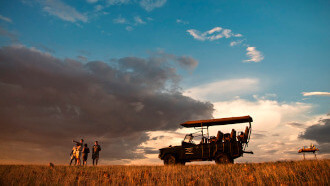
Ngorongoro Crater Safari, Tanzania
- Northern Tanzania
Ngorongoro Crater Safari

Map of Ngorongoro Crater Safari
Where to stay on the crater rim, hand picked tanzania itineraries, ngorongoro crater safaris | frequently asked questions, ngorongoro safari | animals, ngorongoro safari | activities, where to stay in the ngorongoro crater , ngorongoro crater lodge, ngorongoro crater tanzania | further reading , call the experts , client reviews.
Ngorongoro Crater Lodge - Reviews Still another suggestion by A. O. was to stay at Ngorongoro Crater 2 nights instead of the 3 we had initially scheduled. Spot on!! (We thoroughly enjoyed the Masai Village visit ) * * * * * - R Nelson
Entamanu Camp - Reviews Entamanu is gorgeous. The wind was very strong this time of the year and we were told that people have found it very uncomfortable. Didn't bother us, and we liked being closer to the park entrance so we could get the earliest start possible. At Kuro, guests told us that the Crater was too crowded and that it was not a good experience but we found that while there more jeeps than in other parks, it was still wonderful. * * * * * - M. Blanco
TALK TO ONE OF OUR EXPERTS
Map of tanzania.

- Mt. Kilimanjaro
south & west

BEACHES / ISLES
The BEST Ngorongoro Safari, Tanzania (2024 Guide)
Looking to book a Ngorongoro Safari? This is the only guide you’ll need.
I visited Ngorongoro Conservation Area on my 3-day Tanzania Safari with Altezza Travel , and this was one of the highlights of the trip!
Read on to discover everything there is to know about a safari in Ngorongoro Crater including how much it costs, where to book, and what to expect.
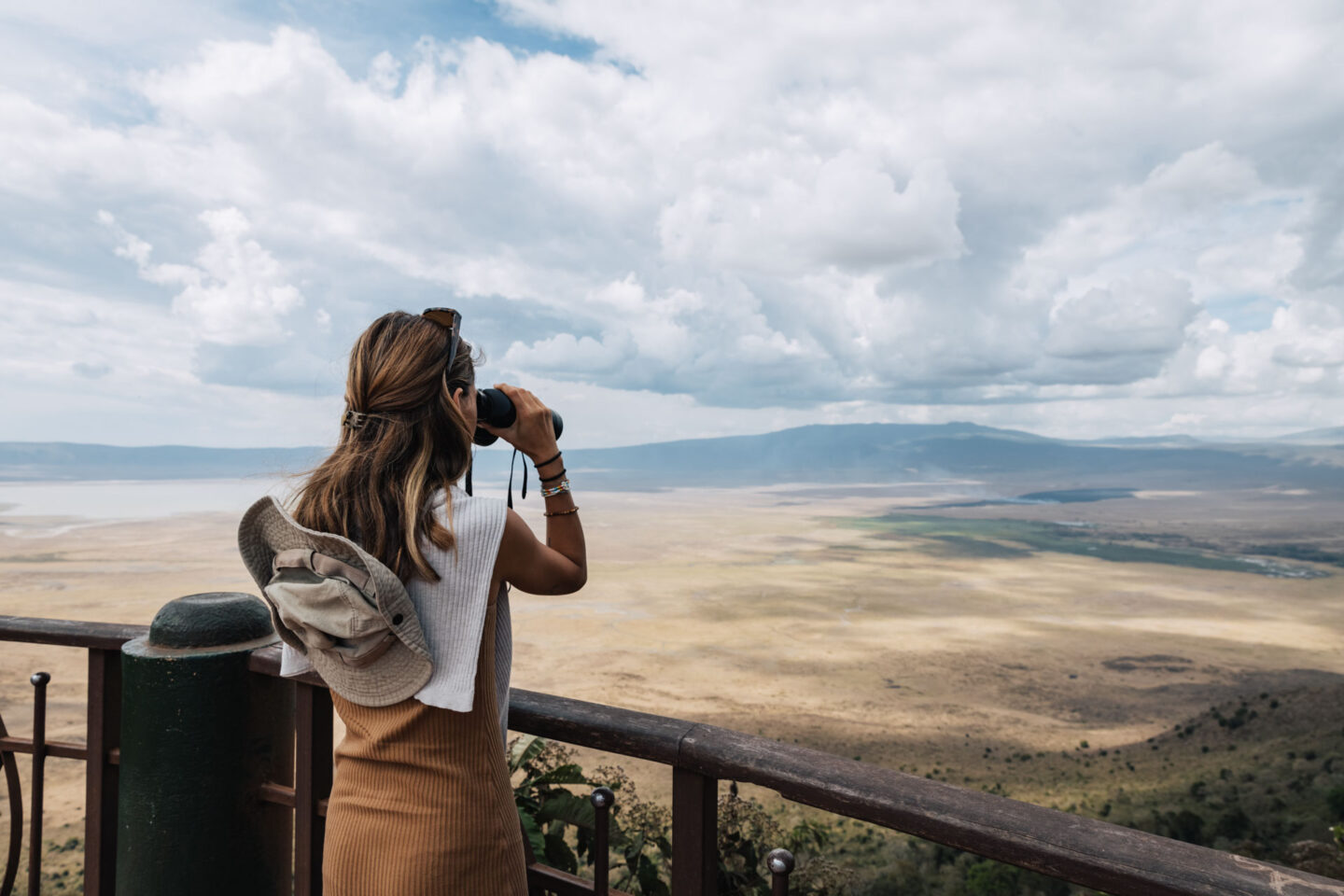
Table of Contents
QUICK ANSWERS: NGORONGORO SAFARI
Let’s start with the essentials you should know before visiting, such as where to book, how much it costs to take a safari in Ngorongoro Crater, the best time to visit, and more.
NGORONGORO SAFARI STATS
- Size : 8,292km² / 3,202mi²
- Altitude : 1,027-3,522 m / 3,369-11,555ft
- Best time to visit : June to September
- Best attractions : Ngorongoro Crater
IS NGORONGORO CRATER WORTH VISITING?
Absolutely, the Ngorongoro Crater is 100% worth visiting.
Despite potential challenges like the cost and the crowds (it’s one of the most popular spots for a safari), it’s one of the best parks in Tanzania.
Apart from the wildlife, Ngorongoro Crater offers stunning views and a unique landscape.
If you have more time available, you also have the chance to learn about, and potentially visit, the Maasai people who live in the area.
WHERE TO BOOK A NGORONGORO SAFARI?
I personally booked a 3-day private safari with Altezza Travel which included a 1-day Safari Ngorongoro, a day in Tarangire National Park, and a day in Arusha National Park.
Altezza is a premier tour operator who has extensive expertise when it comes to the service and logistics of safari tours within Tanzania’s national parks.
They have an impressive safari fleet of Land Cruisers with a convertible pop-up roof that provides a panoramic 360° view. They’re also equipped with amenities such as a fridge for your refreshments, Wi-Fi access, and power sockets.
Each safari is customizable, tailoring the ideal dream tour to align with your specific travel style and comfort preferences.
When it comes to accommodation, you’ll be presented with options that include luxurious stone-built lodges and more authentic tented lodge experiences.
Special Offer: Altezza extends a 5% discount on all Tanzania Safari to my readers when you include the code JONNYMELON during your booking inquiry.
WHAT IS THE COST OF NGORONGORO SAFARI?
The cost of a Ngorongoro safari will vary depending on your itinerary and the tour operator.
For a budget safari, you can expect to pay around $150 per person per day. On the other hand, for a more premium experience, you will find safaris for over $1,000 per person per day.
A mid-range option falls somewhere in between at around $300 to $500 per person per day.
HOW LONG DOES A SAFARI NGORONGORO TAKE?
A safari to Ngorongoro Crater is typically a one-day visit.
When entering the Ngorongoro Conservation Area, you’ll descend into the crater itself for a 6-8 game drive.
However, the Ngorongoro Conservation Area is often included as part of a longer safari package that also visits other top Tanzanian destinations like the Tarangire and Arusha National Parks.
I took a 3-day safari in Tanzania which included the national parks I mentioned above.
BEST TIME TO DO A SAFARI NGORONGORO?
The best time to visit Ngorongoro Crater for a safari depends on what you’re hoping to see and experience.
Wildlife viewing inside the crater is great almost all year long. However, you’re better off coming in the dry season from June to October for spotting animals more easily.
This period is also popular because the wildlife is more visible in arid landscapes and stays closer to water sources.
If you’re interested in seeing newborn animals, consider visiting in February or March. This is when hoofed animals like wildebeest and zebra give birth.
For those who prefer a greener landscape and fewer crowds, the wetter months of November to May might be a better choice.
In particular, the main April to May rainy season (lowest season) is often considered a great time to visit as there are fewer tourists.
MY EXPERIENCE ON THE NGORONGORO SAFARI
As I mentioned previously, I visited Ngorongoro Conservation Area as part of a 3-day safari. We arrived in the afternoon and spent one night on the crater rim at Ngorongoro Tented Camp .
The following day, we left the camp at 6 am as animals are most active in the morning, and I recommend you do the same when visiting.
From the camp, it was a quick 15-minute descent into Ngorongoro Crater.
Once we got there, it was easy to see why the crater is so famous. We saw countless animal species like buffaloes, elephants, zebras, lions, hippos, and hyenas, to name a few.
Ngorongoro is also one of the best safari locations in Tanzania to see the black rhino, and we got incredibly lucky to spot around four rhinos, including a baby rhino.
After driving around the crater and taking photos of all the fantastic wildlife, we headed to the lake for a delicious picnic lunch.
Post-lunch, we resumed the game drive for another hour before exiting the crater and making our way back to Arusha to conclude our incredible 3-day Tanzania safari.
NGORONGORO TANZANIA – FAQ
Now that you have a better idea of what to expect on a Safari Ngorongoro, below are some answers to the most frequently asked questions from first-time visitors.
HOW WAS THE NGORONGORO CRATER FORMED?
The Ngorongoro Crater was formed around 2 to 3 million years ago. It’s the world’s largest intact volcanic caldera and a UNESCO World Heritage Site .
The formation of Ngorongoro Crater is linked to the geological activity in the Great Rift Valley, a tectonic rift system running through eastern Africa.
About 2 to 3 million years ago, a large volcano approximately the size of Mount Kilimanjaro was present in this area.
After erupting several times, the magma chamber beneath the volcano was empty. Without the support from underneath, the top part of the volcano collapsed inward, creating a large caldera.
The collapse resulted in a crater that is approximately 610 meters deep, 19 kilometers wide, and covers an area of about 260 square kilometers, and is now known as Ngorongoro.
WHAT ANIMALS TO SEE ON A NGORONGORO SAFARI?
A safari in Ngorongoro Crater offers an incredible opportunity to see a wide variety of African wildlife in one place.
Below are some of the key animals you can expect to see;
- The Big Five : Ngorongoro is one of the few places in Africa where you can see all of the “Big Five” – lion, leopard, elephant, buffalo, and rhinoceros.
- Hippos : The crater’s lakes and swamps are home to large populations of hippos.
- Zebra and Wildebeest : These two species are among the most common in the crater, and you can often see large herds roaming around.
- Giraffes : While not as common as in other parks, giraffes can still be spotted.
- Antelopes : Several different species of antelope live in the crater, including gazelles.
WHAT TO PACK FOR A SAFARI IN NGORONGORO CRATER?
Here is a quick overview of what to pack for a safari Ngorongoro;
Clothing: Comfort is key on a safari. Pack lightweight cotton clothes, long-sleeved shirts, and pants to protect against mosquitoes. I suggest packing layered clothing, as mornings and evenings can be cool while days are warm.
Footwear: Comfortable shoes like trainers are recommended.
Essentials: Don’t forget your sunscreen and hat for protection against the sun. Also, carry a day bag for your everyday essentials.
Camera Gear: A camera with extra memory cards, batteries, a power bank, and a charger will help you capture the best memories from your trip.
RELATED ARTICLE: BEST CAMERA GEAR FOR TRAVEL
WHAT IS BETTER – SERENGETI OR NGORONGORO CRATER?
While both are incredible safari parks to visit, there are a few differences to consider.
Serengeti National Park is renowned for its vastness and variety of wildlife, including the annual wildebeest migration – one of the most famous events.
On the other hand, Ngorongoro Crater, the world’s largest preserved volcanic caldera, is known for its high density of wildlife, making it easier to spot many species during a safari.
Despite its smaller size compared to the Serengeti, Ngorongoro Crater offers a more concentrated wildlife viewing experience.
If you have limited time, Ngorongoro Crater might be a better option because you can visit it in 1 or 2 days. However, if you have more time, the Serengeti might be more appealing.
IS THERE WI-FI ON THE SAFARI?
If you have a local SIM card, the mobile network is relatively consistent in Ngorongoro National Park.
This means that you will be able to use your mobile data for browsing the internet, posting on social media, and staying connected as a whole.
The safari vehicles are also conveniently fitted with a Wi-Fi dongle.
Some lodges inside the park offer free Wi-Fi and most hotels in cities and towns also have Wi-Fi available for guest use.
Yet, keep in mind that you’re in a remote location and the connection might not always be strong.
WHERE TO STAY IN NGORONGORO CONSERVATION AREA?
Inside the conservation area, there are a few accommodations available and we personally stayed at the beautiful Lemala Ngorongoro Tented Camp .
Intimately set in an ancient acacia forest close to the rim of the crater, Ngorongoro Tented Camp has 10 spacious tents featuring two queen-size beds, roomy en-suite bathrooms, warm winter-weight duvets, and gas heaters to ensure a cozy night’s sleep.
The mess tent is beautifully furnished with dining tables and chairs, comfortable sofas, and a bar. Guests can also enjoy a sundowner while sitting around the campfire.
Dinner and drinks are included for all guests.
FINAL THOUGHTS – SAFARI IN NGORONGORO CRATER
I hope you enjoyed reading this Safari Ngorongoro guide, and if you have any questions, please leave a comment below this post and I will get back to you as soon as I can.
For a quicker response, be sure to join Jonny Melon’s Travel Tribe on Facebook and post your questions or recommendations to our awesome community.
TRAVEL RESOURCES FOR YOUR NEXT TRIP
Whether you’re a seasoned traveler or it’s your first trip overseas, here are some useful travel resources to help you kick-start your next adventure!
Search and book accommodation worldwide.
Compare and book cheap flights to anywhere.
Find tickets, tours, and experiences around the world.
Book buses, trains, and transfers online in advance.
Search all rental cars in your next destination.
Need travel insurance for your next trip?
THANKS FOR READING
Hey friend, thanks for reading this guide!
Please know this post may contain affiliate links. When making a purchase through one of my links, I earn a small kickback at no extra cost to you and it’s a big help to keep the site up and running. Rest assured, I only promote products and services that I personally use and recommend.
Click here to find out how you can support the site organically .
Many thanks!
Leave a comment Cancel reply
Notify me of follow-up comments via e-mail.
Work with us
Support the site
Plan Your Trip
Travel guides
Destinations
Hotel guides
Find best tours
Travel Gear
Travel resources
How to start a blog
Photography guides
Follow On Socials
© 2024 Jonny Melon Adventure Travel Blog. All rights reserved.
Privacy Policy | Terms | Sitemap
Ngorongoro Crater Tanzania- Wildlife Safaris in Tanzania
Welcome to Visit ngorongoro crater in Tanzania , the official & authentic guide offering information about the fees and how to get there , what to see, guides.
The Ngorongoro Crater in Tanzania is the largest unfilled inactive volcanic crater, or caldera, in the world. However, it’s not entirely empty as a wildlife spectacle unfolds in this dramatic setting. At the base of 610m cliff faces elephants trumpet, lions roar, and antelope…eat grass. The crater is arguably the best place in Tanzania to see the big five. It is also a UNESCO World Heritage Site and one of the most mesmerizing natural features in the world.
The Ngorongoro Conservation Area is a protected area and a World Heritage Site covers an area of 8,288 square kilometers and is located 180 km west of Arusha in the Crater Highlands area of Tanzania, Ngorongoro lies just 60 kms NW of Lake Manyara, 190 km W of Arusha and 145 km SE of The Serengeti. The area is named after Ngorongoro Crater, a large volcanic caldera within the area. This caldera is 18km wide and 1km deep, making it the largest in the world.
The Ngorongoro Crater is one of Africa’s most famous sites and has one of the highest densities of wildlife in Africa. The Crater has achieved world renown, attracting an ever-increasing number of visitors each year. You are unlikely to escape other vehicles here more so in the peak season, but you are guaranteed great wildlife viewing in a beautiful environment.
You now understand what all the hype is about, that Ngorongoro is ground zero for a millions-year-old volcano that blasted off like a rocket, was supplanted by a huge caldera and stuffed with more lions and rhinos and wildebeest than you could ever possibly imagine. You’re in.
But before you drop into the Ngorongoro Crater, here are ten essential factoids you should know. Cram these in your noggin before arriving and your awe for this place will quadruple, promise.
The crater floor consists of a number of different habitats that include grassland, swamps, forests and Lake Makat a central soda lake filled by the Munge River. The entrance to the conservation area is a thick forest made up of a mixture of Strangler Fig, Red Thorn Acacias and Rub Vines and shrubs which attract a variety of bird species. The crater floor is commonly known for its soda lake, Lake Magadi.
All these various environments attract wildlife to drink, wallow, graze, hide or climb. Although animals are free to move in and out of this contained environment, the rich volcanic soil, lush forests and spring source lakes on the crater floor (combined with fairly steep crater sides) tend to incline both grazers and predators to remain throughout the year. The conservation area is a habitat to about 30,000 large mammals, some of which include; Lion, Leopard, zebras, elephants, Buffalo and various antelope species. Primates like; Olive Baboons, Blue Monkeys and Bushbabies. Olduvai is famed for its fossil finds – about 150 species of prehistoric mammals including the Leakey’s discovery of 400 fragments of a skull. Discovery here began by accident back in 1911. Olduvai gains its name from the Masai word for the wild sisal that is prolific here.
The high numbers of herbivores supports the densest populations of predators found anywhere in Africa. The reliable presence of these predators has helped to make an Ngorongoro safari so popular. The Crater’s lion population varies significantly over time, the one constant being their complete disregard of vehicles; they will hunt within yards of a vehicle, and when exhausted even seek shade beside them. Spotted hyenas are even more common here, often competing with the lion, and there’s are a small but growing number of cheetah. Leopards are around, especially in the vicinity of the Lerai Forest. Side-striped and the lovely golden jackal are often seen skulking around, whilst bat-eared foxes are a rarer sight.
Sanctuary Ngorongoro Crater Camp
The best of sanctuary ngorongoro crater camp, accommodation, ten canvas tents, activities at this camp, image gallery, view our sanctuary crater camp images, plan your stay, fantastic food and personalised service, philanthropy, commitment to conservation and responsible tourism, brochures for this camp, download our brochures, special offers, current offers and packages available, our newsletter, latest offers and updates.
Serengeti & Ngorongoro Safari
4 days | the ngorongoro crater & serengeti are world-class natural wonders.

Venture to the depths of the enormous caldera of Ngorongoro, a wildlife hotbed that's unlike anywhere else on Earth, before heading to Serengeti National Park, home to the Masai people and an incredible range of wildlife.

Trip overview
- Discover the lush wildlife-filled landscape of Ngorongoro Crater with game drives in this ‘Garden of Eden’ – without doubt one of Africa’s Seven Natural Wonders.
- Camp in the heart of Tanzania's oldest national park, the Serengeti. Explore timeless East Africa where endless savanna, bursting with predators and prey, offers the ultimate safari experience.
- The rim of the Ngorongoro crater can reach up to 7,500 feet in altitude, which means you should be prepared for possible signs of altitude sickness.
- On Short Breaks, you maintain a good level of independence and freedom, with the added bonus of having the details sorted out for you. You’ll have lots of free time and you won’t be accompanied by a Trip Leader. This means that all included activities and tours will be run by different local Intrepid partners, and these may operate independently from each other. The included activities and transfers will operate on a join-in basis, which means that you could have your Adventure all to yourself, or others may join you along the way. If you would prefer to travel in a group with a dedicated Trip Leader, just get in touch with your booking agent and they will take you through some alternatives.
Welcome to Tanzania. This Short Break starts at the joining point hotel at 8am where you will be met and transferred to your lodge by a Intrepid representative. Alternatively you can be met at the airport if you arrive before 9am. This will allow enough time for you to transfer to Ngorongoro Crater (approximately 4-5 hours drive). You will enjoy an afternoon game drive when you arrive. Widely regarded as a microcosm of natural habitats in Africa and often touted as a veritable Garden of Eden. The ash from the volcano that collapsed here created fertile soil that encouraged rich savanna grasslands, which now support the largest herds of hoofed animals in the world. This of course attracts numerous predators and birdlife. Within the crater lies so many types of ecosystem, including riverine forests, open plains, freshwater and alkaline lakes. The scenery is spectacular as you descend almost 600 metres down to the crater floor. There is every chance you will see a considerable variety of wildlife in this compact area – hopefully you'll see some or all of the 'big five' creatures that rule here. Animals within the Ngorongoro Crater are less shy of people and safari vehicles, so it's easier to see them up close. The Masai are permitted to water their cattle at the permanent lake and can be seen leading their animals in and out of the crater. The most commonly seen animals are the lion, wildebeest, zebra, eland, bushbuck, cheetah, jackal, buffalo, Grant's gazelle and Thompson's gazelle. You may even catch a glimpse of the highly endangered black rhinoceros. Your lodge for the night is in a lush and quiet oasis in the small town of Karatu.
- Lodge (1 night)
- Ngorongoro Crater - 4WD Game Drive
This morning you will leave the crater and drive to the Serengeti National Park. Enjoy a game drive on your way to your accommodation, watching the landscape change within the park from the vast treeless central plains to thick scrub and forest in the north. Linking these areas is the savanna, dotted with acacia trees and magnificent rock outcrops. You may visit the Simba Kopjes, an outcrop favoured by lion and cheetah as high perches and a place to hide their cubs, and they can often be seen basking in the morning sun on top. (Simba is Swahili for lion and kopje Afrikaans for ‘little head’). You’ll stop for a picnic lunch on the drive from Ngorongoro Conservation area to the Serengeti National Park. Enjoy the comfort of a tented camp within the national park.
- Tented Camp (1 night)
- Serengeti National Park - 4WD Vehicle Game Drive
The ‘Endless Plains’ of the Serengeti span some 14,700 square kilometres and capture the essence of Africa, with their main claim to fame the 3 million or so animals that make their home here. Massive numbers of grazing animals and various predators can be seen – wildebeest, zebra, gazelle, lion, cheetah, warthog, hyena, hippo and ostrich – and the interaction between the many species often provides some of the best wildlife viewing opportunities in the world. Today you will start around sunrise for a morning game drive and follow that up later on with an afternoon game drive, as the animals tend to be more active in the cooler hours of the day. You will usually return to camp during the hotter hours in the middle of the day, where you will enjoy a hearty meal, relax and maybe take a siesta. Depending on wildlife movements and opportunities for sightings, the drive may continue through lunch and last all day. In this case, you will return to the camp in the late afternoon.
There's also the option of a balloon ride over the park today. If you have pre-booked this activity you will be picked up before dawn and driven to the launch site. After a safety briefing, you will glide through the dawn, sometimes at tree height, which provides amazing photo opportunities. Sometimes you will ascend, getting an overview of the enormity of the plains and the early morning movements of the teeming herds. After landing, you'll be treated to a five-star bush breakfast, then be returned to your camp.
- Serengeti National Park - Balloon Ride (from price) - USD745
The balloon ride is offered as a pre-booked service which will guarantee you a place. If you would rather wait and try to get a better price by booking this locally on the ground, you are welcome to, but keep in mind that this is a popular activity and places are limited.
Today we leave the Serengeti National Park and head back to Arusha (approximately 8 hours), where this safari short break comes to an end. Please do not book any international flights before 8pm.
3 breakfasts, 4 lunches, 3 dinners
4x4 vehicle
Lodge (1 night), Permanent tented camp (2 nights)
Dates and availability
Important notes.
1. This Short Break starts at the Kibo Palace Hotel in Arusha at 8am. It may be required that you overnight in Arusha the day before the tour. Alternatively, you can arrange pick-up from Kilimanjaro Airport if you arrive prior to 9am. 2. This trip starts in Arusha / Ngorongoro Conservation Area on Day 1 at 8am. This allows time after the welcome meeting to explore Arusha / Ngorongoro Conservation Area. This trip finishes upon arrival in Arusha on Day 4. Please do not book any flights until after 8pm this evening.
Want an in-depth insight into this trip? Essential Trip Information provides a detailed itinerary, visa info, how to get to your hotel, what's included - pretty much everything you need to know about this adventure and more.
Filter by rating
Ngorongoro Crater
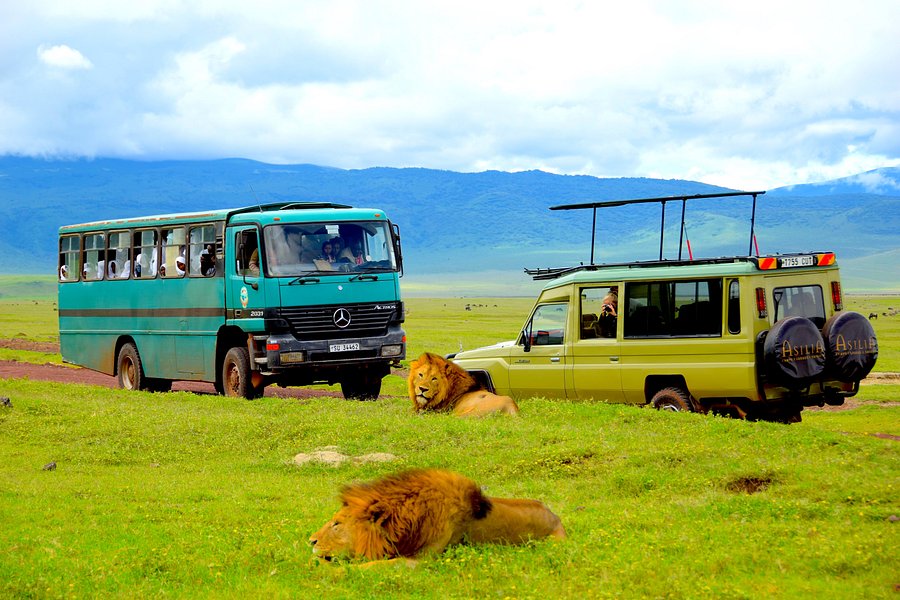
Most Recent: Reviews ordered by most recent publish date in descending order.
Detailed Reviews: Reviews ordered by recency and descriptiveness of user-identified themes such as wait time, length of visit, general tips, and location information.
Also popular with travelers
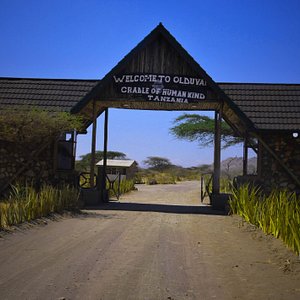
Ngorongoro Crater - All You Need to Know BEFORE You Go (2024)
- Full-Day Trip to Ngorongoro Crater from Arusha Town (From $350.00)
- 4-Day Safari: Lake Manyara, Serengeti & Ngorongoro (From $1,220.52)
- 3 Days Tanzania Safari (From $800.00)
- Tanzania Classic - 7 Days (From $3,801.48)
- Serengeti & Ngorongoro fly in safari (From $2,750.77)

1 Day Ngorongoro Crater Safari
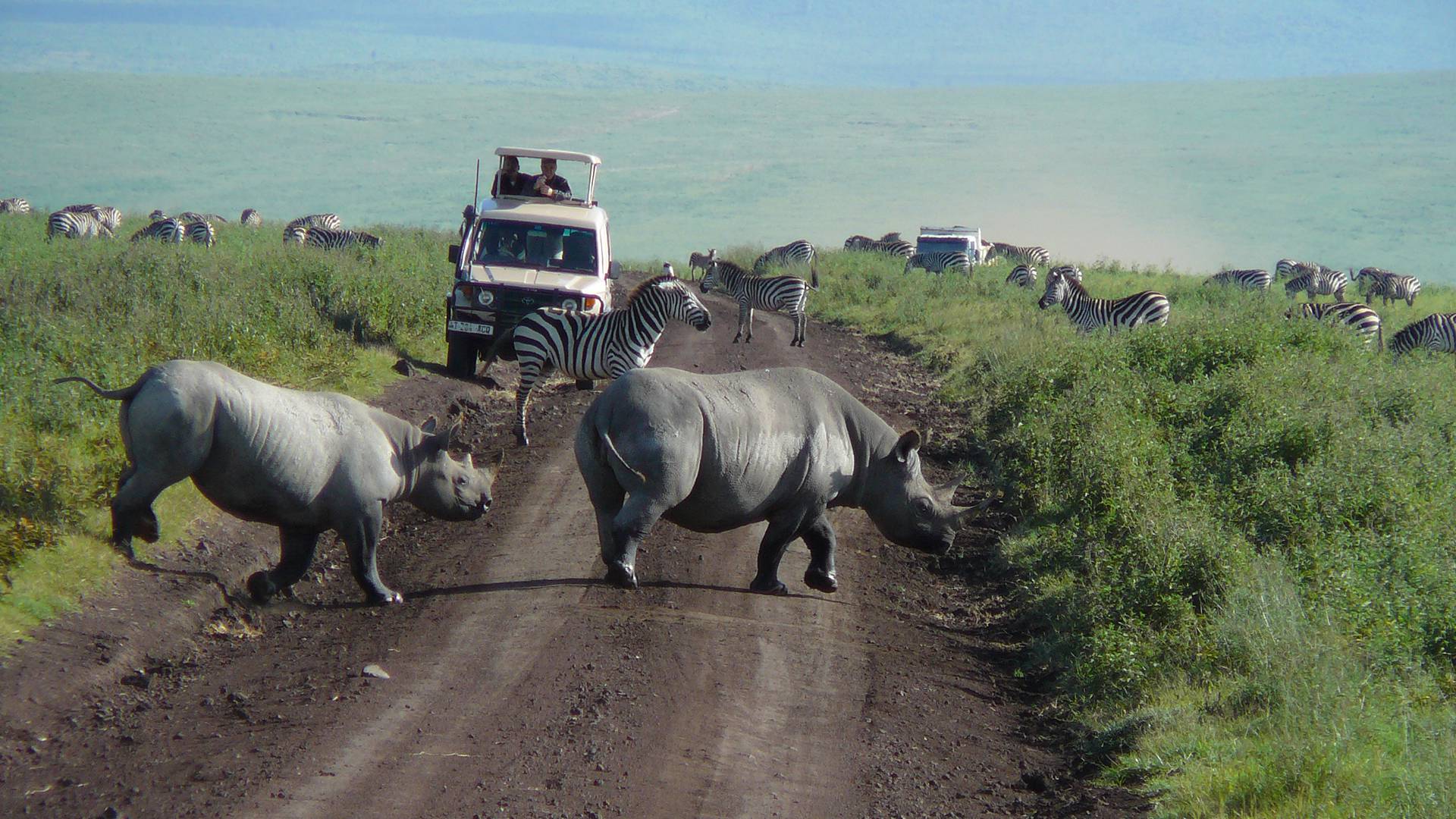
- Includes/Excludes
- Safari Day Trips
- Tanzania Safaris
A day tour to Ngorongoro Crater will provide an opportunity to discover Tanzania wildlife through a one-day game drive activity. Start your safari in Arusha , then drive to Ngorongoro, and then return to Arusha in the evening after a full day of wildlife viewing in the Ngorongoro crater.
The Ngorongoro Crater, located within the confines of the Ngorongoro Conservation Area and Authority is the largest caldera in the world and the second-largest extinct crater, located in the Ngorongoro Conservation Area Authority; a UNESCO-protected World Heritage Site and an International Biosphere Reserve, with a magnificent concentration of species. Ngorongoro was once an active volcano whose cone fell eight million years ago, forming the massive crater we see today. The rim of the crater is covered in mountain forest flora.
Within the Northern Highland Forest Reserve, the Ngorongoro Conservation Area Authority recently took full management of one of its trails (NHFR). Previously, all trips into the forest were organized by Gibbs Farm Lodge, which is located only a few meters outside the Ngorongoro Conservation Area Authority line to the south.
The Ngorongoro Maasai Boma Cultural Day Trip
While doing a game drive to the Ngorongoro crater, you will come across a number of Maasai Villages like the Nainokanoka Maasai Village. This is a perfect opportunity to take a brief stop along the way and partake in a Maasai cultural tour that will give you the chance to interact with the natives of the Ngorongoro Conservation Area. Immerse yourself in these cultural tours, indulge in Maasai traditional songs and dances, and even taste the Maasai food as you enjoy living the Maasai way of life, and hear their stories about their history, culture, and love for livestock, including cows, etc.
How to get to Ngorongoro Crater
Anyone may get there by driving along the 160-kilometer road from Arusha to the Lodoare Gate entry gate. The road was just constructed, and the entire drive takes around two hours and is entirely on the tarmac. When visiting the Ngorongoro Crater and Serengeti National Park , a 4×4 safari vehicle is required unless you stick on the main roads, which are graveled.
- This 1-day Ngorongoro tour starts and ends in Arusha
- Book your own international flights
- Fly to/from Kilimanjaro Airport (JRO) near Arusha/Moshi. Or fly to/from Arusha Airport (ARK) via Dar es Salaam or Nairobi (Kenya)
- Transport from and back to the airport is included
- Additional accommodation before and at the end of the tour can be arranged at an extra cost on request
Best time for Ngorongoro Crater Safari
You can tour the Ngorongoro crater at any time of year, but the best time for safaris in the entire Ngorongoro Conservation Area is during the dry season, which runs from the months of June to October and is when animals can be spotted around water points or water sources. Safaris around the Ngorongoro crater may be done at any time of year, including during the rainy season.
You’ll leave Arusha early in the morning at around 6:00 am to see the Ngorongoro Conservation Area.
You will descend the Ngorongoro Crater for the crater tour after completing the requisite registration processes at the Loduare National Park Gate. This 100-square-mile natural amphitheater is home to a diverse range of species, including Rhino, Elephant, and Lion, as well as enormous herds of Zebras and Wildebeests. Inside the crater bottom, a picnic lunch box will be brought – late in the afternoon, you will depart the crater and travel back to Arusha, where you will spend overnight on your own arrangements.
Elephants, buffalo, lions, leopards, and a variety of other grazers and carnivores may be found in this UNESCO world heritage site.
The Ngorongoro crater is known as “Africa’s Eden” and is a must-see attraction. At 2286 meters above sea level, the Ngorongoro crater is the world’s biggest intact caldera. It is home to up to 30000 animals, with wildebeest and zebra accounting for over half of them.
In addition, the crater is one of the few spots in East Africa where tourists may be confident of sighting a black rhino. The Ngorongoro Conservation Region was formed as a multi-use area with the goals of preserving natural resources, protecting indigenous inhabitants’ rights, and promoting tourism.
Meals & Drinks:
- Lunch (Breakfast & dinner not included)
- Drinking water (Other drinks not included)
The cost for the one day Ngorongoro safari includes and excludes the following items
1 Day Ngorongoro Safari Price includes
Game drives and acitivities
All accommodation
A professional driver/ safari guide
All transportation
All Taxes/VAT
Roundtrip airport transfer
Water / Coffee / Tea or Soft Drinks
Price Excludes
International flights
Additional accommodation before and at the end of the tour
Tanzania Visa
Personal Expenses (e.g. laundry, telephone, beverages, etc.)
Meals not listed above
Government imposed increase of taxes and/or park fees
Admission fees to access the Ngorongoro Crater and Conservation Area, in general, are one of the costs that travelers incur when on safari in Tanzania.
The following are the entrance costs for safaris to the Ngorongoro crater:
Non-East African residents above the age of 16 pay a 70.8 USD admission price, while minors between the ages of 5 and 16 are charged a 23.6 USD entrance cost during safaris to the Ngorongoro crater.
During safaris to the Ngorongoro crater, East African citizens and Tanzanians are paid an entrance fee of 11,800 Tanzania shillings for individuals over the age of 16, while minors aged 5 to 16 are charged a cost of 2,360 Tanzania shillings.
The admission cost for residents and expats visiting the Ngorongoro crater is 35.4 USD for those over the age of 16, and 11.8 USD for those between the ages of 5 and 16. Safaris to the Ngorongoro crater do not charge admission fees for children under the age of five.
Entrance fees to the Ngorongoro Crater in 2022-2023
The crater service fee, which is levied per vehicle, is another expense payable by tourists on their safaris to the Ngorongoro crater. The crater service charge for Tanzanian citizens and East Africans is 11,800 Tanzania shillings per car, whereas the crater service price for non-east African citizens is 295 USD per vehicle.
When visiting the Ngorongoro crater, visitors may participate in a variety of activities such as game drives, nature walks, hot air balloon safaris, cultural excursions, and bird viewing.
Species like flamingos, as well as many other birds, maybe observed along the beaches of Lake Magadi on bird-watching excursions surrounding the Ngorongoro crater. The location is home to approximately 400 bird species, including kori bustards, ostriches, grey crowned cranes, and many others.
Walking Safari Fees in Ngorongoro
Fees for walking safari guides throughout the Ngorongoro conservation area are 23.6 USD for non-east African residents over the age of 16, and 11.8 USD for youngsters under the age of 16.
East Africans over the age of 16 are paid 11800 Tanzania shillings for walking safaris around the Ngorongoro crater, while children under 16 are charged 5,900 Tanzania shillings.
The cost of a walking safari around the Ngorongoro crater is determined by the length of the trek, which can range from 1 to 4 hours and can exceed 4 hours. The Endoro nature path and the elephant caverns are two areas where walks are conducted during safaris.
Ngorongoro Crater Camping Fees
For non-east African people camping at public campsites in the Ngorongoro crater, the price is 35.4 USD for individuals over the age of 16, and 11.8 USD for youngsters between the ages of 5 and 16. Tanzanian nationals aged 16 and over are paid a cost of 11,800 Tanzania shillings, while minors aged 5 to 16 are charged a price of 5,900 Tanzania shillings.
Costs for East African Residents and Tourists
Non-East African citizens staying at special campsites during safaris in the Ngorongoro crater are paid a price of 70.8 USD for those over the age of 16, and 35.4 USD for those between the ages of 5 and 16.
East African and Tanzanian nationals above the age of 16 must pay a cost of 17,000 Tanzania shillings, while children between the ages of 5 and 16 must pay a price of 8,850 Tanzania shillings.
Olduvai gorge, the Empakaai crater , Olmoti crater, the Laetoli footprints, and Ol Donyo Lengai are some of the attractions that may be observed on safaris near the Ngorongoro crater.
Non-East African residents above the age of 16 are taxed 35.4 USD for excursions to the Ol Duvai canyon, while minors under the age of 16 are charged 11.8 USD.
East African citizens, on the other hand, must pay a fee of 5,900 Tanzania shillings for those aged 16 and over, and 1,180 Tanzania shillings for those aged 5 to 16.
Concession Fees for Ngorongoro
Concession fees are also levied to visitors staying at hotels and permanent tented camps on safaris around the Ngorongoro crater. Non-east African nationals over the age of 16 pay a concession cost of 59 USD, while children between the ages of 5 and 16 pay a price of 11.8 USD. East African nationals over the age of 16 pay 35,400 Tanzania shillings in concession fees, while minors from 5 to 16 pay 11,800 Tanzania shillings in concession fees.
The fees collected during safaris to the Ngorongoro crater are valid for one admission only and are valid for 24 hours. During safaris to the Ngorongoro crater, children under the age of five are not paid any costs.
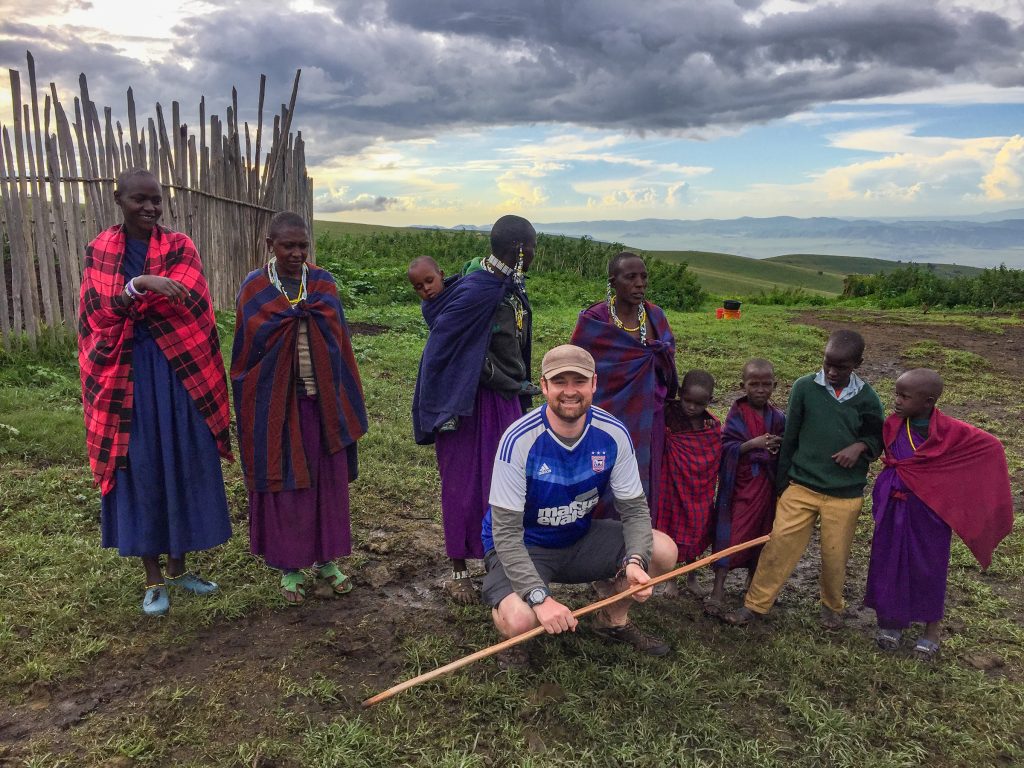
You May Also Like
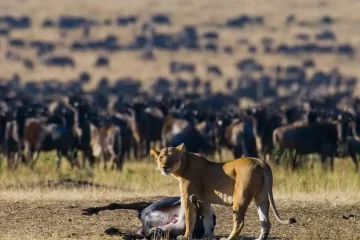
7-Day Great Wildebeest Migration Safari in the Western & Central Serengeti
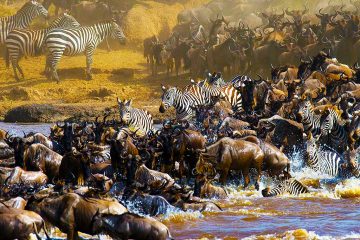
11-Day Tanzania Safari & Zanzibar Beach
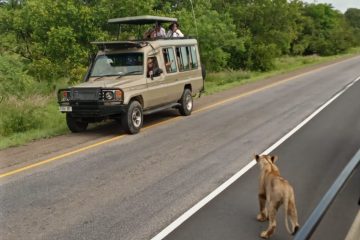
1 Day Trip Mikumi National Park
Please enable javascript in your browser to visit this site..
- Vision & Mision
- Core Values
- Wildlife Species and Management
- Wildlife Habitats
- Range Management
- Conservation Education
- Environmental Management
- Research and Monitoring
- Ngorongoro Crater
- Empakai Crater
- Olmoti Crater
- The Northern Highland Forest Reserve
- Endoro Waterfalls
- Endoro Elephant Caves
- Olduvai Gorge
- The New Olduvai Gorge Museum
- Dr. Mary Leakey Living Museum
- Laetoli Footprints
- Shifting Sand
- Lolmalasin Mountain
- Olkarien Gorge
- Nasera Rock
- Ndutu Plains
- Gol Mountain and Sale Plains
- Amboni Caves
- Mbozi Meterorite
- Mumba Rockshelter
- Engaruka Ruins
- Engaresero Footprints Site
VISITOR INFORMATION
- Accommodation Facilities
- Guidelines and Procedures for Visitors
- Tariffs - NCAA
- Customer Information and Contact Centres
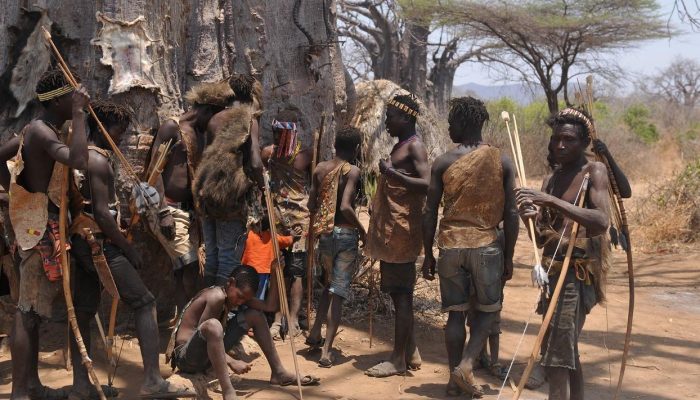
The United Republic of Tanzania
NGORONGORO CONSERVATION AREA AUTHORITY
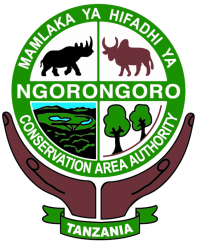
VISIT NGORONGORO
- Watch Full Video
Ngorongoro Lengai UNESCO Global Geopark is the Only one and Sub-Saharan Africa
Ngorongoro Conservation Area is a World Heritage Site.
The Ngorongoro Crater is the largest unfilled, intact and inactive volcano in the world.
Ngorongoro Crater is also referred to as ‘the Garden of Eden’.
Ngorongoro Crater has the densest known population of lions in the world
Ngorongoro Conservation Area is one of the best places in Africa to see the critically endangered black rhino in their natural habitat.
The crater was once voted as one of the Seven Natural Wonders of Africa.
In 1959, Dr Louis Leakey, discovered the skull of Zinjanthropus boisei dated 1.75 mya.
In 1978, Dr Louis Leakey discovered the Laetoli footprints dated 3.6mya - the only evidence of bipedalism in the world.
The Oscar-winning movie ‘Out of Africa’ was partly filmed in the Ngorongoro Conservation Area.
Each year, the spectacular Great Migration happens in the grass plains of Ngorongoro.
There are over 500 species of bird in the Ngorongoro Conservation Area.
Vote for Ngorongoro - World Traveller Awards
White Rhinos to land in ngorongoro Crater
Essential tips for the best chance of seeing wildlife
Ngorongoro Conservation Area
The Ngorongoro Conservation Area Authority (NCAA) is a well-established wildlife management entity under the Tanzanian government, dedicated to managing the Ngorongoro Conservation Area (also known as NCA ) and conserving its stately-natural splendor while striving to make it the world’s top tourism destination – Your best option for a future holiday is the Ngorongoro Conservation Area.
Ngorongoro Conservation Area is in northern Tanzania. It’s home to the vast, volcanic Ngorongoro Crater and “big 5” game (elephant, lion, leopard, buffalo, rhino).
Years of Establishment
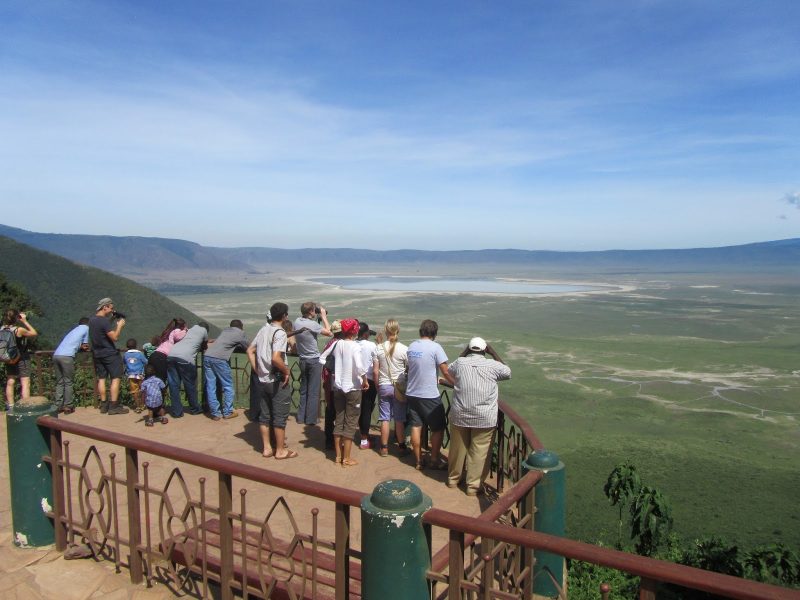
8,292 ㎢
UNIQUE ATTRACTIONS
12,000 ㎢
GEOPARK AREA
EXPERIENCE | EXPLORE | LEARN
ATTRACTIONS
The Ngorongoro Conservation Area is a vast an untouched protected area teeming with the densest wildlife populations on earth, breathtaking landscapes, mountains, world’s largest unbroken caldera, history of human evolution, and so much more. One has to visit to see and believe it.
The Ngorongoro Crater is the world's largest intact and unfilled volcanic caldera and the Ngorongoro Conservation Area's main tourists’ attraction.
The Olduvai Gorge is a remarkable archaeological site in East Africa and It is the one of the most important prehistoric sites in the world with crucial evidence of human evolution.
The Empakai crater is one of the multi-volcanic calderas in the Ngorongoro Conservation Area, with a beautiful lake that makes up more than 75% of its crater floor.
The Nasera rock is situated about 20 kilometers North of Olduvai Gorge. An admirable rock standing 100 metres above the plains.
The Endoro Waterfalls is a source of a natural spring that forms the Endoro River, which flows from the rim of the Ngorongoro Crater.
The Olkarien Gorge is a massive granite monolith on the outskirts of the Gol Mountains in northern Tanzania.It is a nesting site for hundreds of the Ruppell's griffon vulture.
Olmoti Crater is situated at the Northern end of the Ngorongoro Crater, and offers scenic view of highlands. It is a water a catchment for Ngorongoro rich in flora and fauna.
Is a moving black dune, composed of volcanic ash from the nearby volcanic mountain - oldoinyo lengai. It is moving slowly westwards across the Ngorongoro plains at a rate of about 15 to 20m per year.
Mount Lolmalasin is the crater mountain in the Ngorongoro Conservation Area and the third highest mountain in Tanzania standing at 3700m above sea level.
The Gol Mountains are located at the north-end of the Ngorongoro Conservation Area and is an example of a fault-bounded mountain range.
The Ndutu plains is located in the Ngorongoro Conservation Area, on the outskirts of the Southern Serengeti plains. It is where the great migration wildebeest migration take place in Ngorongoro.
There is an abundance of activities related to natural and cultural attractions, ancient sites, mountains, culture and arts, festivals and events one can get to experience while visiting Ngorongoro Conservation Area.
ACCOMMODATION
There are a variety of accommodation properties within NCA, ranging from luxury hotels, lodges, tented camps and public camping sites located in some of the most pristine scenic areas.
Information
The Center provides thorough information on tourism attractions, facilities and activities available in the Ngorongoro Conservation Area.
Accommodations
Visitors to Ngorongoro can stay in luxury lodges, Simba A public campsite, community campsites, special campsites and permanent tented lodges within.
Important things to know before going on a safari; Visas, Passport, Health information, Tipping and gratitude, food on Safari, destinations, accommodations and press release etc.
Traveller’s Feedback – NCA
"This is a true sanctuary of wildlife, the Ngorongoro crater. What continued to amaze me in our safari in Tanzania was how the flora and fauna in each of parks was a bit different, even though location-wise they were not that far apart. In the Ngorongoro Crater you can see so many different species of animals, and definitely some we saw we did not see in any of the other parks."
"We traveled to Tanzania for our honeymoon and went on an incredible safari organized by Habari adventure. They organized an incredible itinerary for us and they were incredibly responsive, giving us all the information we needed to ensure we were prepared for a great trip. We spent 9 days traveling through Serengeti, Tarangire, Ngorongoro Crater, Empakaai walking safari & Lake Eyasi - seeing an amazing variety of animals and staying at beautiful lodges in the evening. "
"The physical layout was beautiful- all the game were at the bottom of the world's largest caldera. We were there on a day that we did not see a great deal of animals, but we still say several hundred large mammals. Our tour company also planned a wonderful lunch out in a small glen, with staff from the place we were staying- very special meal. "
"Friends Let me start by saying this trip to Tanzania was like a miracle and was something me and friends always wanted to do and it was amazing and Nafika Tours made it even more amazing , my guide ( livin ) took us on a journey through the Serengeti and ngorongoro the things we saw and experienced was nothing like i have experienced before we saw a lioness catching a zebra for it's cubs to feast on and on the next day we saw buffaloes scaring away lions"
"If you want to get away from the crowds of Ngorongoro Crater, a short drive (2-ish hours) takes you to the rim of Empakaai Crater. Below, the crater floor is largely taken up by a jade-coloured lake. A half-hour walk and you're at the lakeshore - if you're lucky, it might be teeming with flamingoes"
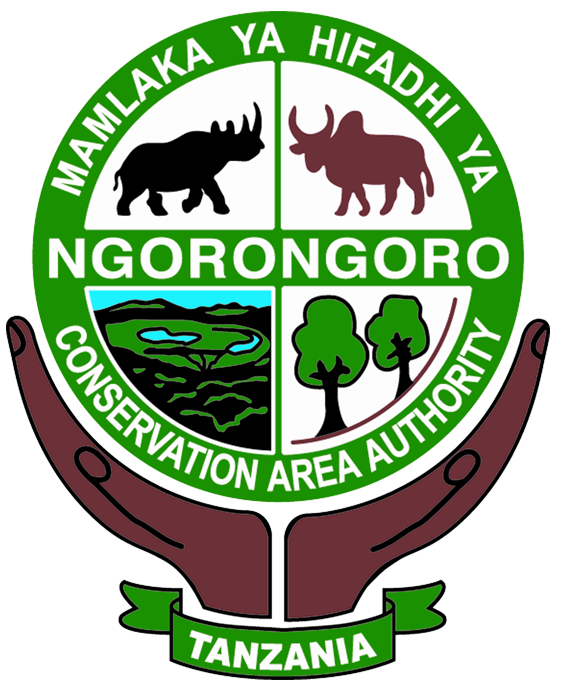
P.O. Box 1, Ngorongoro Crater Arusha, Tanzania
+255 27 253 7019 +255 734 160 015
FOLLOW US/VISIT US
@visitngorongoro, quick links.
- TARIFFS/ FEES
Related Links
- NCAA - Attractions Map
- Geopark Locations Map
GIVE US YOUR FEEDBACK
what is your experience at NCAA
FAST RESPONSE
chat with our representative
entry fee, motor vehicle, crater fee etc

- COVID 19 POLICY & GUIDELINE
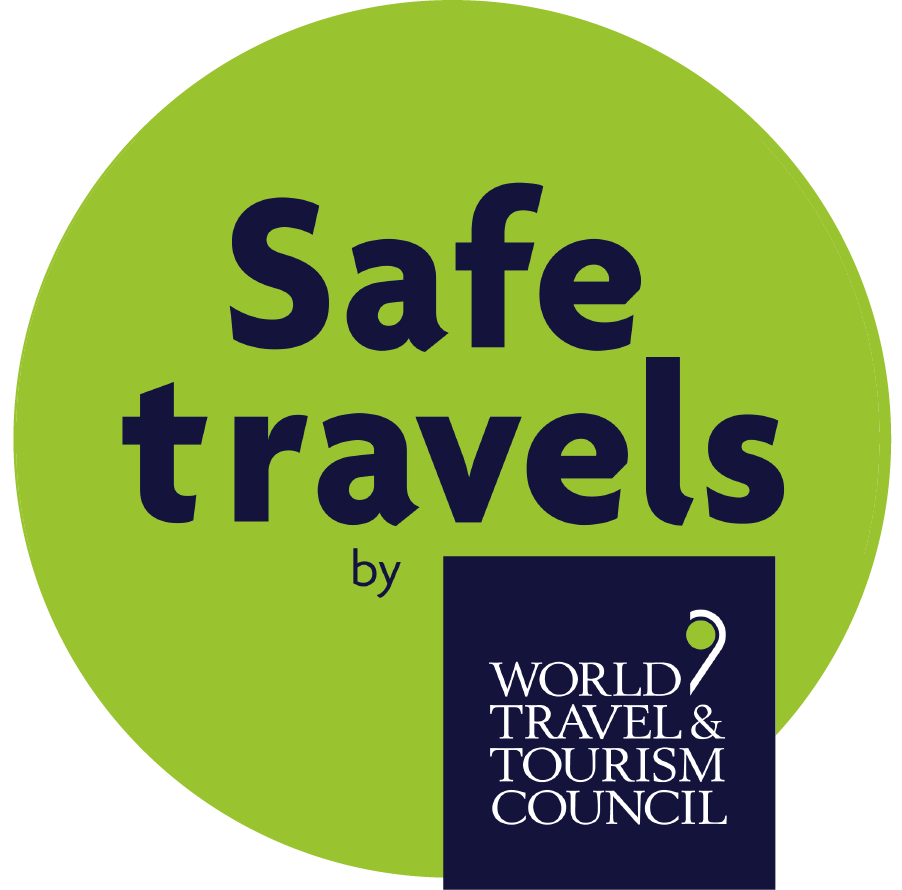
- Privacy Policy
- Terms and Conditions
- Copyright Statement
The website is Designed, Developed and Maintained By NCAA 2024 , All Rights Reserved.

- Serengeti Safari Lodge
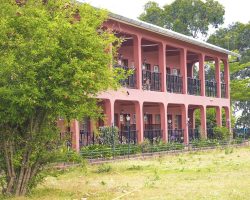
- Highview Hotel
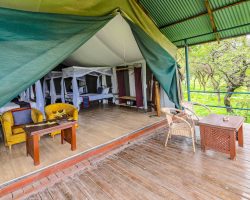
- Ngorongoro Wild Camp
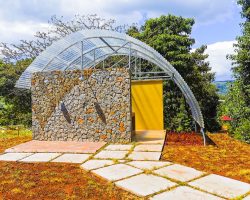
- Highview Coffee Lodge
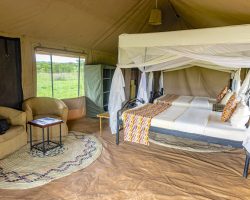
- Serengeti Wild Camp
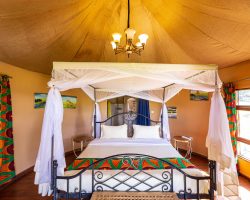
- Ikoma Wild Camp
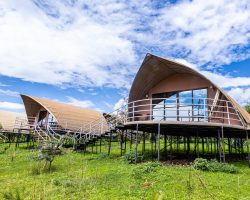
Ngorongoro Safari Lodge
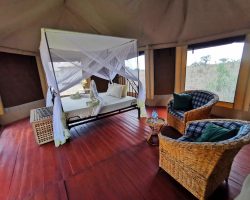
- Serengeti Wildebeest Camps
- Travel Guide
Lodge Facilities
- Cold/Hot Towel
- Telephone Service
- Swimming Pool
- Bushmen tour
- Bird Watching
- Nature Walk
- Acrobatic Shows
- Cultural Dances
- Video shows
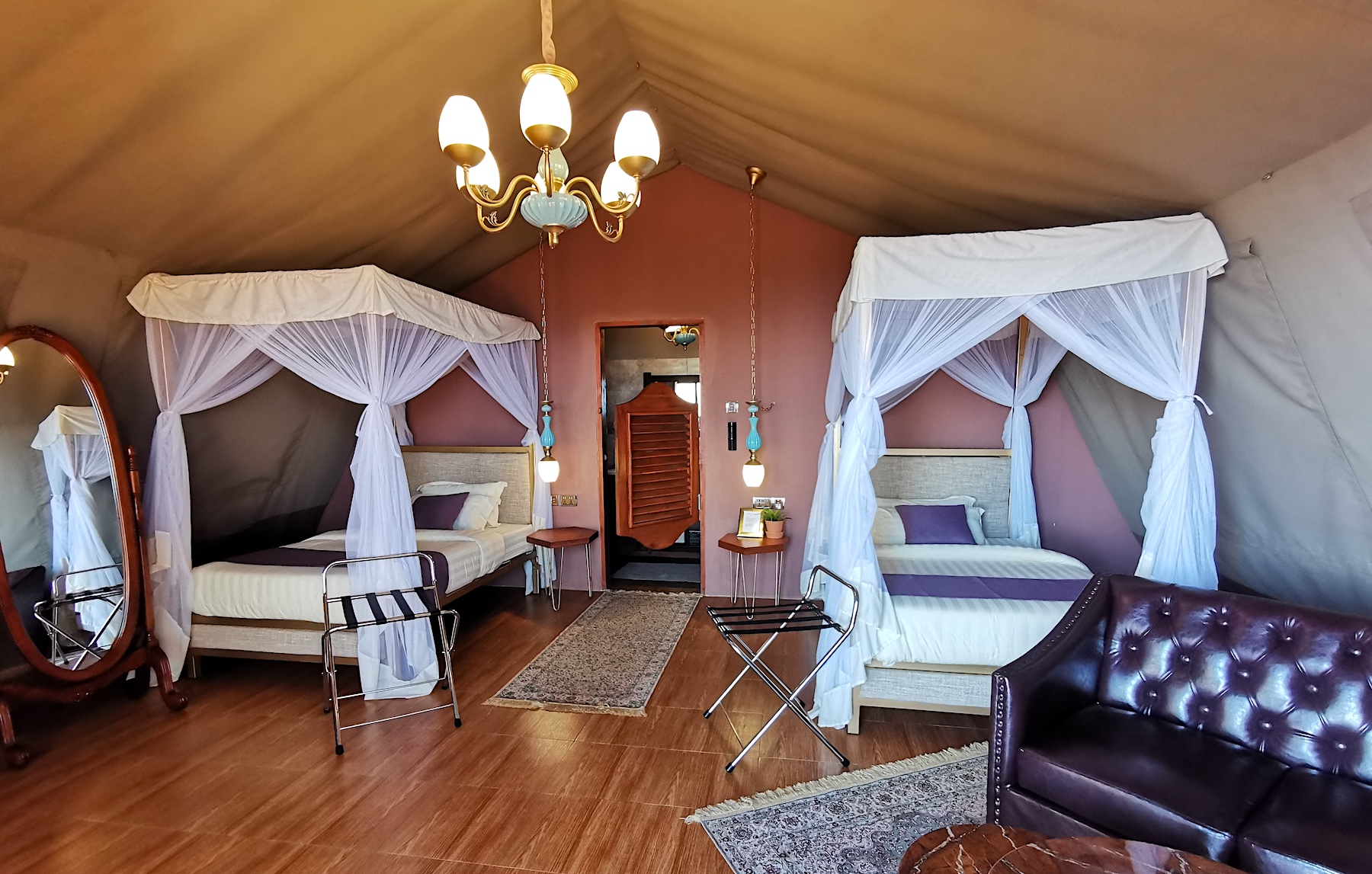
Photo gallery
Location & surroundings, reconnect to the wilderness, travel insurance, accommodations you can enjoy, amazing places, sustainable tourism, tanzania wild camps are advocates of sustainable tourism and work with the community to profit from the growing benefits of tourism., our partners.

Get intouch
P.O. Box 94, KARATU, TANZANIA
- +255 784 451 000 (Call)
- +255 655 451 003 (WhatsApp)
- [email protected]
Quick Links
- Download Fact Sheet
- Giving back to community
- Covid-19 Precaution Measures
© 2023 TANZANIA WILD CAMPS

© 2022 TANZANIA WILD CAMPS

Change your view & relax
Change your view & relax,.

StarsInsider
The best safari destinations in Africa
Posted: 18 May 2023 | Last updated: 17 July 2023
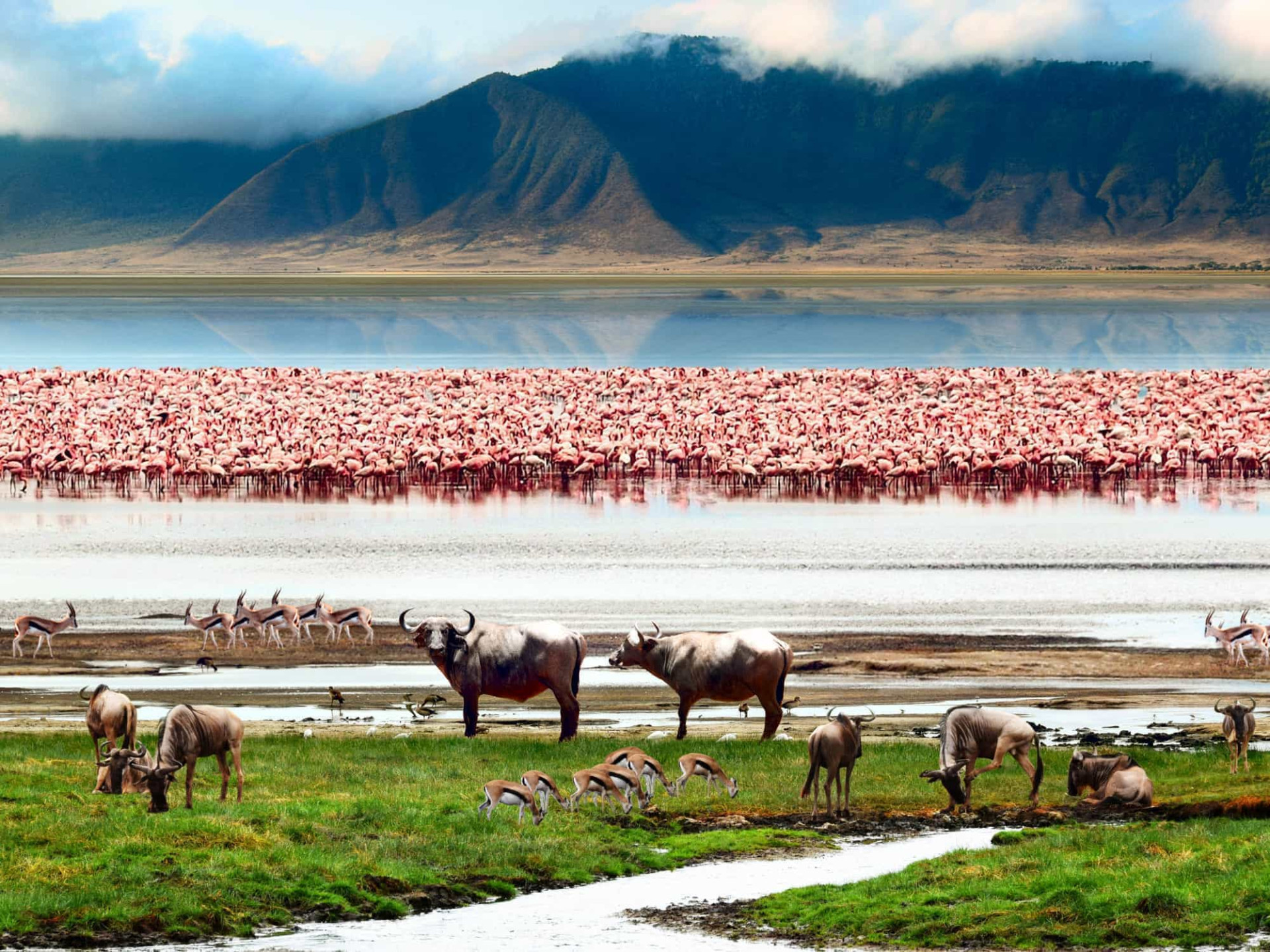
You may also like:

Ngorongoro Conservation Area, Tanzania
Follow us and access great exclusive content every day
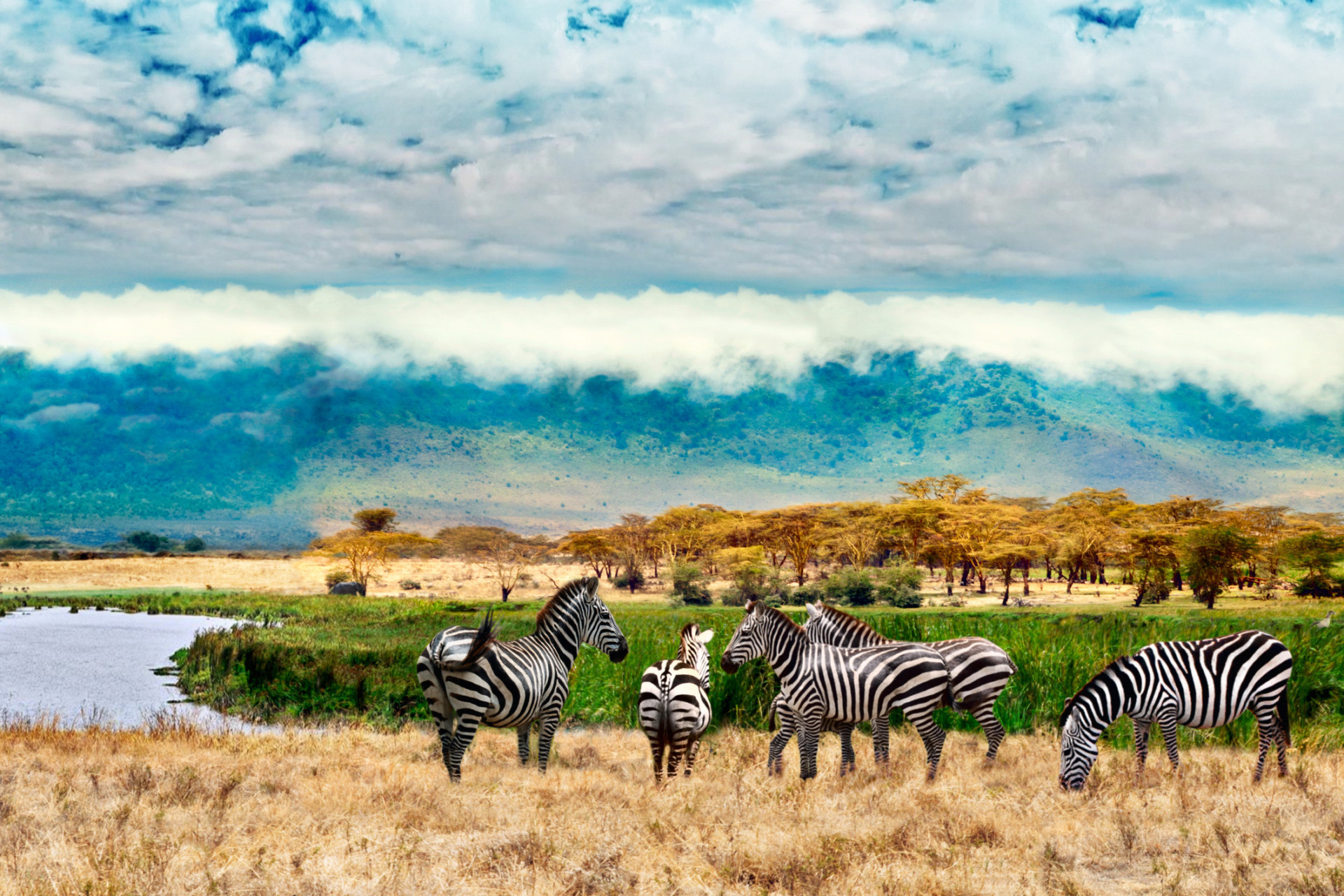
You may also like: Bizarre things (some) Americans actually believe
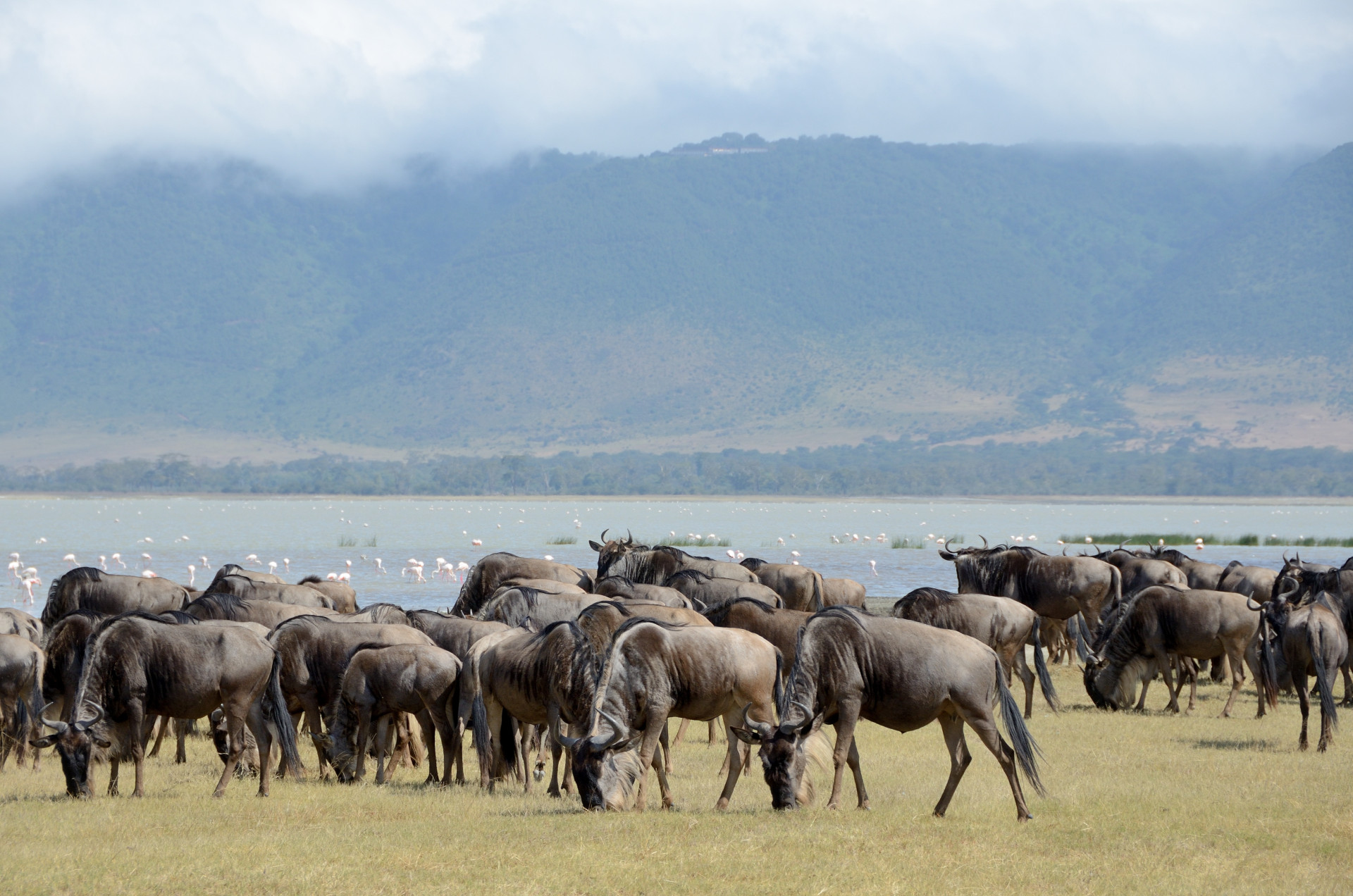
Serengeti, Tanzania
You may also like: Picturesque towns in Europe you won't believe exist
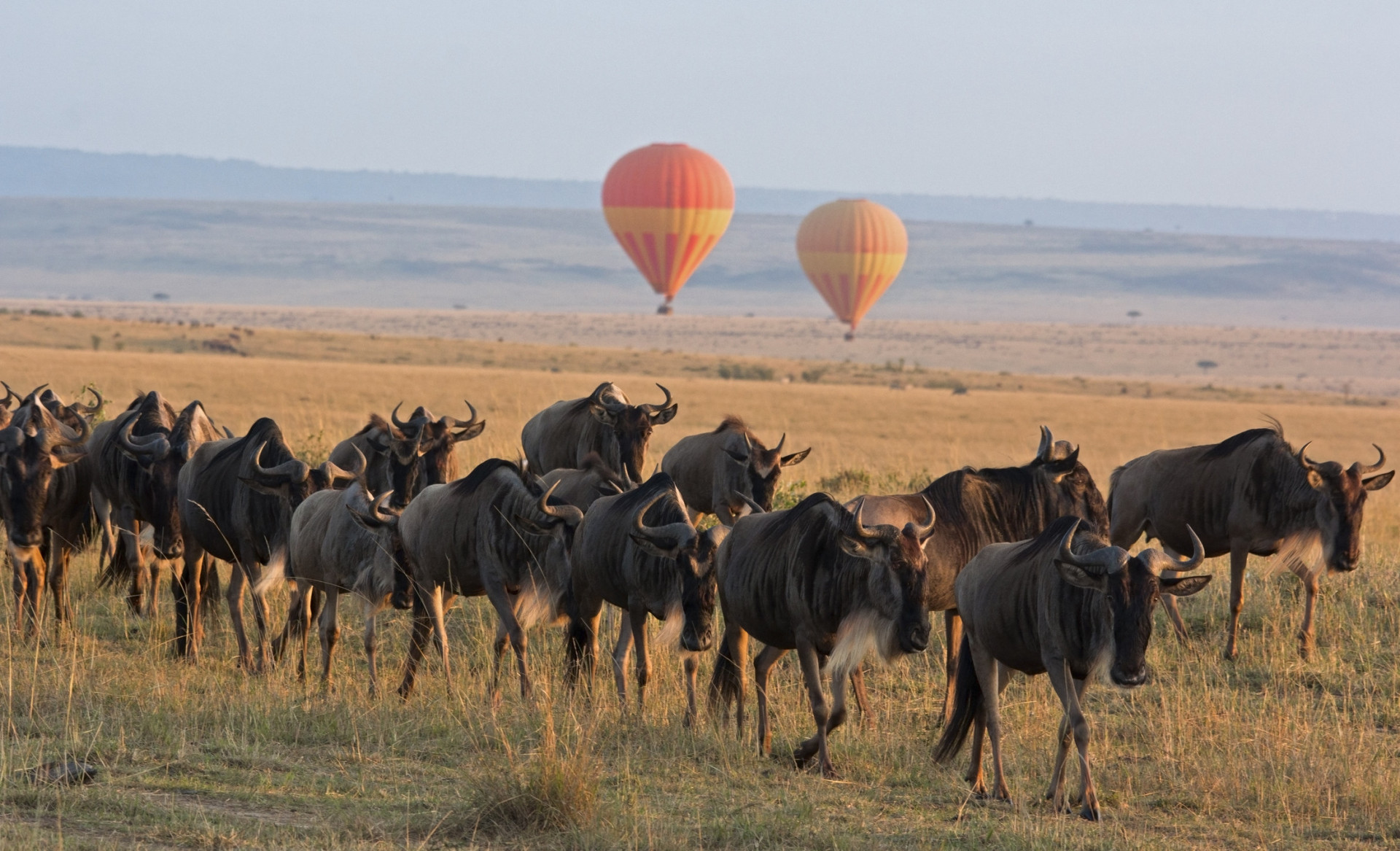
You may also like: Europe's most picturesque small towns and villages
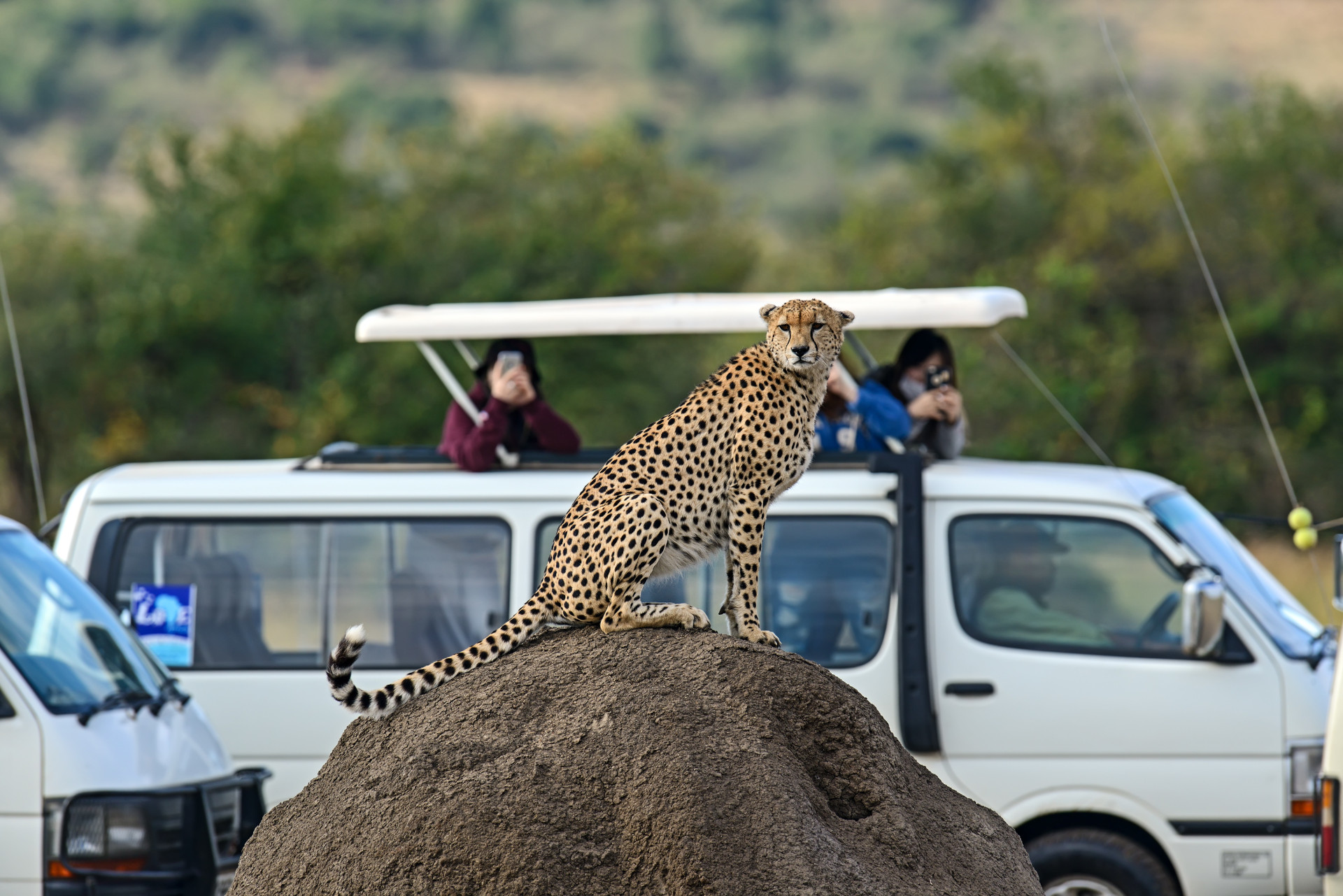
Maasai Mara, Kenya
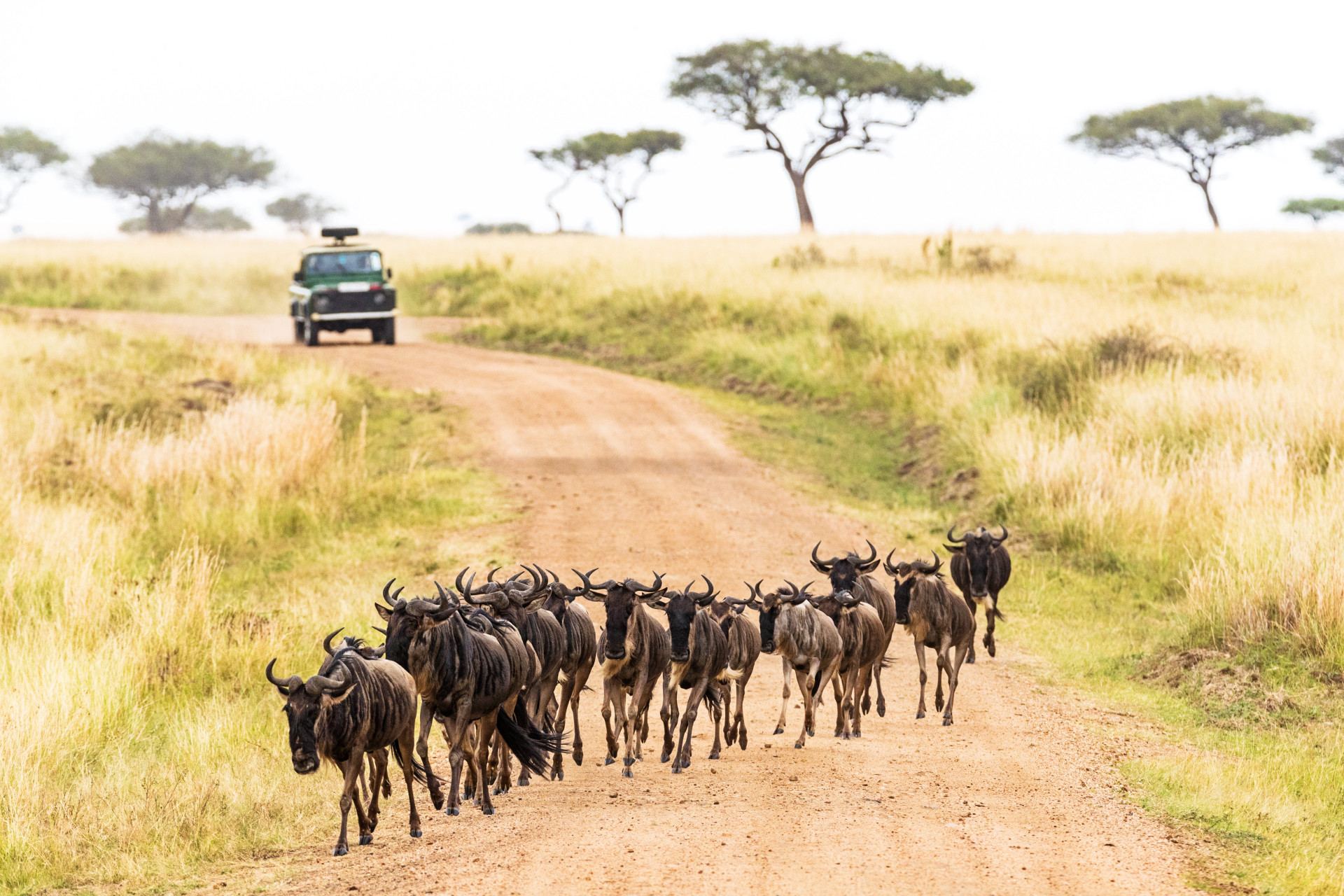
You may also like: Failure to launch: Aircraft that couldn't succeed
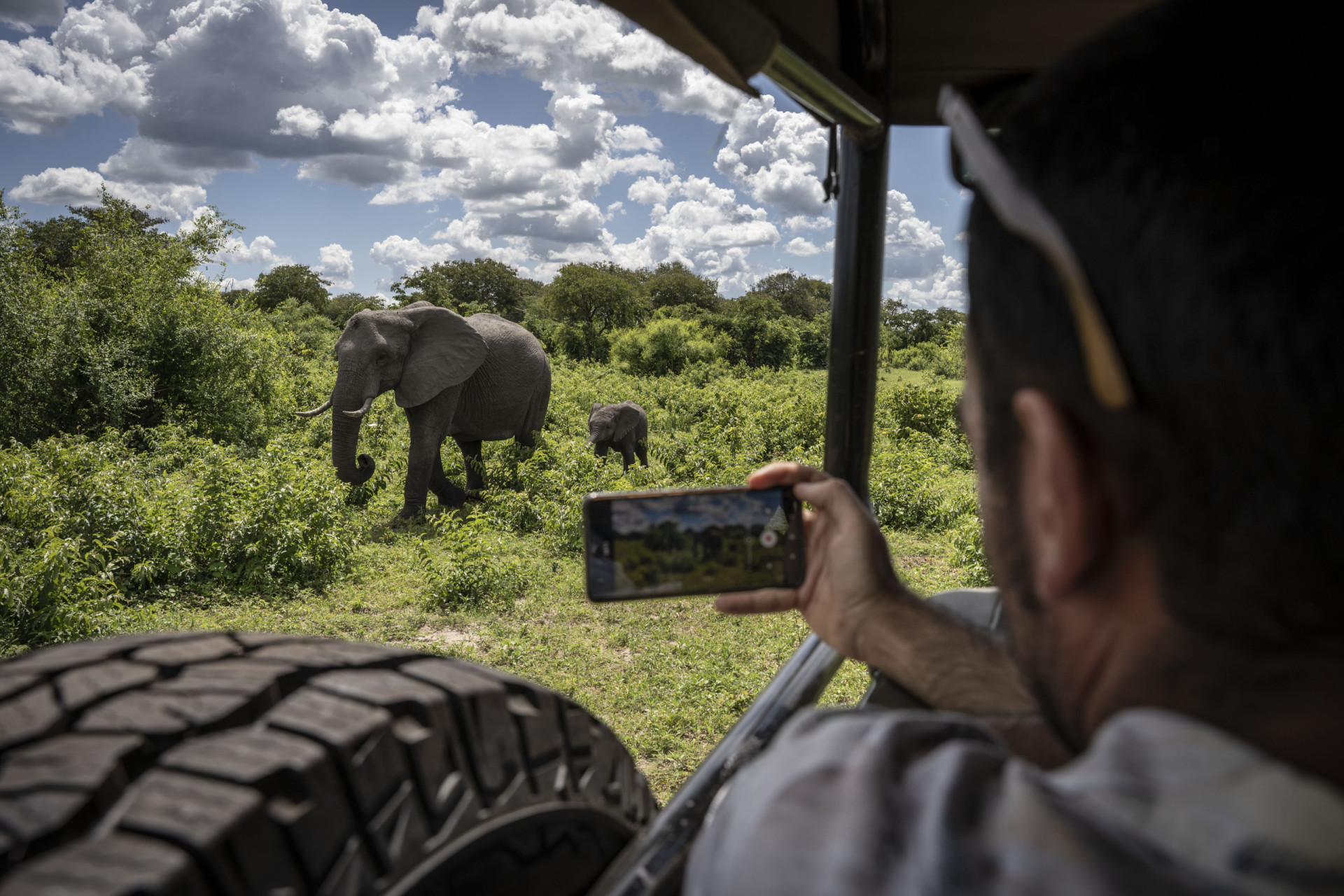
Chobe National Park, Botswana
Chobe National Park covers a vast territory and is home to 450 bird species and one of the largest concentrations of fauna on the planet, including leopards, lions, elephants, antelopes, buffaloes, and even wolves.
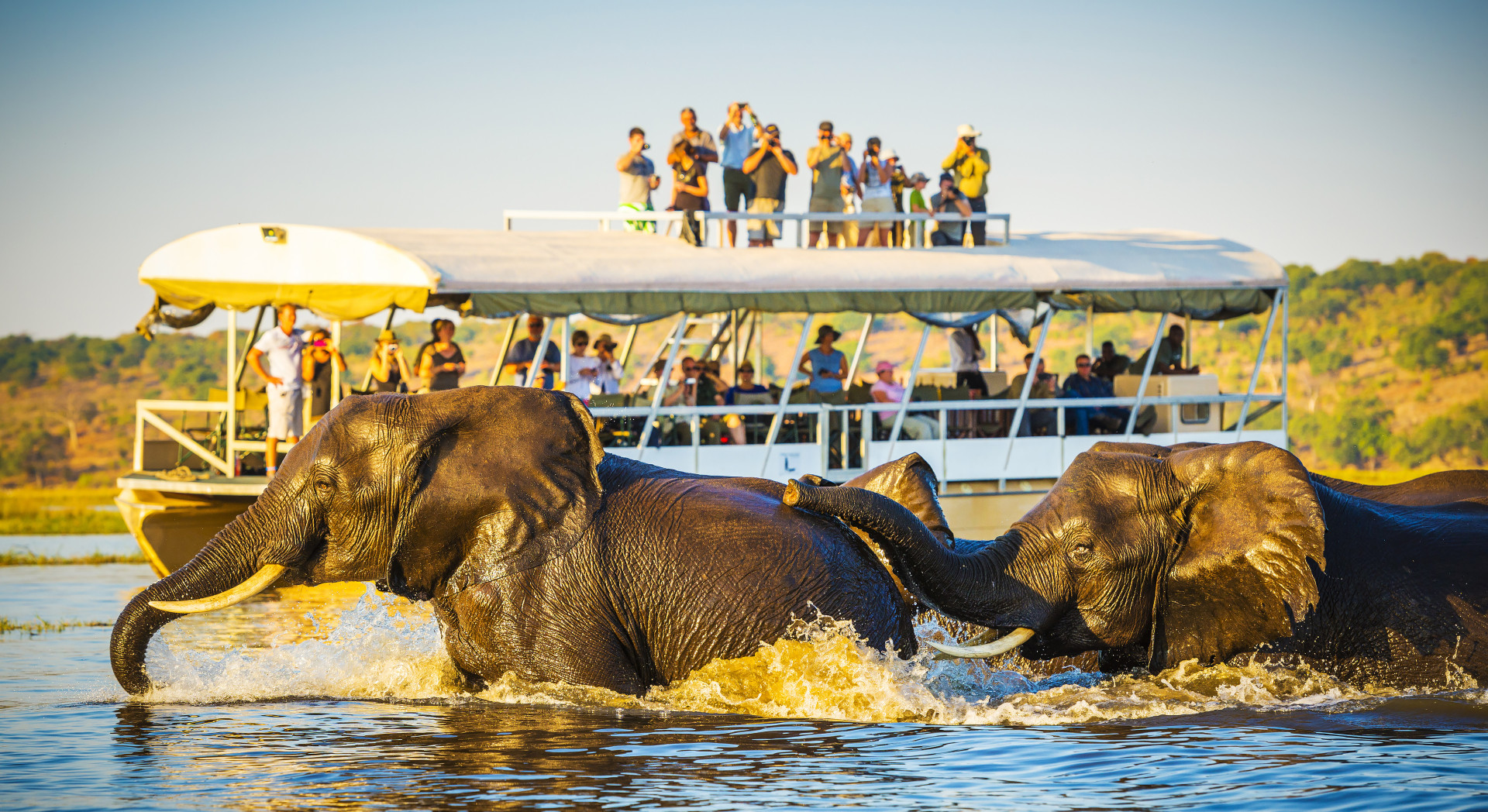
You may also like: 10 common dreams and what they may mean
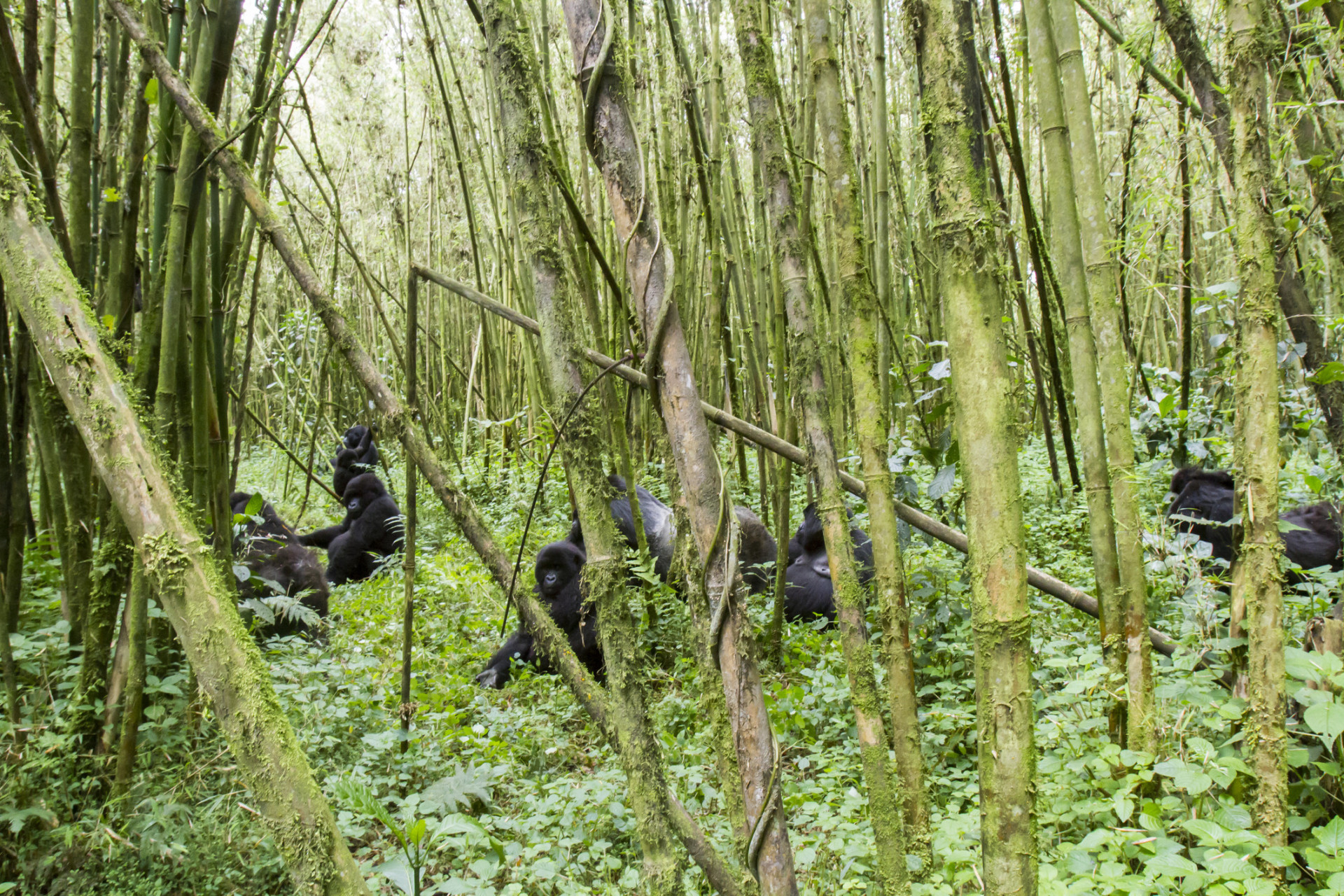
Volcanoes National Park, Rwanda
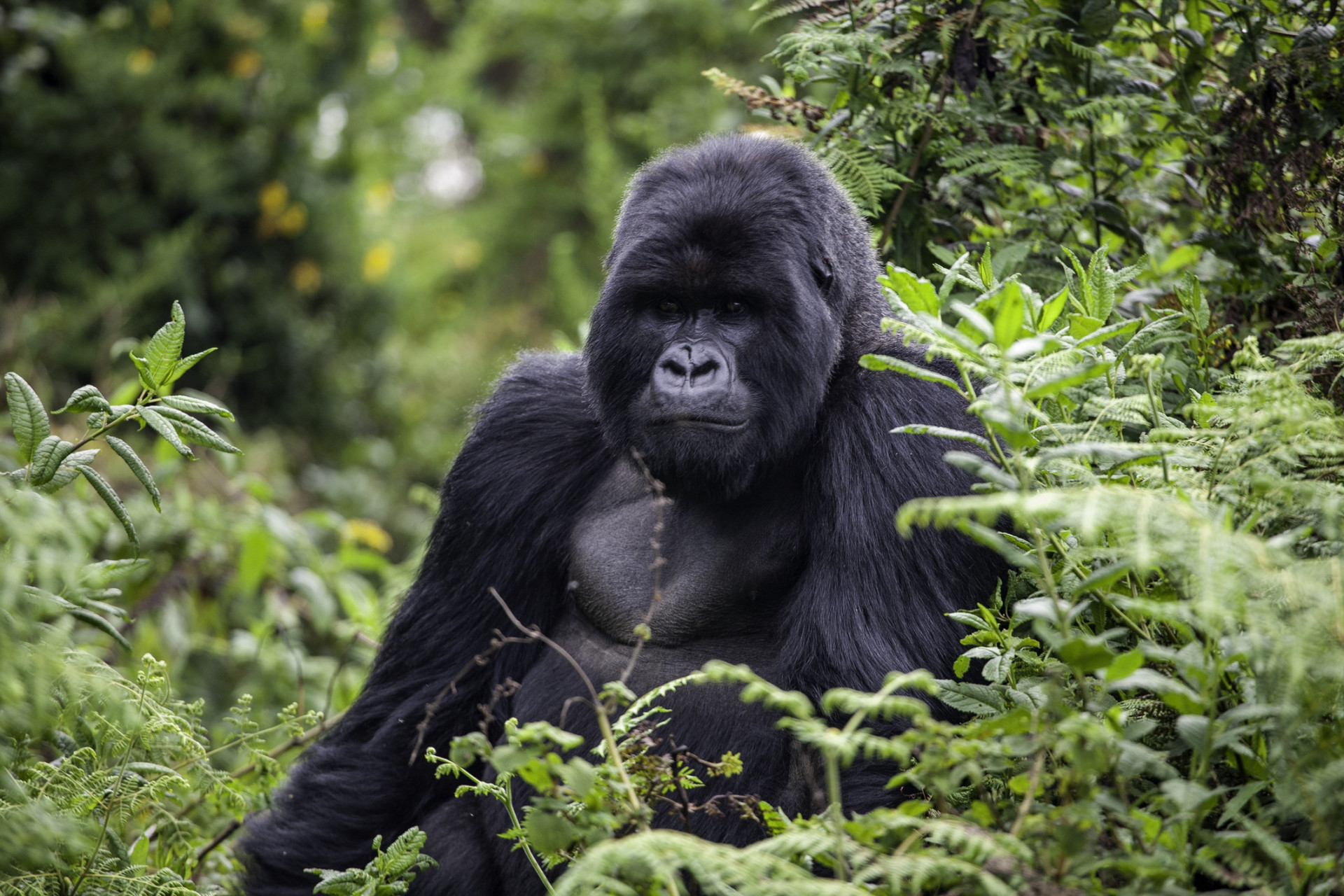
You may also like: The most realistic healthy swaps for your junk food cravings
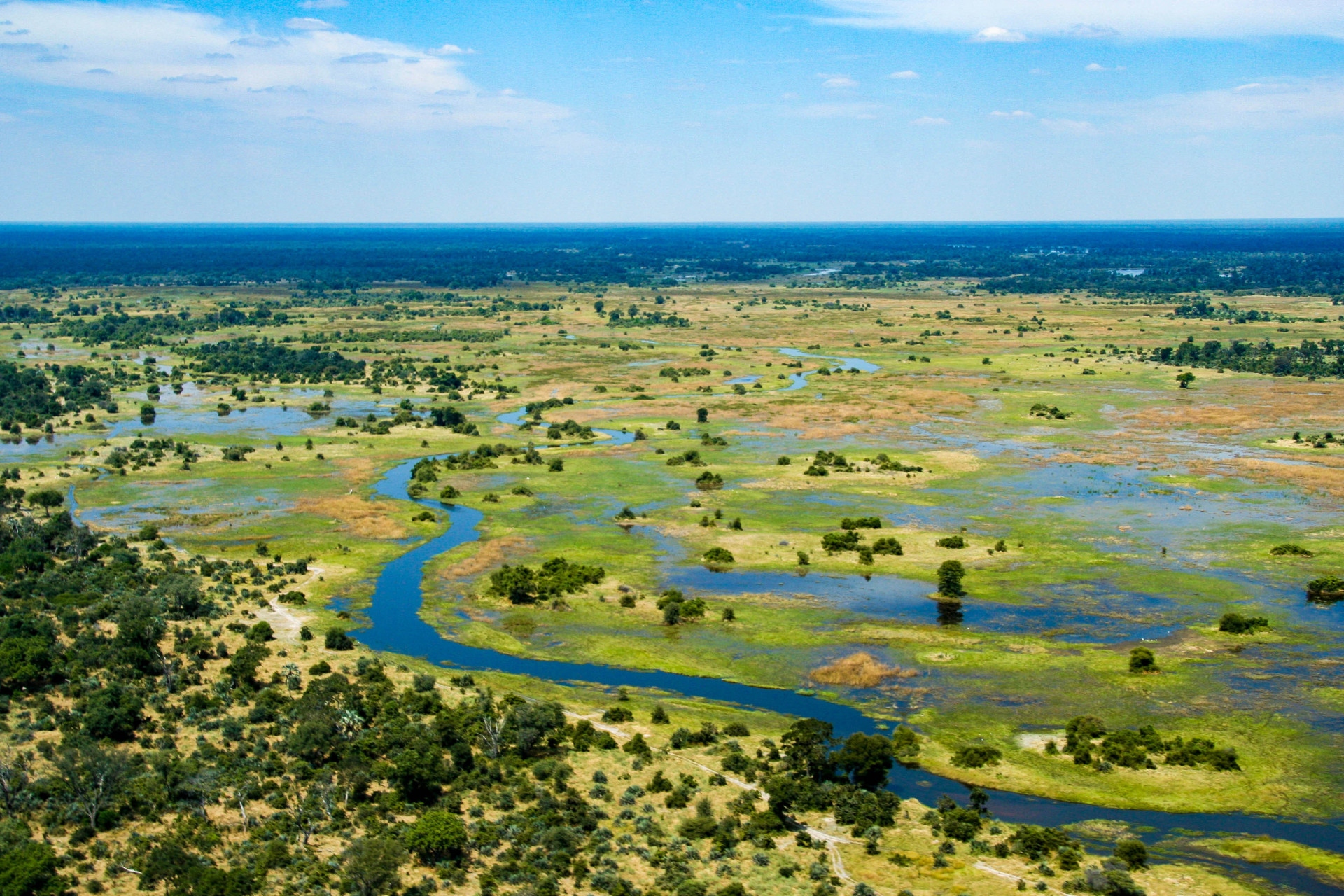
Okavango Delta, Botswana

You may also like: 20 surprising celebs who practice minimalism

Nakuru, Kenya
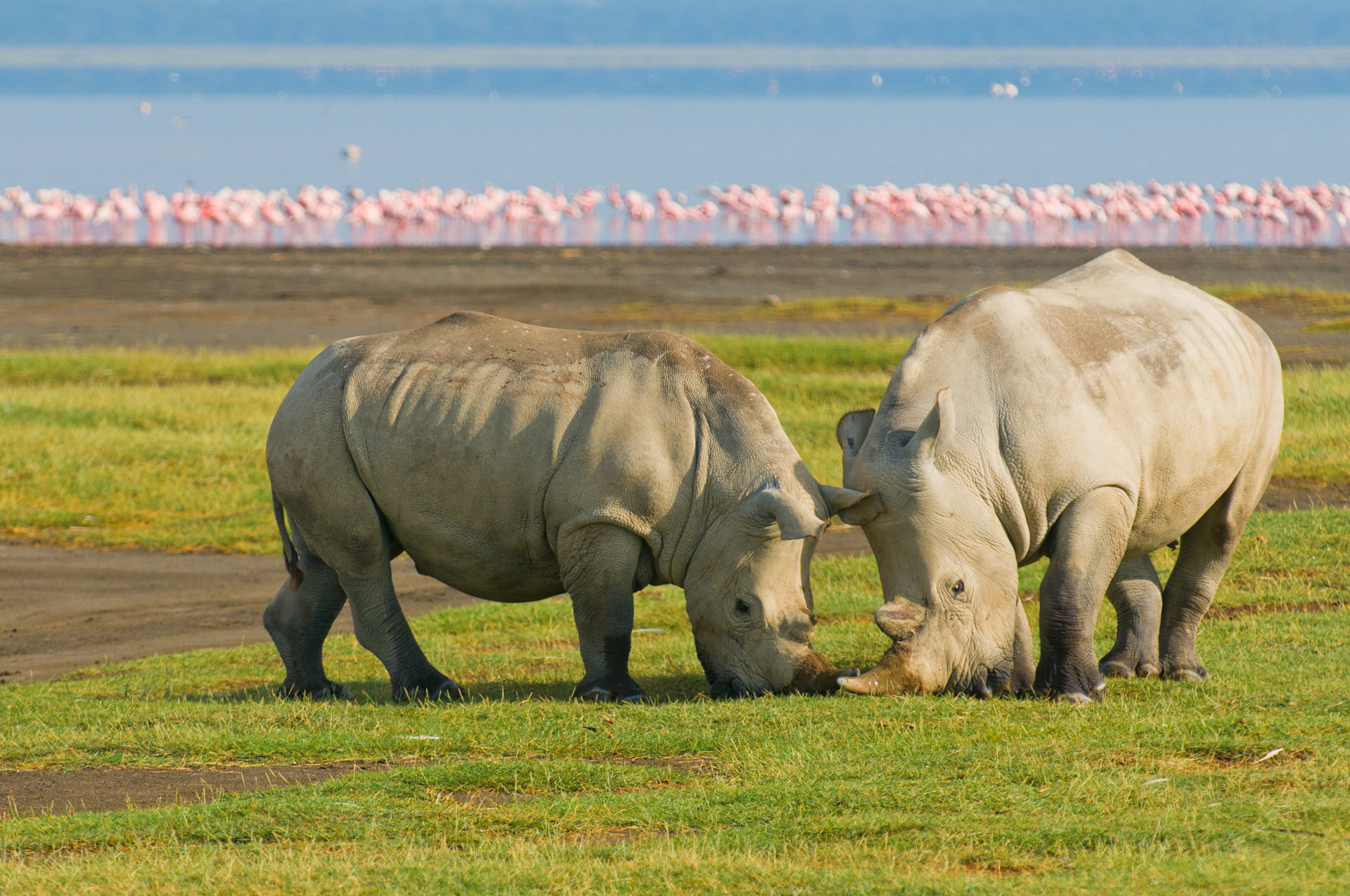
You may also like: Oldest food discoveries from around the world
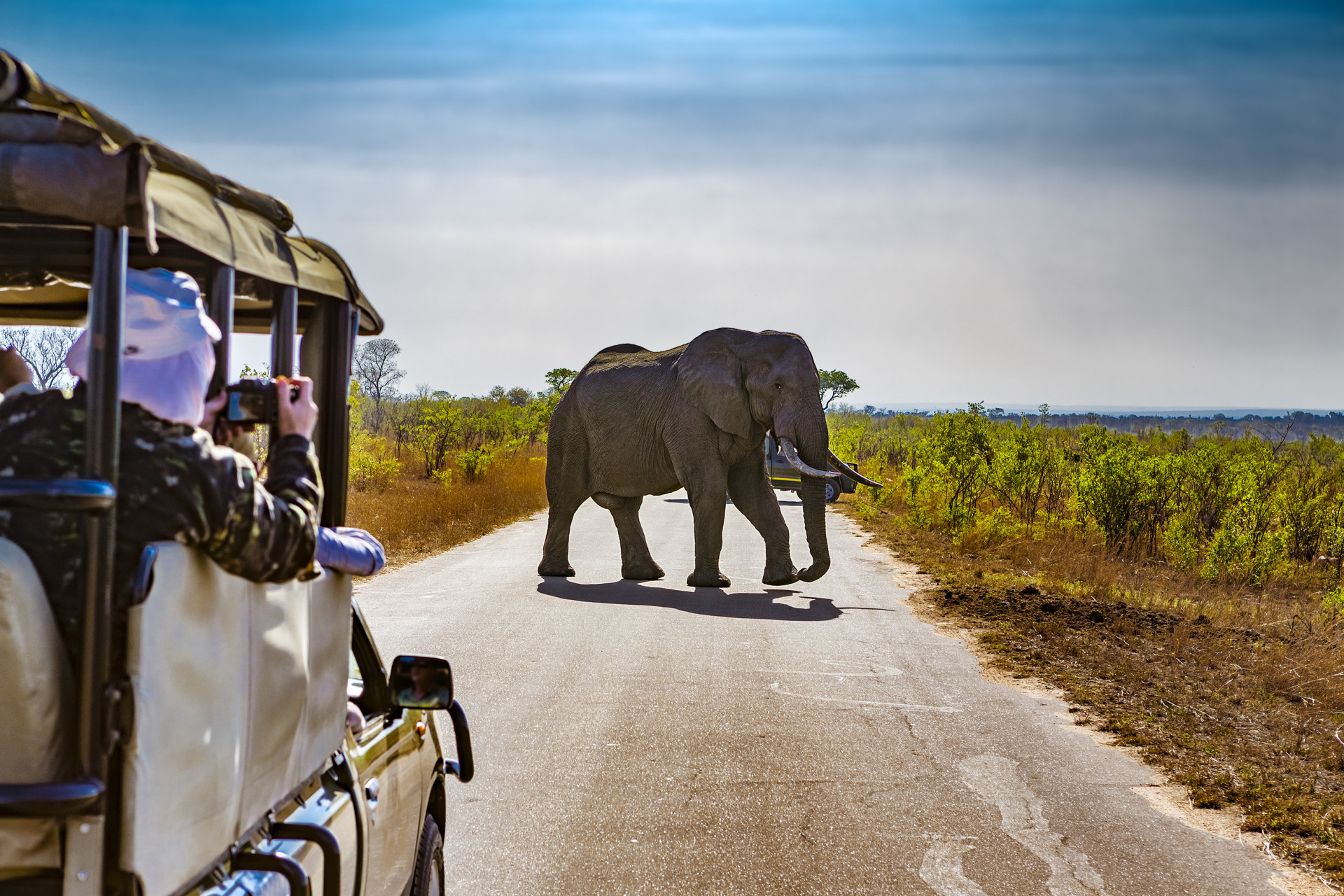
Kruger National Park, South Africa
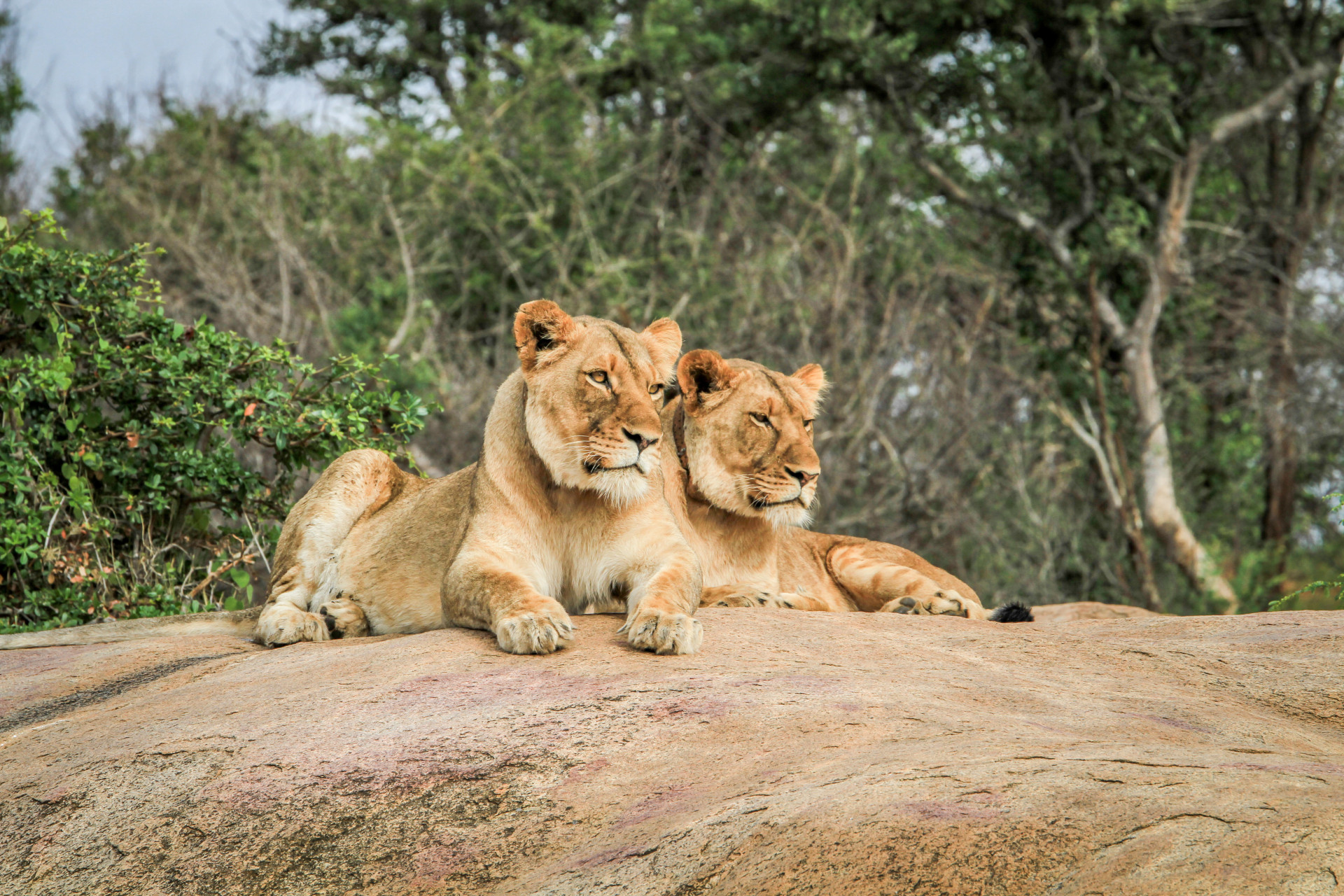
You may also like: Bands whose members left right before success
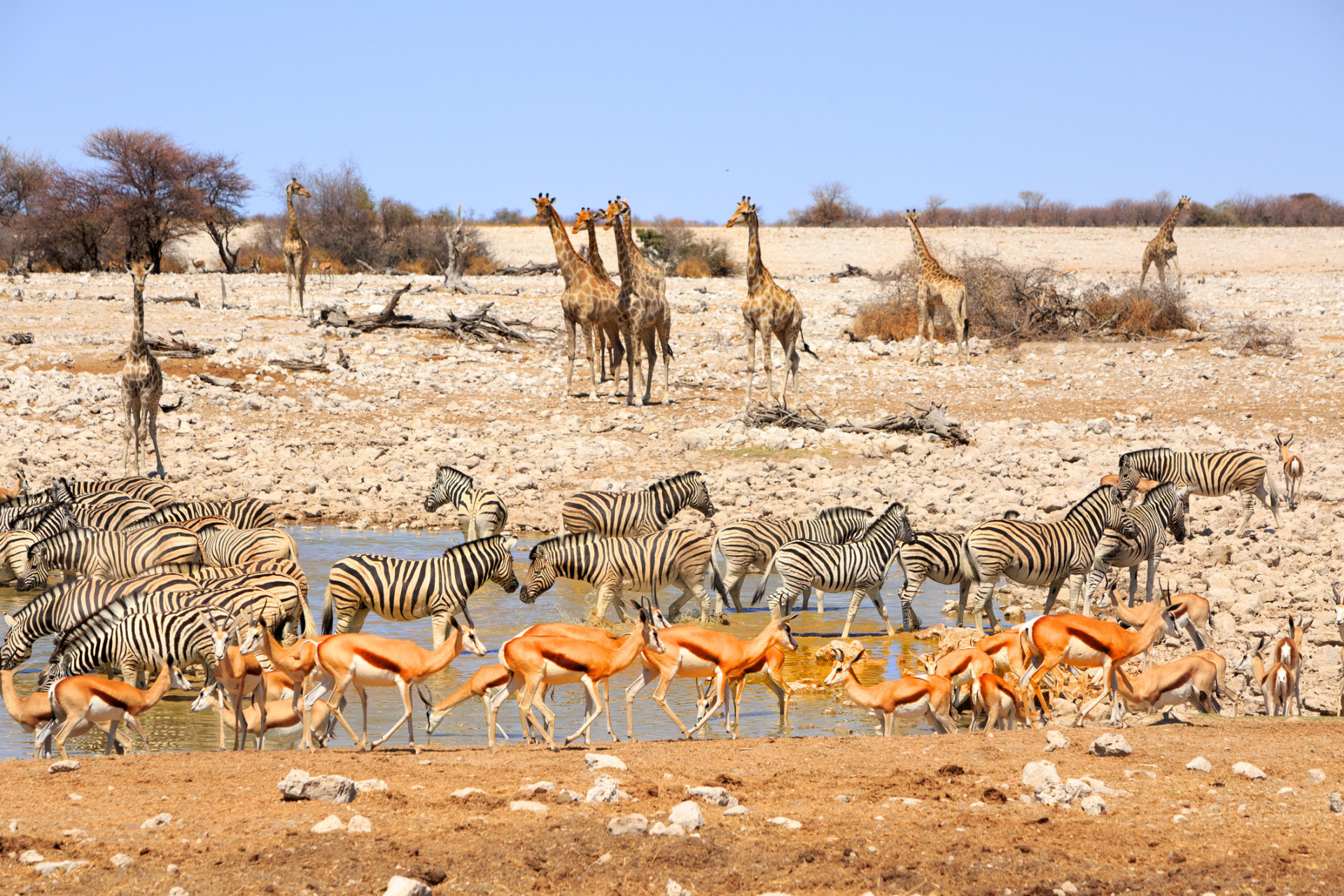
Etosha National Park, Namibia
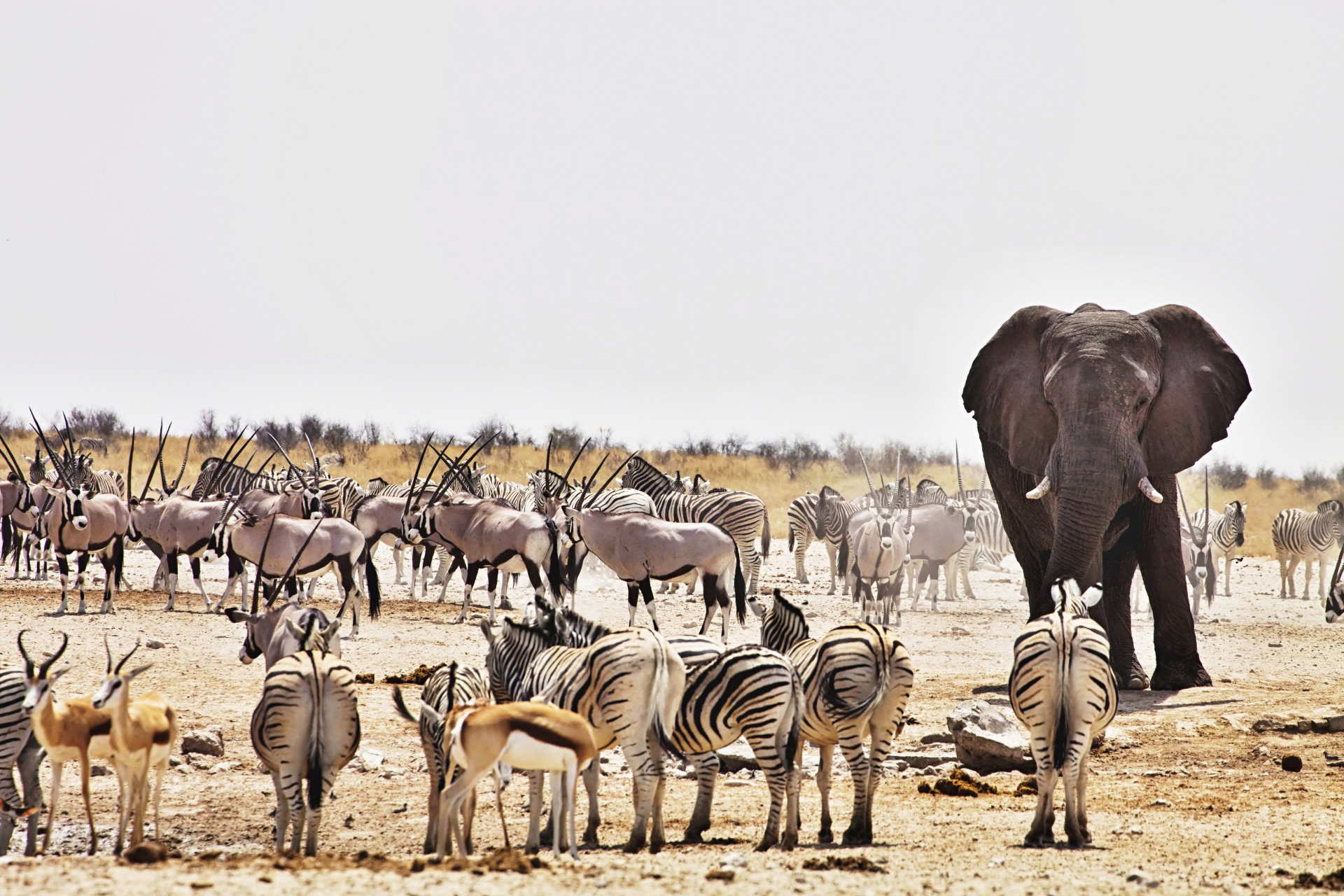
You may also like: Signs you've met your soulmate
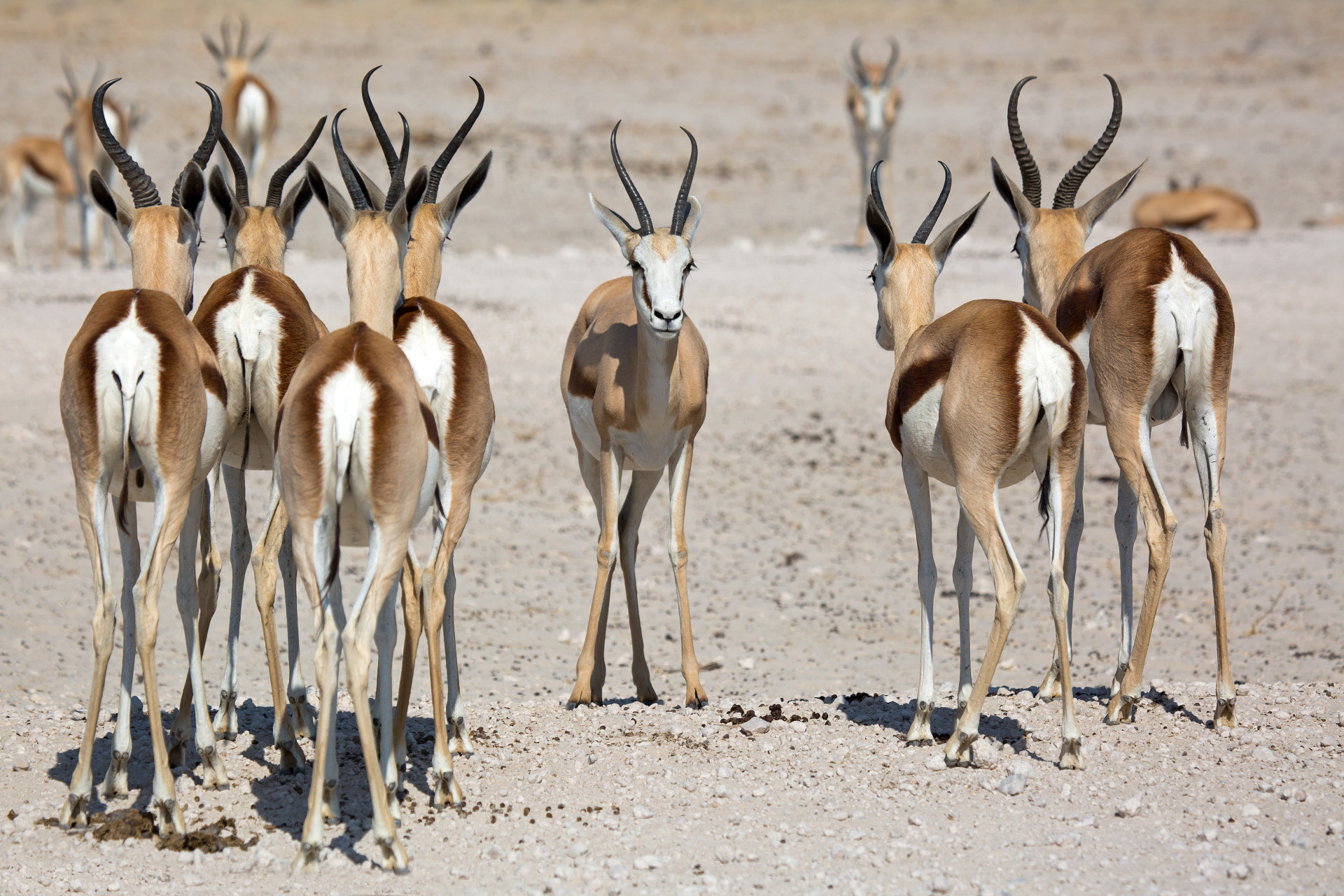
Kalahari Desert
You may also like: The forgotten art of the blacksmith
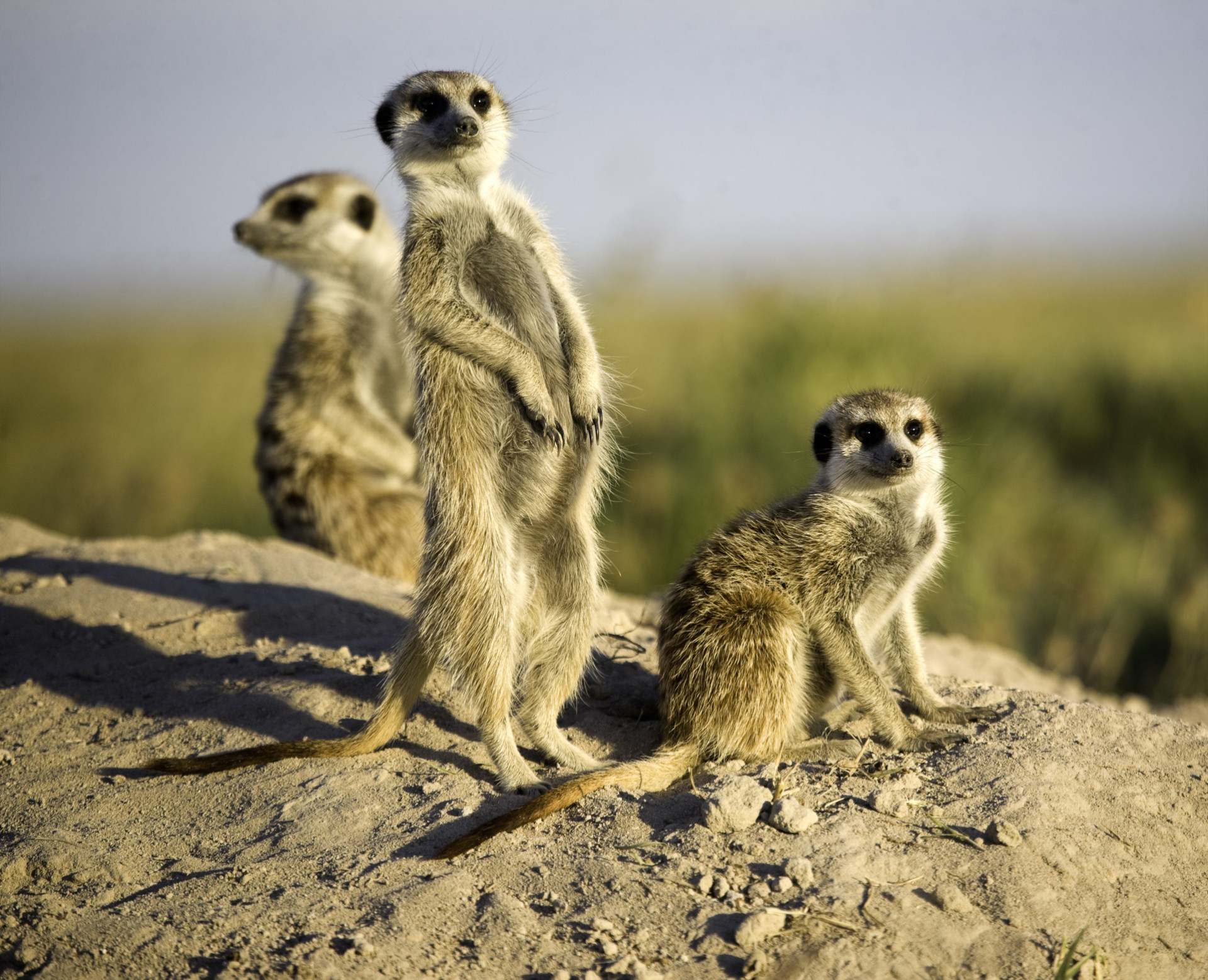
Murchison Falls National Park, Uganda
You may also like: Scandals that the Catholic Church doesn't want you to know about
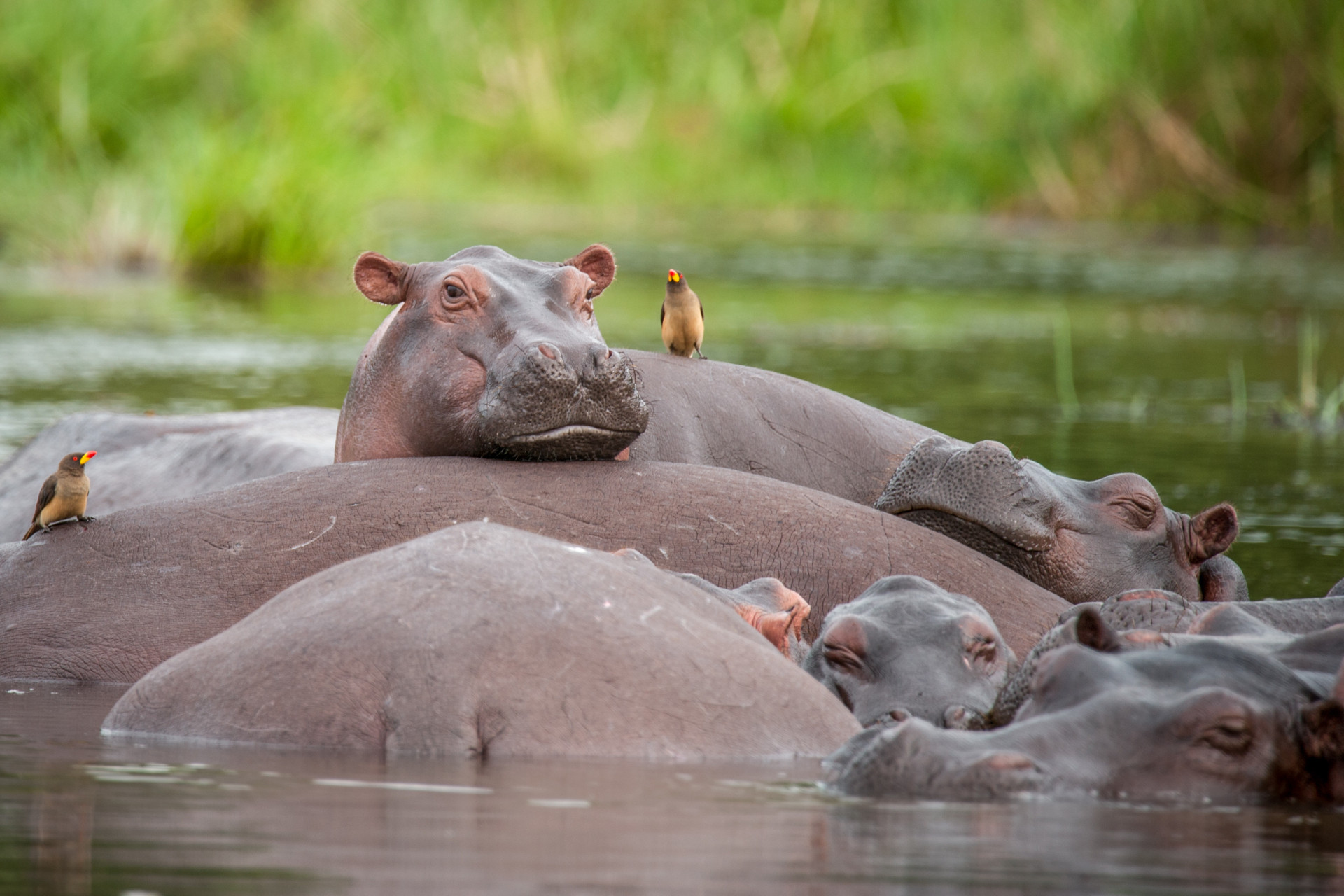
You may also like: Financial rules of thumb everyone should know
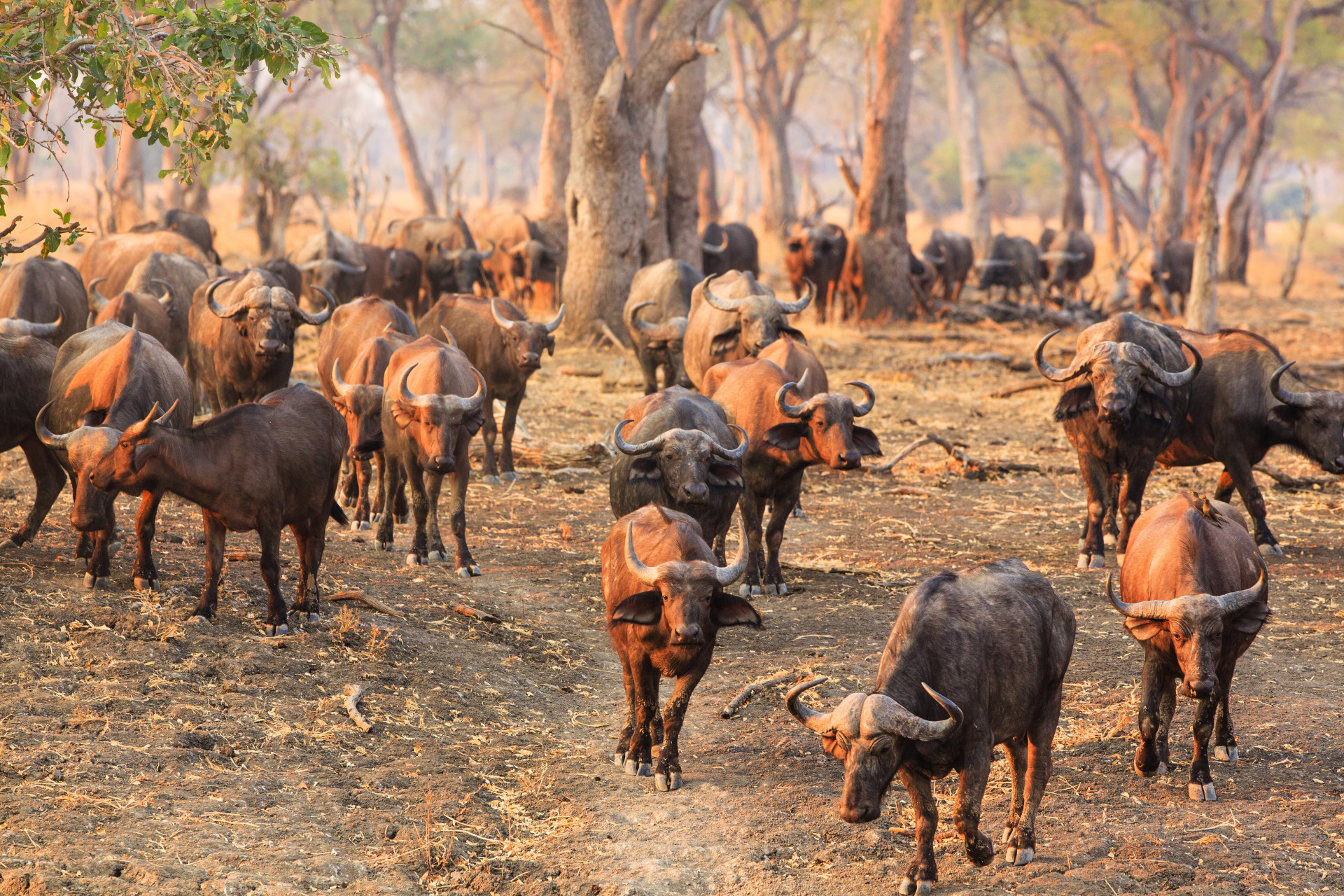
South Luangwa National Park, Zambia
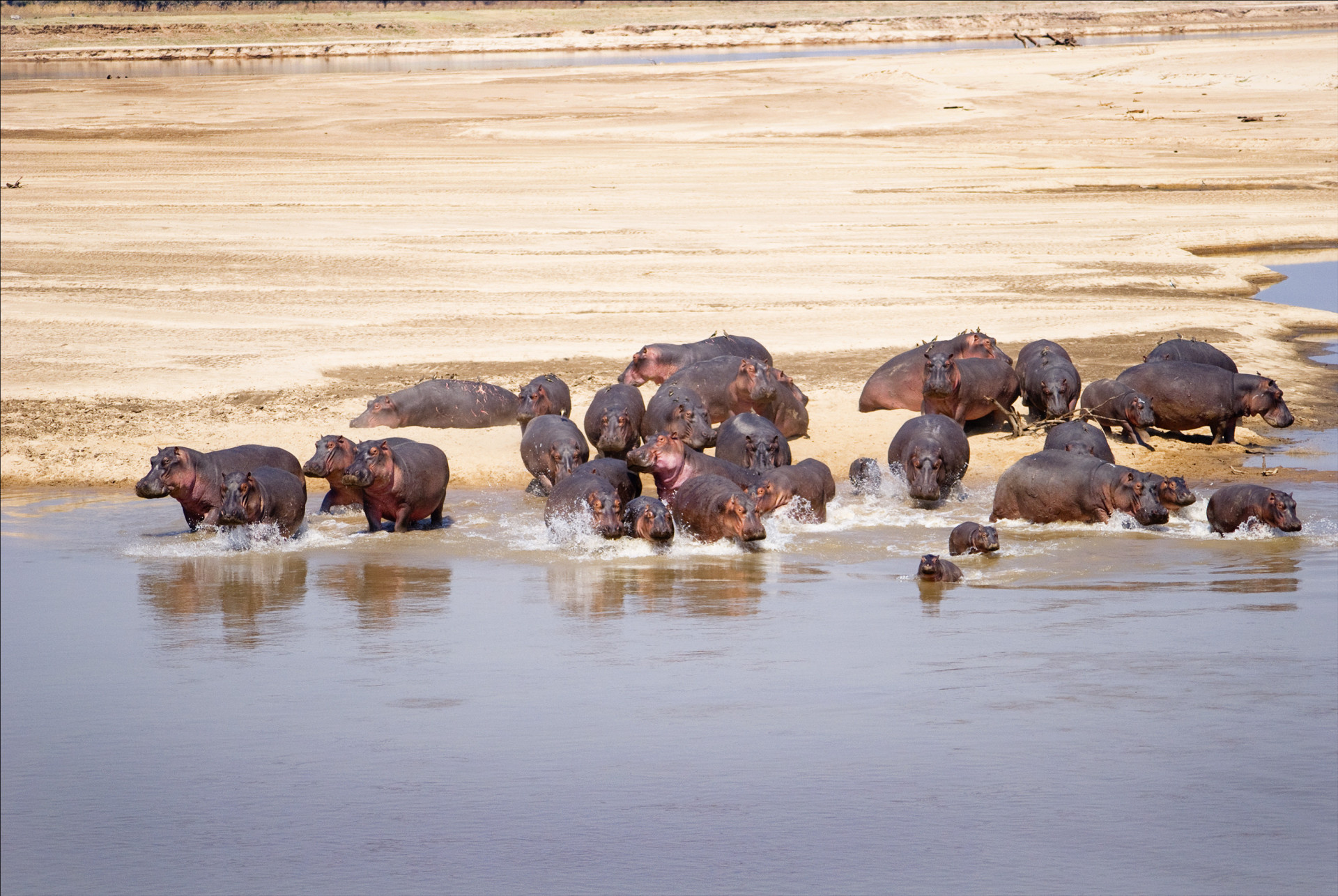
You may also like: The extravagant spending of royals around the world
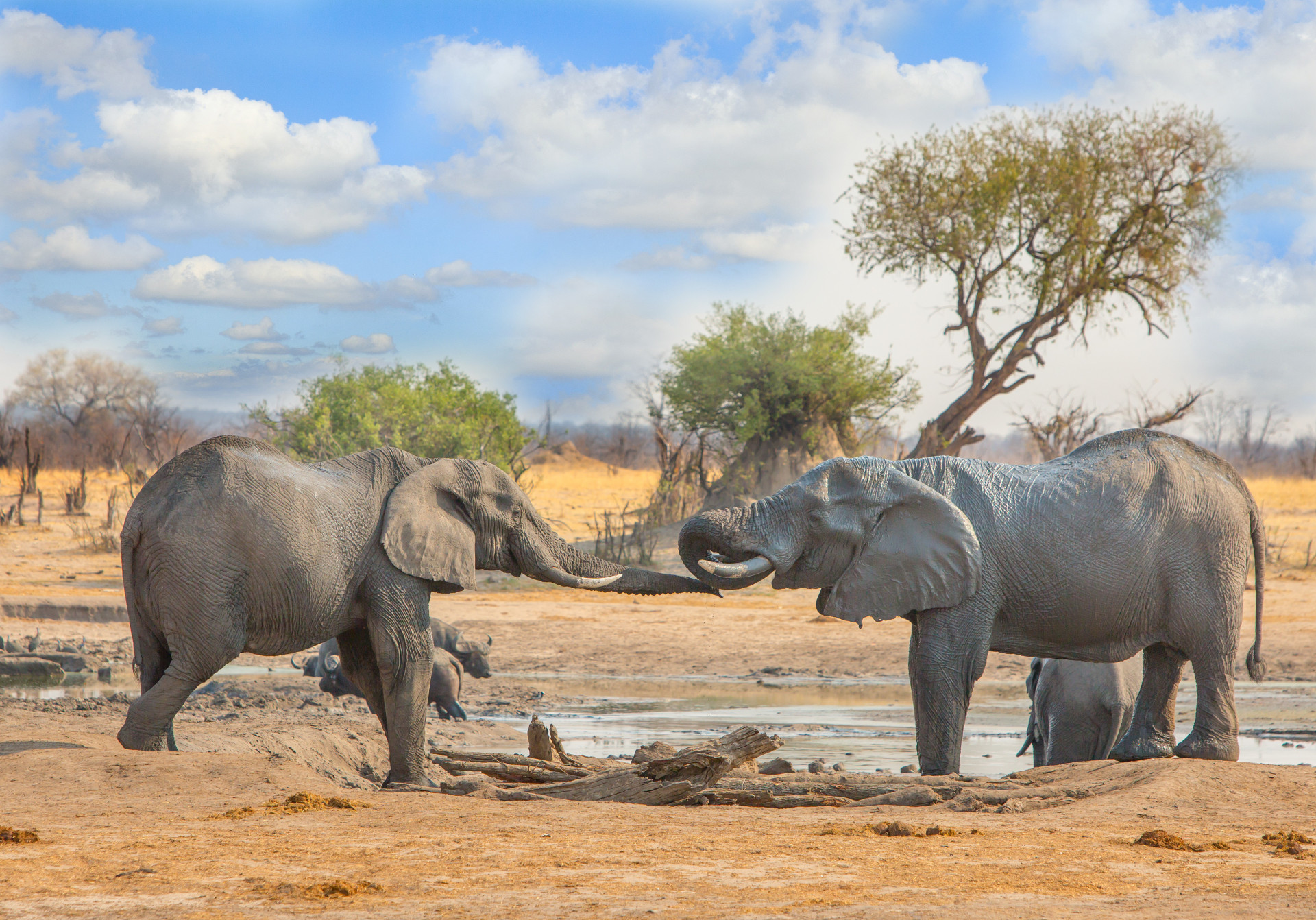
Hwange, Zimbabwe
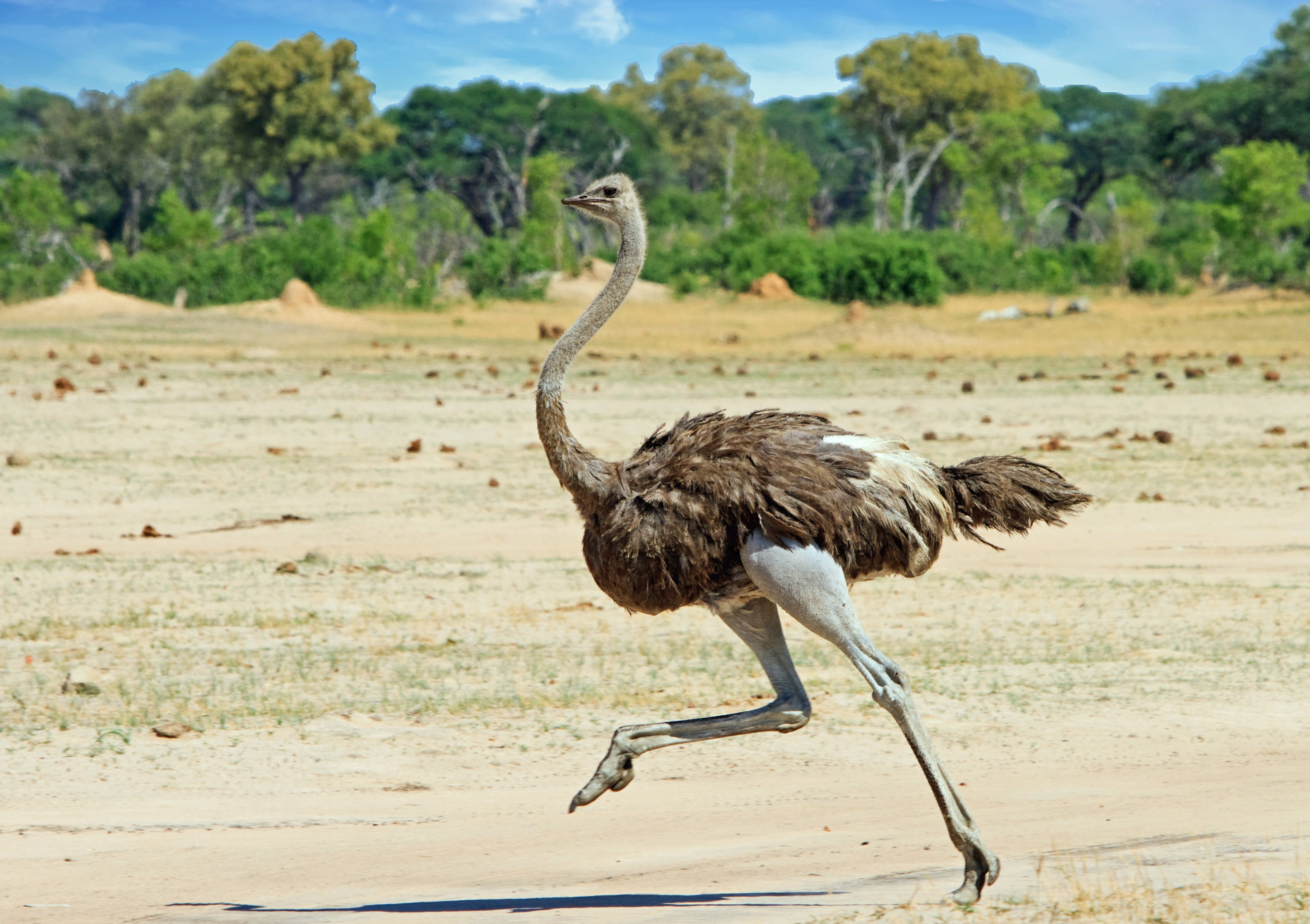
Here you will also find incredible ostriches roaming freely.
See also: Vulnerable dog breeds that could go extinct
More for You
Quake felt across much of northern NZ
Just Stop Oil supporting GP fighting against being struck off
Rhapsody in feijoa
Rory McIlroy makes decision on LIV Golf
Public service cuts: Number of job losses set to rise to more than 2000
Kyle Marisa Roth, known for her TikTok ‘blind items’, dies aged 36
Stuff to produce 6pm news for Three after Newshub closure in July
Judge tears into Trump for trying to 'intimidate' jury
31 TV Characters That Were Repulsive Human Beings When You Really Think About It
Spire collapses on one of Europe’s most iconic buildings in huge fire
Last-minute deal saves Britain’s biggest train factory from closure
Monkeypox warning after deadly new strain with pandemic potential discovered in small town
Ranked: The world's 25 weirdest ice cream flavours
15 Summer Sneakers That Might Dethrone Your Favorite Sandals
Johnny Depp says Jeanne Du Barry director had ‘great courage’ in casting him
11 incredible homes built around Mother Nature
Members of school lunches team at ministry potentially in job cut firing line
Invercargill Mayor Nobby Clark faces code of conduct investigation over use of racial slur
Russia has a new target and hopes to capture it soon
CDC investigating botched Botox shots in 9 states hospitalizing women
- You are here:
10 of the Best Ngorongoro Crater Lodges & Camps
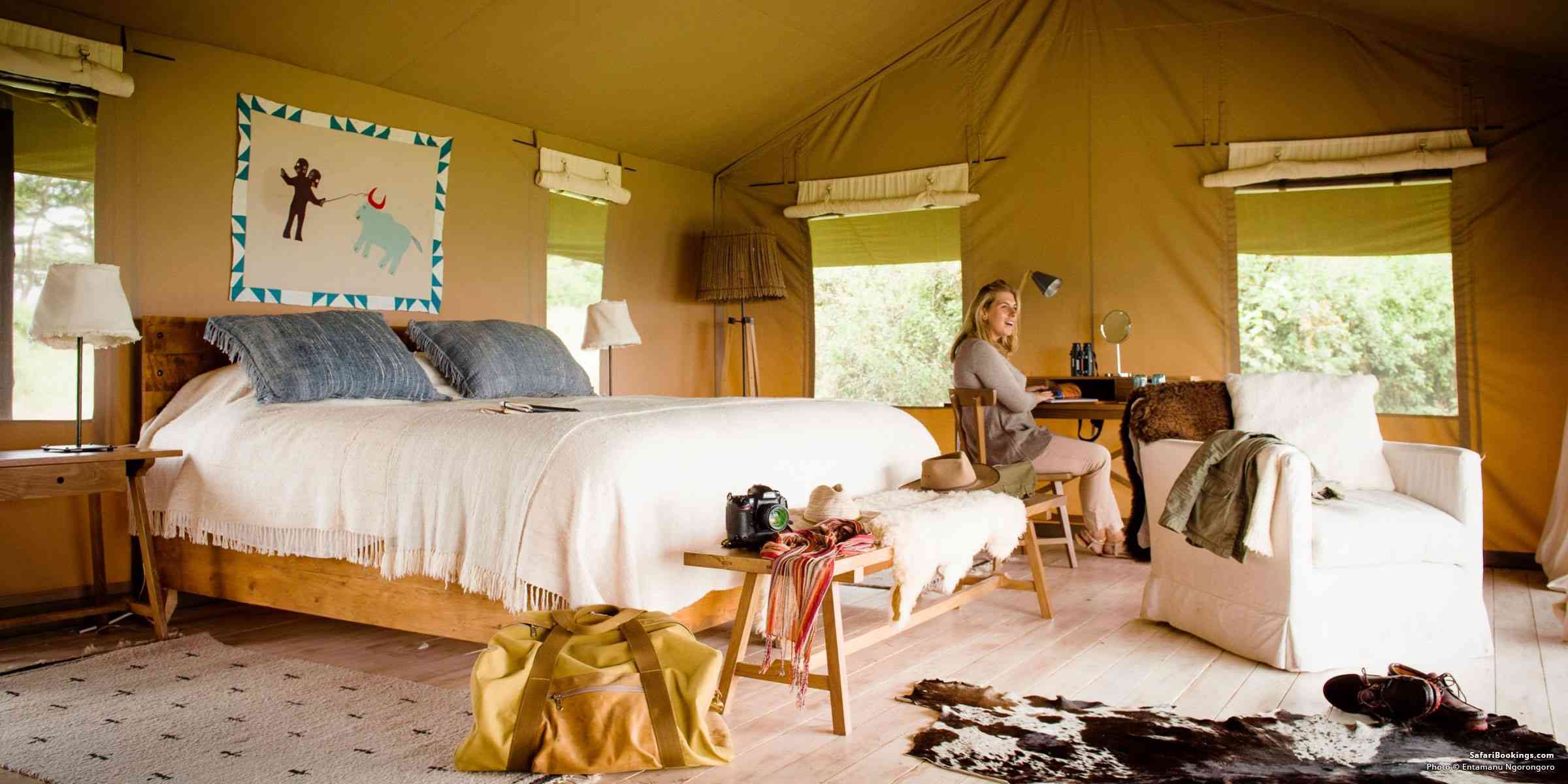
Philip is a renowned Africa expert and author of the Bradt guidebook to Tanzania.
A popular stop on Tanzania’s Northern safari circuit, Ngorongoro Crater is the world’s largest intact volcanic caldera and the centerpiece of the Ngorongoro Conservation Area (NCA). In addition to being a spectacular scenic phenomenon, the crater supports astonishing quantities of wildlife, including all the Big Five (lion, leopard, buffalo, elephant and rhino).
Accommodation at Ngorongoro is plentiful and it mostly falls into one of two broad geographic categories. Pride of place goes to a select handful of lodges and camps set right on the forested crater rim, but an increasingly varied choice can also be found around the town of Karatu, just outside the NCA’s eastern boundary.
Lodges on the crater rim offer the best views and are most convenient for morning game drives, but their counterparts around Karatu tend to be more affordable. Here are 10 of the best Ngorongoro safari lodges and camps, in approximate order of closeness to the crater floor.
Sanctuary Ngorongoro Crater Camp
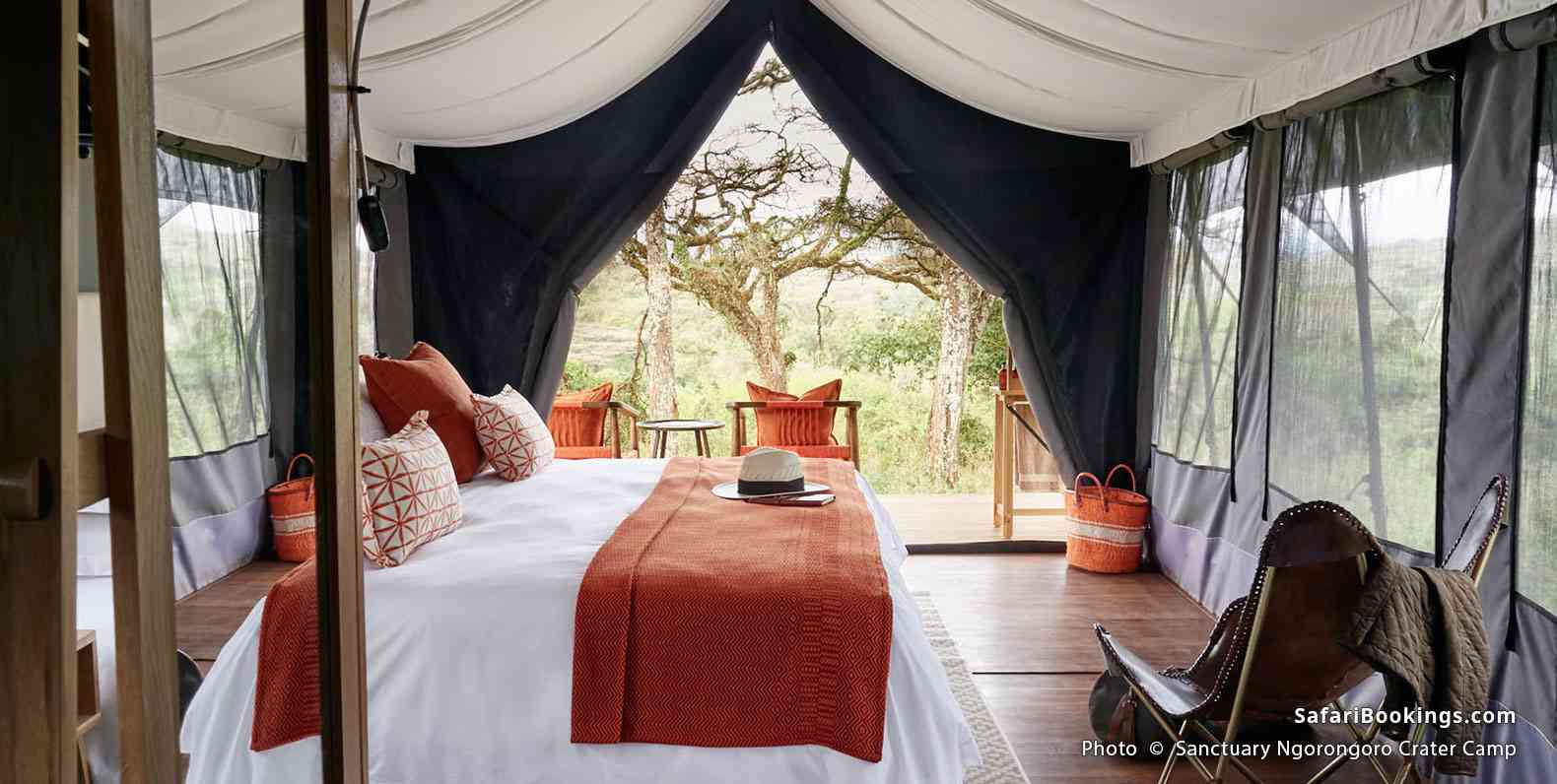
Ideal for those who don’t want to retreat behind brick and mortar at the end of a day on safari, this luxurious Ngorongoro camp has an enchanted setting in an umbrella-thorn forest on the eastern crater rim. It’s a chilly location, true, but this is countered by a roaring campfire and the provision of gas heaters and electric blankets in the spacious tents. The location, a couple of kilometers inside the easterly Lemala Gate, is perfect for early morning game drives.
Sanctuary Ngorongoro Tours
Lemala Ngorongoro
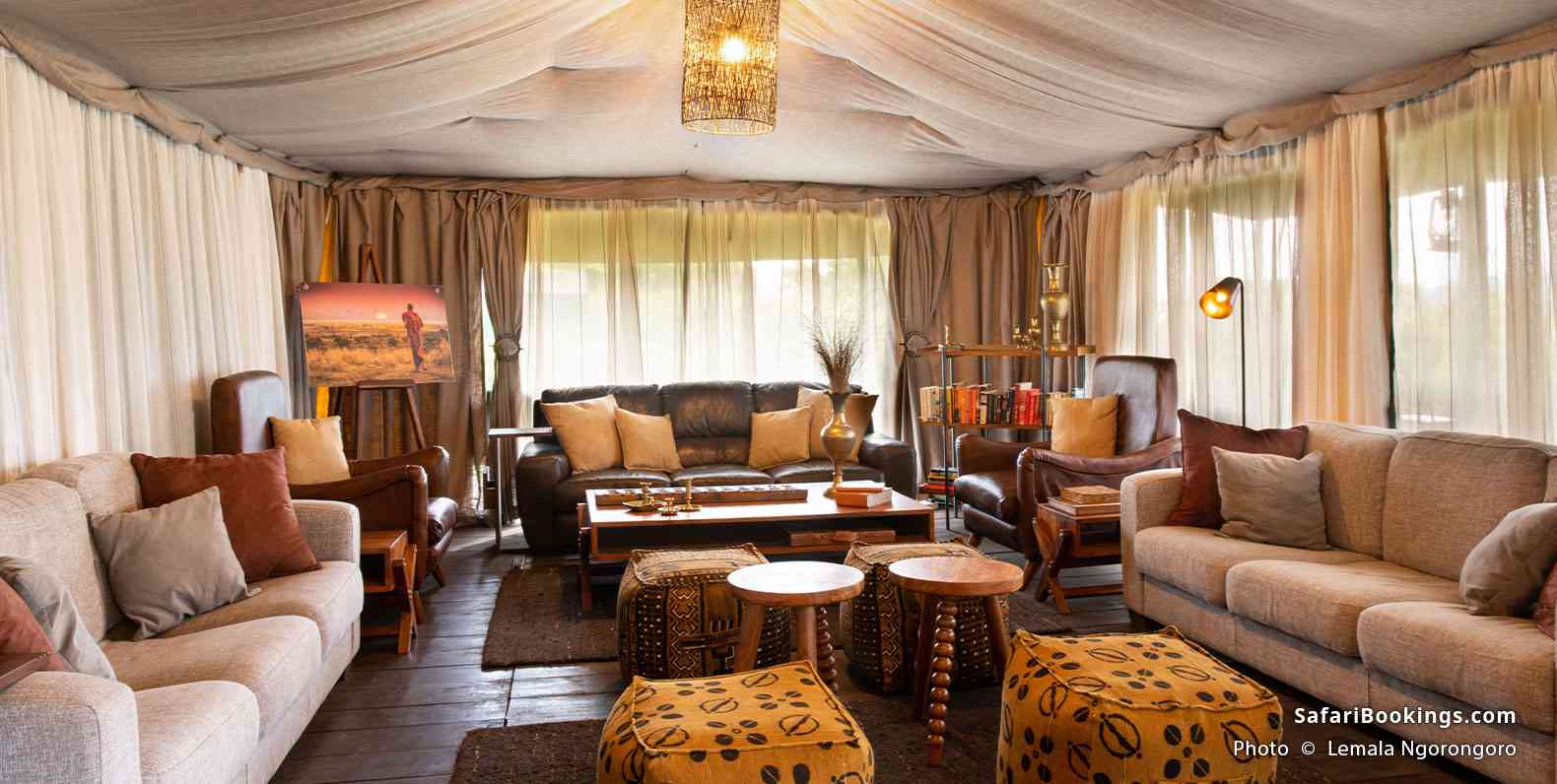
Like Sanctuary Ngorongoro, Lemala is an exclusive Ngorongoro camp set in a fairy-tale forest inside Lemala Gate. The nine tents here are truly massive (each one contains two queen-size beds) and they’re also fitted with gas heaters and 24-hour solar power. You’ll love the dining tent, which evokes safaris of old with its beautiful wood and leather furnishings.
Lemala Ngorongoro Tours
Ngorongoro Serena Safari Lodge
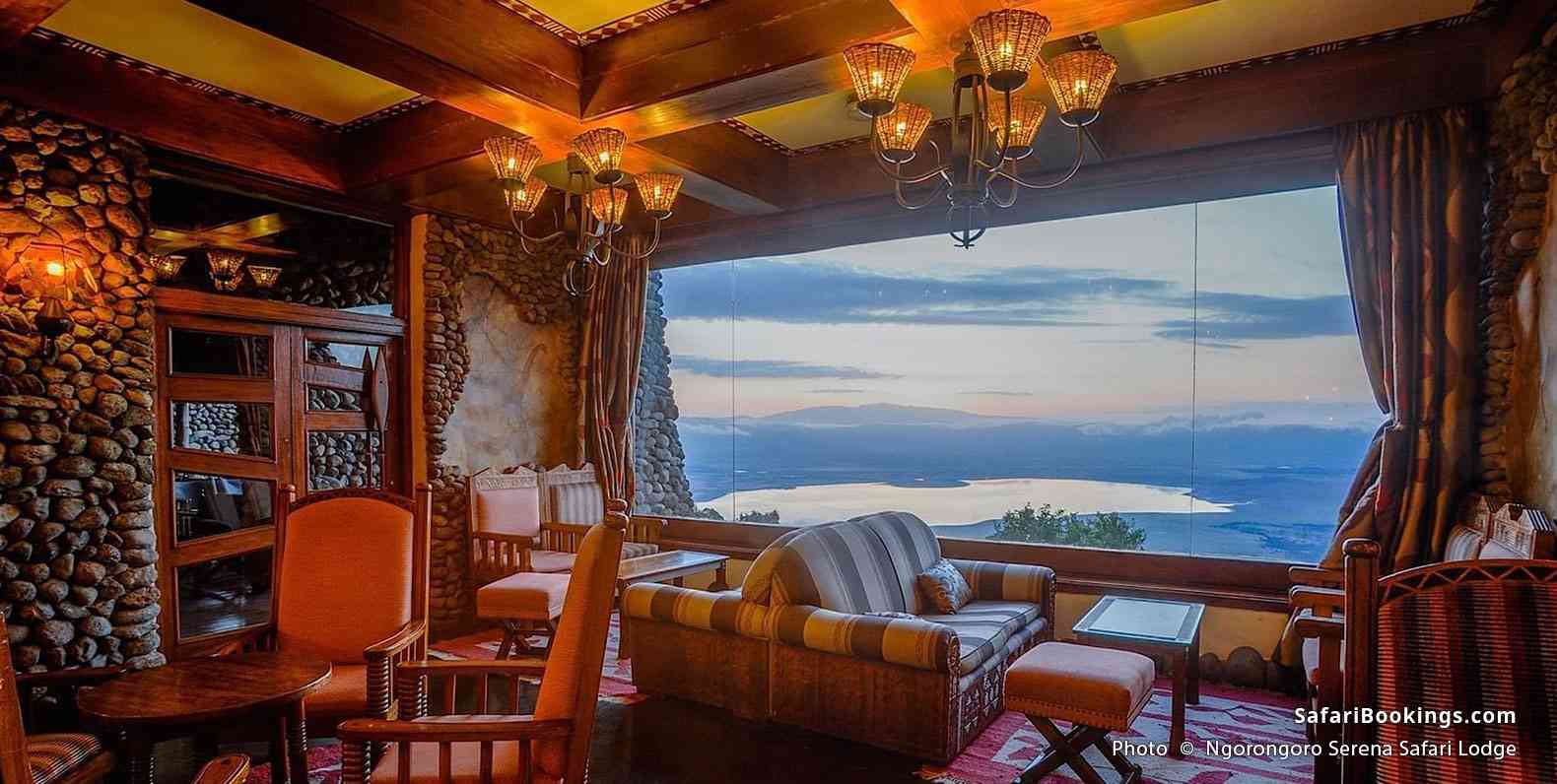
Serena Hotels operates six different properties on Tanzania’s Northern circuit, and all deliver when it comes to location, quality and relative affordability. The Ngorongoro Serena is no exception, with its spacious, centrally heated rooms and memorable setting in a forested valley overlooking the crater. Logistically, this is the closest accommodation to the main western descent road to the crater floor, which gives it a definite edge when it comes to early morning game drives.
Ngorongoro Serena Tours
&Beyond Ngorongoro Crater Lodge
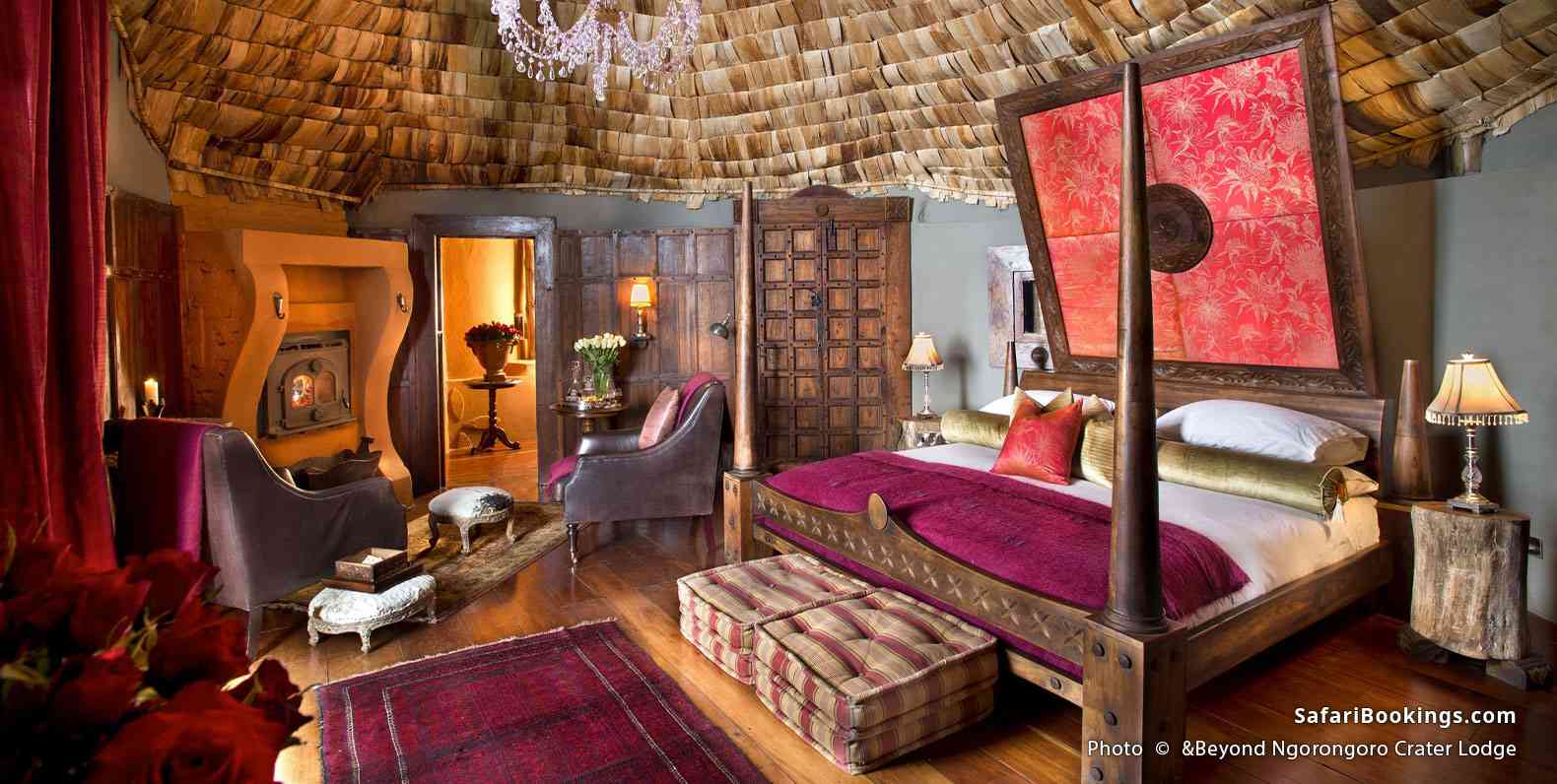
The most striking feature of most lodges on Ngorongoro’s rim is the view over the crater floor. Not so at &Beyond Ngorongoro Crater Lodge. True, this perfectly sited property, which started life as a hunting lodge in the 1930s, offers utterly unforgettable views. But it’s the playful Maasai-meets-Versailles architecture and decor, with its mix of baroque, classical, African and colonial touches, that makes it absolutely unique. What’s more, the crater is a constant visual presence throughout the lodge, at least when the highland mist permits, and game drives are led by some of Tanzania’s most knowledgeable guides.
&Beyond Ngorongoro Tours
Entamanu Ngorongoro

Nomad Tanzania operates some of the country’s most remote, luxurious and exclusive bush lodges. Entamanu Ngorongoro, the only accommodation situated on the northern crater rim, is a great example. The cottages here, newly built in 2023 and spread across two camps, are the last word in bush chic and also offer splendid views over the crater rim. But it is the isolated location, in an exclusive Maasai concession, that really sets this camp apart and allows it to provide the closest thing there is to a genuinely exclusive Ngorongoro safari experience.
Entamanu Ngorongoro Tours
The Highlands

There’s nothing formulaic about The Highlands. Built and managed by Asilia Africa, this exclusive Ngorongoro lodge has a wonderfully isolated location on the rim of the scenic Olmoti Crater, which lies in the northern NCA about an hour’s drive from Ngorongoro Crater. Accommodation is in eight stilted canvas-and-glass domed suites that offer sensational views over the forested walls of Olmoti Crater and are well insulated to offset the chilly highland climate.
The Highlands Tours
Elewana The Manor at Ngorongoro
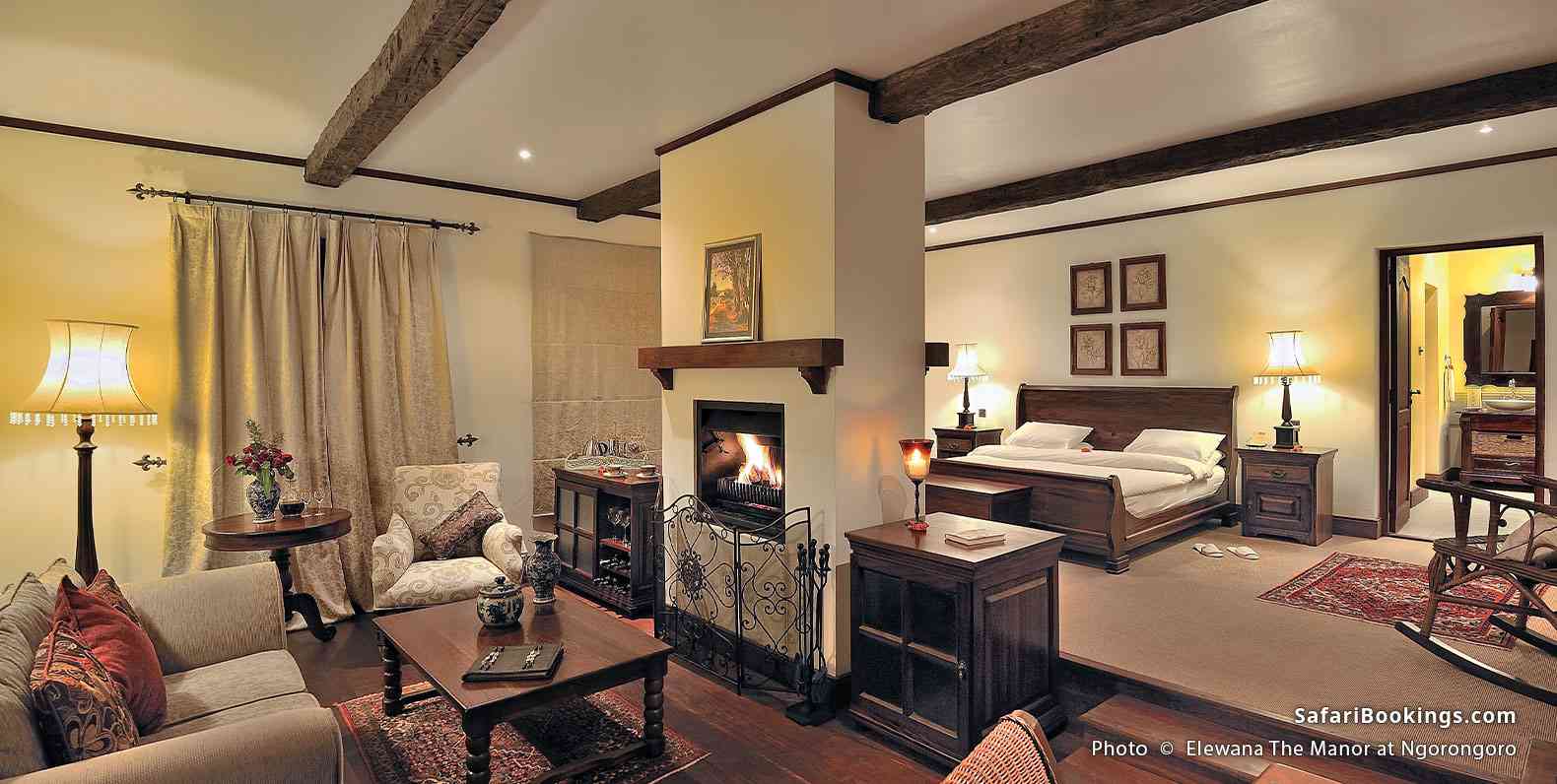
This stately lodge bordering the NCA is notable for its gabled facades and whitewashed exteriors, which recall the Cape Dutch architectural style associated with South Africa’s Winelands. It has a commanding hilltop setting on a coffee estate and the characterful split-level cottages come with king-size beds, roaring fireplaces and old-fashioned bathtubs.
Elewana The Manor Tours
Gibb’s Farm

Set on a century-old coffee estate, Gibb’s Farm first opened its doors to tourists in the 1970s and has since evolved into the most luxurious lodge near Karatu. The 17 spacious guest cottages offer a contemporary take on colonial-style decor, while hearty four-course meals prepared with homegrown organic produce are served in a converted 1920s farmhouse. There’s a big focus on community involvement: activities and services include locally guided cultural tours, forest hikes and bird walks, while the spa offers traditional massages by a Maasai elder.
Gibb’s Farm Tours
The Retreat at Ngorongoro
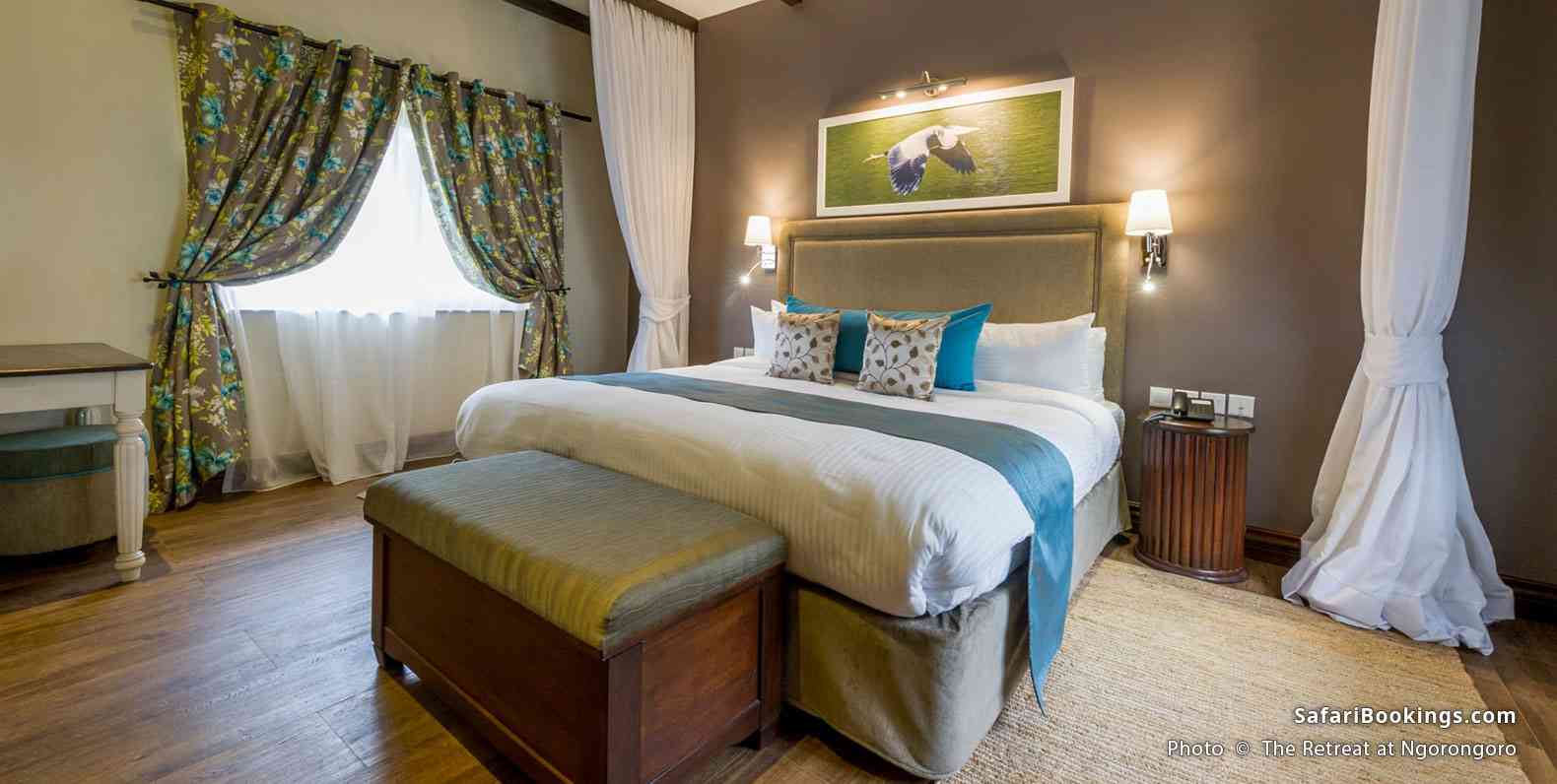
One of Ngorongoro’s best compromises between cost and comfort, this modern boutique lodge stands in large grounds that border the forests of the NCA. Cottages are large and well-equipped, and amenities include a swimming pool, gym, spa and jogging path.
The Retreat Tours
The Plantation Lodge
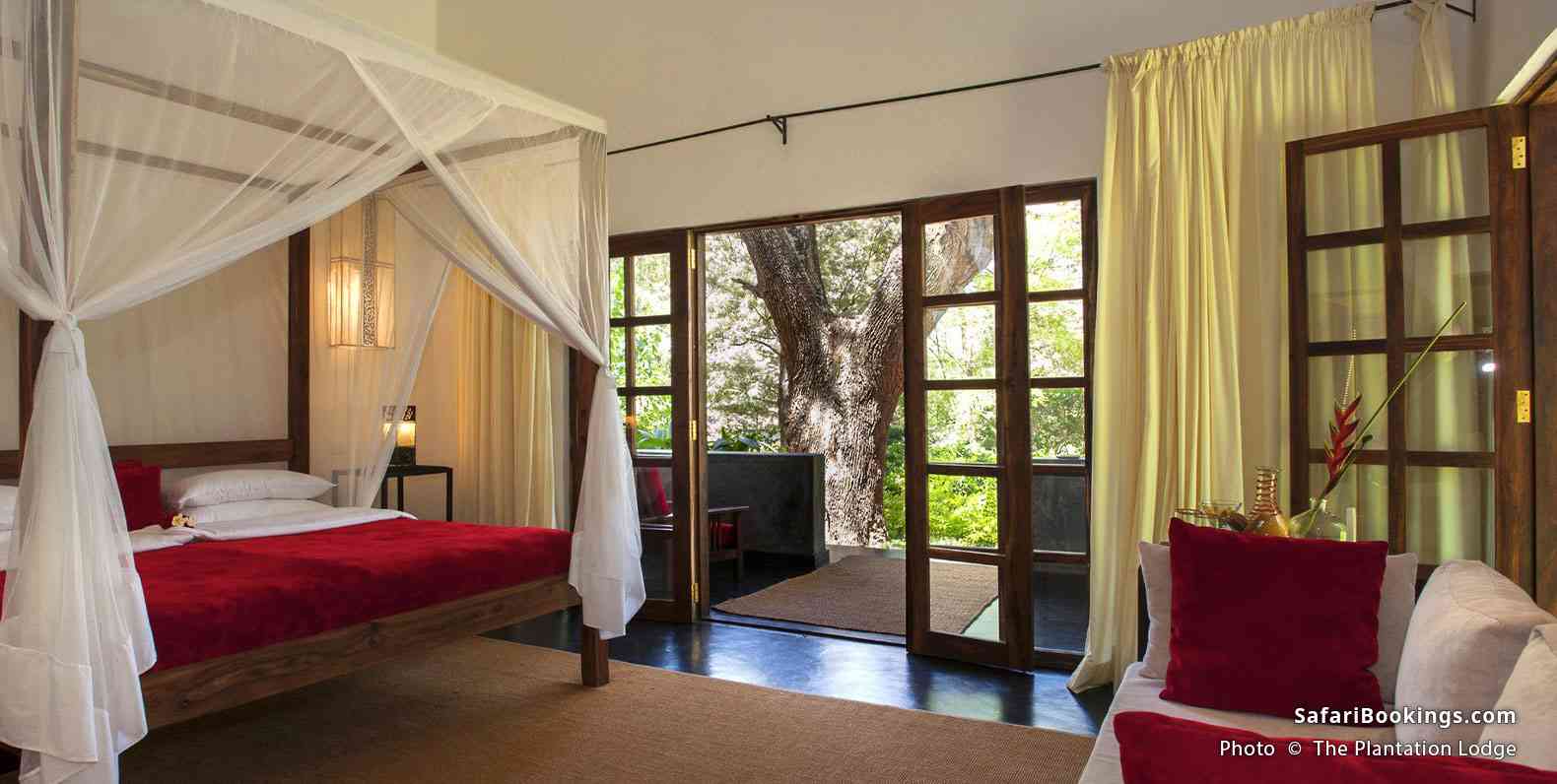
Although chain-owned lodges now dominate the Northern safari circuit, a few individually run holdouts still survive. A favorite among these is The Plantation Lodge, which has been owned and managed by the same welcoming German couple since the 1990s. Situated on the hills outside Karatu, this lodge absolutely oozes quality, from the stylish classic-contemporary decor to the swimming pool set in large flowering gardens. The exceptional cuisine is made from fresh produce grown on-site or sourced from local suppliers.
The Plantation Lodge Tours
Want To Visit Ngorongoro Crater?
Click on the button below to compare Ngorongoro safaris offered by top rated tour operators.
3,816 Ngorongoro Safari Tours
About SafariBookings
SafariBookings is the largest online marketplace for African safari tours. Easily compare offers from top-rated tour operators. Make decisions like a pro by using our 103,115 reviews and 223 destination guides. More About Us
Ngorongoro Crater
- Park Overview
- Tour Operators
Ngorongoro Crater Safaris

5-Day Tanzania Camping Safari to Serengeti National Park
$941 pp (USD)

12-Day Premium Luxury Safari&Beach Holidays All Inclusive
$4,983 to $6,188 pp (USD)
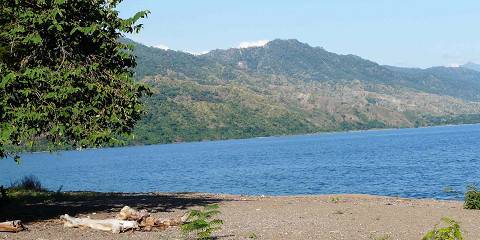
10-Day Ngorongoro, Serengeti, Zanzibar & Others
$4,230 pp (USD)
Ngorongoro Crater Safaris by Type
- Camping Safaris
- Budget Safaris
- Luxury Safaris
- Private Safaris
- Fly-in Safaris
- Serengeti Safaris
- Mount Kilimanjaro Climbing
- Zanzibar Tours
- 2-Day Safaris
- 3-Day Safaris
- 4-Day Safaris
- 5-Day Safaris
Best Time To Visit Ngorongoro Crater
Photo gallery ngorongoro crater.

Map of Ngorongoro Crater
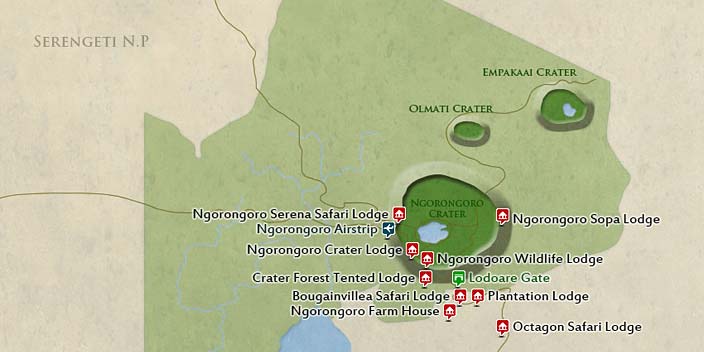
Most Popular Blog Posts
- Best Time for African Safari
- Best Safari in South Africa
- Family Safari in South Africa
- African Safari Tips
- Game Reserves Near Cape Town
- What to Pack for a Safari
- Best African Safari Parks
- Top 5 Best African Honeymoon Safaris
- Top 5 Best Tanzania Family Safaris
- Best Places to See Cheetahs in Africa
- How Much Does an African Safari Cost?
- Best Places To Visit In Africa in 2024
Blog Categories
Safari tours to tanzania.
Tanzania: Shared tour (max 6 people per vehicle) Camping
You Visit: Arusha (Start) , Tarangire NP, Serengeti NP, Ngorongoro Crater, Lake Manyara NP, Arusha (End)
Go Serengeti African Tours
5.0 /5 – 123 Reviews
Tanzania: Private tour Lodge & Tented Camp
You Visit: Arusha (Start) , Tarangire NP, Lake Manyara NP, Serengeti NP, Ngorongoro Crater, Zanzibar (Beach) , Nungwi (Zanzibar) , Zanzibar Airport (End)
Lion King Adventures
5.0 /5 – 1018 Reviews
You Visit: Arusha (Start) , Tarangire NP, Lake Manyara NP, Ngorongoro Crater, Northern Serengeti NP, Serengeti NP, Zanzibar (End)
Savannah Explorers
5.0 /5 – 484 Reviews

‘This Will Finish Us’
How Gulf princes, the safari industry, and conservation groups are displacing the Maasai from the last of their Serengeti homeland

Listen to this article
Listen to more stories on curio
This article was featured in the One Story to Read Today newsletter. Sign up for it here .
I t was high safari season in Tanzania, the long rains over, the grasses yellowing and dry. Land Cruisers were speeding toward the Serengeti Plain. Billionaires were flying into private hunting concessions. And at a crowded and dusty livestock market far away from all that, a man named Songoyo had decided not to hang himself, not today, and was instead pinching the skin of a sheep.
“Please!” he was saying to a potential buyer with thousands of animals to choose from on this morning. “You can see, he is so fat!”

Explore the May 2024 Issue
Check out more from this issue and find your next story to read.
The buyer moved on. Songoyo rubbed his eyes. He was tired. He’d spent the whole night walking, herding another man’s sheep across miles of grass and scrub and pitted roads to reach this market by opening time. He hadn’t slept. He hadn’t eaten. He’d somehow fended off an elephant with a stick. What he needed to do was sell the sheep so their owner would pay him, so he could try to start a new life now that the old one was finished.
The old life: He’d had all the things that made a person such as him rich and respected. Three wives, 14 children, a large compound with 75 cows and enough land to graze them—“such sweet land,” he would say when he could bear to think of it—and that was how things had been going until recently.
The new life: no cows, because the Tanzanian government had seized every single one of them . No compound, because the government had bulldozed it, along with hundreds of others. No land, because more and more of the finest, lushest land in northern Tanzania was being set aside for conservation, which turned out to mean for trophy hunters, and tourists on “bespoke expeditions,” and cappuccino trucks in proximity to buffalo viewing—anything and anyone except the people who had lived there since the 17th century, the pastoralists known as the Maasai.
They were the ones tourists saw through their windshields selling beaded key chains at the gates of Serengeti National Park, or performing dances after dinner at safari lodges. They were famous for their red shawls and recycled-tire sandals. They grazed their cattle with zebras and giraffes, and built mud-and-dung houses encircled by stick fences barely distinguishable from the wild landscape. They were among the lightest-living people on the planet, and yet it was the Maasai who were being told that the biggest threat to conservation and national progress was them. Their whole way of life had to go.
From the April 2020 issue: Ed Yong on the last giraffes on Earth
And so Songoyo, after considering his alternatives, had devised a last-ditch plan for his own survival, one that had brought him to a town in Kenya called Aitong, where a cool wind was slapping sand and dung into his face as he scanned the market for buyers. He was far from home, roughly 65 miles north of the village in Tanzania where he had been tear-gassed and shot at for the first time in his life. He had seen elderly men beaten and guns fired at old women, and now it was down to this: He was a herder for hire, working for a distant relative, trying to make enough money to buy one single cow.
“Come!” he called to the buyers who kept passing his herd and weaving through the bleating mass. “You will not find any better!”
This was his plan: one cow, because that was the starting point of what it meant to be a Maasai man, which was what he still wanted to be.
The forces arrayed against Songoyo, whom I met in the course of two long trips to Tanzania late last year, include some of the world’s most powerful people and interests. (I have not used Songoyo’s last name out of concern for his safety.) What these people and interests want is what the Maasai are trying to keep: the land they live on.
Global leaders are seeking what they consider to be undeveloped land to meet a stated goal of conserving 30 percent of the planet’s surface by 2030 . Corporations want undisturbed forests in order to offset pollution. Western conservation groups, which refer to the Maasai as “stakeholders” on their own land, exert great influence, as does a booming safari industry that sells an old and destructive myth—casting the Serengeti as some primordial wilderness, with the Maasai as cultural relics obstructing a perfect view.
The reality is that the Maasai have been stewards, integral to creating that very ecosystem. The same can be said of Indigenous groups around the world, to whom conservation often feels like a land grab. In the past two decades, more than a quarter million Indigenous people have been evicted to make way for ecotourism, carbon-offset schemes, and other activities that fall under the banner of conservation. That figure is expected to soar.
For all its accomplishments, the cause of saving the planet has become a trillion-dollar business, a global scramble in which wealthy nations are looking to the developing world not just for natural resources, but for nature itself. The wealthy players include not only Europeans and Americans but Arabs and Chinese and others. On the African continent, political leaders are enthusiastic about what so-called green foreign investment might mean for their own economies (and, maybe, their bank accounts).
Such are the pressures being brought to bear on northern Tanzania, where the Maasai migrated with their cattle 400 years ago, settling in an area encompassing hundreds of thousands of square miles of grassy plains, acacia woodlands, rivers, lakes, snowcapped mountains, salt flats, forests, and some of the most spectacular wildlife on the planet. They called it Siringet, which in the Maa language means “the place where the land runs on forever.” The Maasai see their recent history as a struggle to save that land from those who claimed it needed saving.
First came the British colonial authorities, who established the 5,700-square-mile Serengeti National Park, pushing the Maasai to an adjacent zone called the Ngorongoro Conservation Area, with its famous crater, where they were promised they could live. Then came UNESCO. It declared both Serengeti and Ngorongoro to be World Heritage Sites, which came with new restrictions. Western tourists began arriving, seeking an experience of Africa that a thousand movies promised—one of pristine beauty and big game, not people grazing cattle. Tanzanian authorities began leasing blocks of land to foreign hunting and safari companies, many of which promoted themselves as conservationists—a word the Maasai have come to associate with their own doom. Spread among the villages that dot the northern tourist zone, the Maasai have meanwhile been growing in number—their population has doubled in recent decades, to about 200,000. Inevitably, the clash of interests has led to bitter and occasionally violent conflict.
Still, the threat unfolding now is of greater magnitude. It emerged soon after President Samia Suluhu Hassan took office, in 2021. “Tourism in Ngorongoro is disappearing,” she declared during one of her first major speeches. “We agreed that people and wildlife could cohabitate, but now people are overtaking the wildlife.” The Maasai listened with alarm, realizing that the people she was referring to were them.
Not long after Hassan’s speech, officials announced plans to resettle the roughly 100,000 Maasai who were living in and around Ngorongoro to “modern houses” in another part of the country. Meanwhile, in a region north of Ngorongoro, bordering Serengeti National Park, government security forces began rolling into Maasai villages. They were carrying out another part of the plan: annexing 580 square miles of prime grazing land to create an exclusive game reserve for the Dubai royal family, which had long hunted in the area. The government characterized the move as necessary for conservation. Traditional Maasai compounds, known as bomas , were burned. Park rangers began seizing cattle by the tens of thousands.

And more was coming: a $7.5 billion package with the United Arab Emirates , of which Dubai is a part, that included new plans for tourism and conservation. A $9.5 million deal with the Chinese for a geological park that overlapped with additional Maasai villages. An offer from Tanzania to make Donald Trump Jr.—an avid trophy hunter—an official “tourism ambassador.” New maps and proposals from the government indicated that further tracts could soon be placed off-limits, including a sacred site that the Maasai call the Mountain of God.
Read: What trophy hunting does to the elephants it leaves behind
“This is 80 percent of our land,” a Maasai elder told me one evening during a meeting with other leaders in northern Tanzania. “This will finish us.” They had tried protesting. They had filed lawsuits. They had appealed to the United Nations , the European Union , the East African Court of Justice, and Vice President Kamala Harris when she visited Tanzania in 2023. They’d unearthed old maps and village titles to prove that the land was theirs by law, not just by custom. They’d written a letter to John and Patrick McEnroe after hearing that the tennis stars were hosting a $25,000-a-person safari-and-tennis expedition in the Serengeti. People made supportive statements, but no one was coming to help.
This is what Songoyo understood as he paced the market in Aitong. It was closing soon. Buyers were filtering out through the wire fence, and he still had 12 sheep left to sell, one of which was lame. A man tapped it with a stick.
“A cow stepped on his leg; that’s why he walks like that,” Songoyo said, bracing the animal with his knees.
The man walked away. Another came and tapped his stick on the lame sheep, and then on the rest of them. They agreed on a price, and the buyer pulled out a roll of bills.
“Please, can you add 500?” Songoyo said, asking for the equivalent of an extra $3.60 in Kenyan shillings. “I need 500. Please.”
The man added 200, and Songoyo brought the day’s earnings to the relative who had hired him. They sat under a tree, and he counted out Songoyo’s share for a week of work, roughly $10. One cow would cost about $200.
“See you next week,” the man said.
“May God give you favor,” Songoyo replied, putting the money in the pocket of his blue track pants. His cellphone rang, a battered plastic burner.
“I am coming,” he told one of his wives, who was waiting for him at their home in Tanzania.
He’d had options other than this. There had always been Maasai who’d given up traditional ways to reinvent themselves, shedding their red shawls for all kinds of lives. Now many more of them, having lost their cattle, were moving to cities, where the Maasai reputation for bravery and rectitude meant there was always work as a security guard—I saw them everywhere in Arusha and Dar es Salaam, in front of shops and banks. Others had taken a government offer to resettle in a town called Msomera, far to the south, only to return home with stories of loneliness and conflict with locals. Still others were falling apart. Songoyo had seen them, drunk men hobbling along the road or passed out on their red shawls under trees in the daytime. That would not be him.
“Never,” he said, and began the long walk back to his village in Tanzania, a tall man wrapped in a pink-and-purple plaid shawl passing cinder-block taverns where he would not drink, and motorbikes he would not hire, because the point was to save money for the cow. No cows, no life , he told himself, picking up the pace along an orange dirt road stretching into the late afternoon.
His earliest memories were of cows; he had never been without them. They were the huge, warm, brown beasts kept in the center of the boma. Their dung formed the walls of his home. Their milk and blood were what he drank as a child, when his father told him what Maasai children were traditionally told: that when the earth split from the sky and God left the world, he entrusted the Maasai with all the cattle, and by extension the land and the other animals that shared it. Songoyo learned how to herd with rocks, pushing them around in the dirt. He got his first calf when he was a small boy, herding it with a stick near the boma. When he was big enough, he followed his older brothers out into the wider grazing areas, including one the Maasai called Osero , a word that refers to lush grasslands—in this case, the 580 square miles of land adjacent to Serengeti National Park where Maasai had lived and kept cattle for generations.
It was in Osero that he learned about different kinds of grasses and trees: which ones had good branches for bows or good bark for tea that could ease a backache. He learned where to find natural salt and the coolest streams, and he learned certain rules: Never cut down a tree. Keep cattle away from wildebeests during calving season, because they carry a disease deadly to cows.
He listened to older boys tell stories, including one whose lesson he still lived by, about a group of Maasai heading out on a cattle raid when one of the warriors broke his sandal. The warrior turned to the man behind him and asked if he would stay and help, but the man refused. He asked another, who also refused, and so on until the very last one agreed to stay, while the rest continued on to cattle-raiding glory. The stern moral was: Be prepared. Don’t fall behind. Stay with the group. Struggle.
Songoyo had struggled. He held himself together after his father died, when he was still a boy, a moment when he might have turned delinquent but didn’t. He endured his adolescent coming-of-age ceremonies with dignity, by all accounts managing not to cry or shake during his circumcision, when people scrutinize and taunt boys for any sign of weakness, and he was rewarded with cows. He learned how to shoot arrows and use a machete, and became a moran —entering a stage of life when young Maasai men bear responsibility for protecting their village—and was given more cows, each with a name, each with a certain character he came to know. In this way, the life he wanted became possible.
He married his first wife, then a second and a third, and eventually built a boma in the village where his children went to school, and a larger compound on the edge of Osero, where the cattle were kept, and where he’d had one of the happiest moments of his life. This was just before everything began to unravel, an otherwise ordinary day when the rains were full and the cows were fat and he’d walked out into the middle of them, their bells jangling, realizing how far he’d come and thinking, “Yes, I am a real Maasai.”
Not that life was an idyll. In village after village that I visited, people described years of tensions with safari companies and conservation authorities. People who lived within the Ngorongoro Conservation Area—a vast zone that was almost like its own country—had complained about schools falling apart and poisoned salt licks and the indignity of their identity being checked as they came and went through the tourist gate. In other areas, people had accused certain safari companies of illegally acquiring leases and paying local police to beat herders off concessions. One company was notorious for using a helicopter to spray scalding water on cows.
In Osero, the problems went back to 1992, when an Emirati company called Otterlo Business Corporation (OBC) was first granted a hunting license for the Dubai royal family. They had their own private camp and a private airstrip and, for the emir himself, Sheikh Maktoum bin Rashid Al Maktoum, a compound on a hill, guarded by a special unit of the Tanzanian military police. When the rains ended each year, cargo planes full of four-wheelers and tents and pallets of food would buzz low over villages before landing, followed by private jets delivering the royal family and their guests. A few weeks later, they’d buzz out with carcasses of zebras and antelope and other trophies. For a while, OBC had its own cellphone tower, and Maasai villagers noticed that when they were near it, a message would pop up on their phone screens: “Welcome to the U.A.E.” The arrangement had been that the Maasai were supposed to keep away when the royals were in residence, but just about everyone had caught a glimpse. Songoyo had seen them speeding around, shooting animals from trucks with semiautomatic rifles. “Once, they pulled up in the middle of my cows and I saw them shooting so many antelope,” he told me. “They just kill, kill, kill!”

There had been attempts at diplomacy. Sometimes the Arabs, as the Maasai called them, would give out bags of rice. They had hired Maasai men to work as guides and drivers and had flown some of their favorite employees to Dubai, buying them clothing and cars. One driver recalled being at the camp on a day when the emir arrived. The driver lined up with other staff, and the emir greeted each one of them while an assistant followed behind with a large bag of cash, inviting each worker to reach in. The driver said he pulled out $1,060.
But a bitterness was always there. Maasai leaders had long claimed that Osero belonged to 14 adjacent villages, and that they had never consented to the OBC deal. Tanzanian officials asserted authority over not only Osero but a far larger expanse—Loliondo—citing its colonial-era designation as a game-controlled area; they often resorted to violence to enforce this view. Maasai villagers described to me how government security forces had collaborated with OBC at least twice in recent years to conduct a large-scale torching of bomas in the vicinity of the camp. Young men grazing cows had been beaten and shot at. One man described to me being shot in the face, then handcuffed to a hospital bed as he was bleeding through his ears and nose and eyes, slipping in and out of consciousness. He remembered a police officer shouting at a doctor to let him die, and the doctor refusing the order and saving his life. He lost his left eye, the socket now scarred over with skin, and had kept a thin blue hospital receipt all these years in the hope of receiving restitution that never came. Most villages have people who can tell such stories.
Read: The war on rhino poaching has human casualties
In 2017, amid rising complaints and lawsuits filed by Maasai leaders, Tanzanian authorities suspended OBC’s license and accused the company’s director of offering some $2 million in bribes to the Ministry of Natural Resources and Tourism, which led to a court case that ended in a plea deal. Requests to interview OBC executives, representatives of the Dubai royal family, and officials of the U.A.E. government about their involvement in Tanzania went unanswered.
By the time Hassan became president, in 2021, the director was back on the job and the OBC flights had resumed.
Samia Suluhu Hassan was widely embraced by West and East. Her predecessor, John Magufuli, who died in office, had been a populist with an authoritarian streak and became infamous for downplaying the dangers of COVID. He suspended media outlets, banned opposition rallies, and alienated foreign investors, even as many Maasai saw him as a hero for brushing back OBC.
Hassan eased his more repressive policies and embarked on an ambitious plan to bring foreign investment into the country, especially through tourism. She branded herself a forward-looking environmentalist.
And she found willing collaborators. The World Bank had been encouraging more tourism , arguing that it could help Tanzania achieve what official metrics define as middle-income status. One of the country’s main conservation partners, UNESCO, had been pressing Tanzanian authorities for years to implement what it called “stringent policies to control population growth” in Ngorongoro, although UNESCO also says it has never supported the displacement of people. A German conservation group called the Frankfurt Zoological Society, a major partner in managing Serengeti National Park, has expressed concern that traditional Maasai practices are becoming less tenable because of population growth. “There is a risk of overuse and overgrazing that should be addressed,” Dennis Rentsch, the deputy director of the society’s Africa department, told me. “I don’t want to vilify the Maasai. They are not enemies of conservation. But the challenge is when you reach a tipping point.”
In response to these pressures, the Ministry of Natural Resources and Tourism produced a report that blamed rising Maasai and livestock populations for “extensive habitat destruction” in conservation zones. It recommended resettling all of Ngorongoro’s Maasai. It also recommended designating the 580-square-mile Osero tract, farther away, as a more restrictive game reserve, describing the land as an important wildlife corridor and water-catchment area for the Serengeti ecosystem. The designation left the Dubai royal family with an exclusive hunting playground. But none of the Maasai who lived in the area would be allowed to graze their cattle or continue living there.
Maasai leaders countered with two reports of their own—more than 300 pages covering colonial history, constitutional law, land-use law, and international conventions, and providing copies of village titles, registration certificates, and old maps—to prove their legal right to the land as citizens. They blamed habitat destruction on sprawling lodges, roads bisecting rangeland, trucks off-roading across savannas, and “huge tourist traffic.” Overgrazing was a result of being squeezed into ever smaller domains, which kept the Maasai from rotating grazing zones as they normally would. Citing their own surveys, they said the government had inflated livestock numbers, a claim supported by Pablo Manzano, a Spanish ecologist with the Basque Centre for Climate Change, who had conducted research in the region and found that the government was perpetuating a tragic misunderstanding.
Manzano and others pointed to a growing body of scholarly research demonstrating what the Maasai had long known: that their management of the land did not degrade the Serengeti ecosystem but had actually helped sustain and even create it—the grasslands the Maasai had cultivated for hundreds of years were the same grasslands that many wild animals needed to thrive. In that sense, the land had already been conserved before the Germans, the British, and various international groups decided that they needed to save it.

In their reports, Maasai leaders concluded that the government was engaged in “a calculated process to wipe out animals” and to “devastate their livelihood and culture.” They took a bus to the capital and delivered the two reports in person to government officials.
But there would be no debate, no discussion of complexities. Hassan moved forward with her agenda. She was finalizing the $7.5 billion package with the United Arab Emirates, the fourth-largest (after China, the EU, and the U.S.) investor in Africa. One deal turned over management of roughly two-thirds of Dar es Salaam’s port to DP World, a company owned by the U.A.E. government. Another deal turned over management of some 20 million acres of forest —roughly 8 percent of the nation’s entire territory—to a company called Blue Carbon, which is run by a member of the royal family, Sheikh Ahmed Dalmook Al Maktoum, and uses conserved land to generate carbon credits that it sells to other companies. The package also included money for tourism.
Hassan invited travel agents to the country for a “tourism reboot.” She spoke of wanting more five-star hotels. She filmed a promotional documentary called The Royal Tour , which at one point involved helicoptering with a travel reporter over some Maasai villages near the Serengeti.
“All those round things down there are the Maasai bomas,” Hassan says in the film, as several villagers look up into the sky. The reporter then comments in a way that Maasai leaders found ominous: “Over the years, the Tanzanian government has tried to persuade the Maasai to become traditional farmers or ranchers, but they’ve persisted in clinging to their ancient ways. And yet, they may not have a choice now.”
Some 400 miles to the south, in the hotter, flatter farming area of Msomera, bulldozers broke ground on a new development. The military was building 5,000 cinder-block houses intended for Maasai families. Officials had been dispatched to villages in the Ngorongoro Conservation Area to present the government’s offer: a free house on 2.5 acres. Electricity. Piped water. New schools. A cash bonus of roughly $4,000 for early takers. At one such presentation, a crowd pelted the officials with rocks.
I requested an interview with Hassan to better understand her decisions. In response, a government spokesperson arranged interviews with several other officials, one of whom was Albert Msando, a district commissioner, who told me, “Whatever I am answering is whatever the president would have answered.” We met in the town of Handeni, near Msomera. Msando’s office was inside a former British-colonial building, where a portrait of Julius Nyerere, Tanzania’s founding father, hung on one wall and a portrait of Hassan hung on another.
“For the public interest,” Msando said of the Maasai, “we have to relocate them.” A lawyer by training and demeanor, Msando emphasized that any relocation is voluntary, at least for now. He also made it clear that if persuasion fails, the government maintains the legal right to remove the Maasai from conservation areas, by force if necessary. “That’s why there are guys here with their shoulders decorated,” Msando said, pointing around the room to police and military officers.
He told me that anyone in Tanzania would be lucky to get what the Maasai were getting. “We are giving them nice houses, I believe, according to modern standards.” He said that the Maasai currently live in “filthy conditions” and should be helped to “live a better life.”
He and other officials I spoke with said that they disliked even using the term Maasai . They invoked the spirit of Nyerere, saying that Tanzania was supposed to have a national identity, not tribal ones. Msando said he could understand the Maasai’s concern about losing their culture, even if he had little sympathy for it. “Culture is a fluid thing,” he said. “I am Chaga—the Chaga were on the verge of having their own nation. Today look at me. People do not even know I’m Chaga. My kids don’t even speak Chaga.” He was unapologetic: “The Maasai are not exempted from acculturation or cultural acclimatization, or cultural extinction.”
The government’s plans moved forward. In June 2022, a convoy of trucks carrying hundreds of security personnel rolled into the 14 villages bordering Osero, a show of force that the Maasai had never seen before. Soldiers, police, and park rangers set up camps on the outskirts of each village, announcing their intention to demarcate the boundary of the new game reserve. What happened next unfolded sporadically over several days. It has been documented in reports by human-rights groups and was described to me by dozens of witnesses and victims.
First, village leaders summoned to what was billed as a routine ruling-party meeting were arrested after they refused to go along with the demarcation—27 of them in all. The security forces then began planting a long line of three-foot-high rectangular cement markers called beacons along the perimeter of Osero. Villagers came behind them, kicking the markers down before the concrete foundations had set; women hacked at them with machetes. “I felt like I was fighting for myself,” one woman told me later. “I knew if this land goes away, there is nowhere for my children to be, and that forced me to lose my fear.” But the security forces kept beating the villagers back. Elders called more than 1,000 moran to take up positions with bows and arrows in forested areas along a main road where government trucks were patrolling.
“How many are ready to die?” a leader said to the group, and at some point, one of them shot an arrow at a police officer, killing him.
After that, the security forces opened fire. They shot at the legs of elderly women waving grass as a sign of peace. They shot an elderly man, who fell and then was heaped onto a truck “like a sack of maize,” his son told me. He has not been found. The security forces shot at men and women trying to destroy the beacons, wounding them in their arms and legs and backs. They shot tear gas into bomas and burst into one where a traditional ceremony was being held, firing into the crowd. The moran waited for orders to retaliate, but the elders, seeing what the government was willing to do, called them off. “It’s only because we didn’t have guns,” a Maasai elder told me. “If someone helped us with guns, they cannot even fight with us, because they are very cowardly.” Another elder said, “You cannot fight a gun with arrows.”
Dozens of people with bullet and machete wounds, blocked by police from local clinics, limped their way across the border into Kenya for treatment. Several thousand more fled there for safety. Others hid in the forest. Then the burning and bulldozing began. For several days, security forces plowed through circles of stick fences. They crushed houses and corrals and lit the debris on fire, burning more than 300 bomas, including Songoyo’s, and finishing the work before the start of high safari season. In a statement issued a few days after the violence , the Tanzanian government said the new game reserve had “no settlements as it is alleged and therefore there is no eviction” taking place. It described what had happened as “normal practice for all wildlife and forest protected areas in Tanzania”—a necessary step to keep the Serengeti ecosystem from being “disrupted and eventually erased from the face of the Earth.”
Songoyo’s boma had been by a hot spring. His father’s and grandfather’s graves were nearby. In the aftermath of the violence, he moved his family and cattle from Osero to a smaller boma nearer to his village, where he and others returned from hiding to find homes ransacked and skeletons of cows that had been eaten by wild animals.
Security forces roamed up and down the roads. Officials called people into immigration offices and accused them of being Kenyans, requiring them to show up in court for weeks on end, until judges threw out their cases for lack of evidence. Rangers patrolled Osero more heavily than ever, shooting at and beating herders who went anywhere near the new reserve, punishments that now came with a kind of psychological torture—forcing people to consent to the legitimacy of their own dispossession. One young man told me that rangers dragged him to their truck and beat him on his back with a stick for hours, calling him “rubbish” and yelling, “You don’t agree this land was taken? We will punish you until you agree!” They would feed him cornmeal, he said, and beat him some more. But he never did agree. Now he can barely walk.
The Maasai had other problems. One was grass: There was not enough. Everywhere I went, I saw bony cows picking at short clumps of weeds in dry patches of dirt. Out of desperation, some people were taking their cows to graze in Kenya, while others were sneaking into Osero at night. To avoid alerting rangers, cows went in without bells, making them harder to keep track of in the dark. Herders used cheap flashlights for safety, shining them fleetingly in the bush to detect the eyes of lions and other predators. They struggled to keep themselves awake, wearing small radios around their necks, playing tinny music at a low volume only they could hear.
Another problem was worse: Rangers were seizing cattle. Not just a few here and there, but huge herds of them, by the hundreds and then by the thousands. One day, Songoyo got a call from his brother, who had been grazing Songoyo’s 75 cows near Osero with other herders.
He said rangers had chased them down and seized more than 700 cattle, including all of Songoyo’s. He said the rangers had then crossed with the cattle into Serengeti National Park, and were holding them in a pen. Songoyo imagined them staying like that, not eating, not drinking. He imagined his favorite, Kiripa, a brown heifer he could always count on to lead the other cattle to distant grasses and home again, slowly dying, and rushed with the other owners to the park gate.
“I tried to reason with the rangers, but I totally failed—it was like they were ready to shoot us,” he recalled, and so the group contacted a Maasai lawyer, Melau Alais, whose practice had been overwhelmed by such emergency calls in the past year.
After several days, Songoyo learned that the rangers were alleging that the cattle had been illegally grazing inside Serengeti National Park, and that they would all be auctioned off unless the owners prevailed in court. The court was in a town called Mugumu, clear on the other side of the park, a two-hour drive away. The hearing was in a few days. So Songoyo and the other owners scrambled together the park fees and set off in the lawyer’s car past lush green grass and fat, grazing zebras and Land Cruisers full of tourists enjoying the scenery. When they reached the courthouse, the owner whom they had elected to represent all of the owners in the case, a man named Soloi Toroge, was formally charged with illegal grazing and jailed until the hearing.
The next day, Songoyo and the others sat in the gallery as Toroge took the stand. Both Songoyo and Alais recalled for me the day in the courtroom.
“So what happened?” Alais asked Toroge, and as the defendant began telling the story of how the rangers had beaten the herders and taken the cattle, Songoyo said he felt his anger rising.
Alais asked Toroge how he knew the cows were his, and as he described their particular colors and markings, Songoyo thought about his own cows, and became more desperate.
At another point, Alais asked Toroge how many children he had, and as Songoyo thought about his own, he began to feel physically ill.
“So what other business do you do?” Alais continued.
Toroge said he depended only on livestock.
“This livestock, or others?” Alais asked him.
This livestock, he answered. There was no other.
“So if the court decides to auction the cattle, what will happen?” Alais asked.
“All of us will die of hunger,” Toroge answered.
As he continued, Songoyo remembered thinking that this was it. That he really was about to lose everything he’d worked his whole life to achieve—not because of drought or his own foolishness, but because of his government, and the Arabs, and something called conservation. He said he began making noises, and felt himself becoming so disoriented, so altered, that he thought he could kill someone, or that someone might kill him, and soon people were surrounding him, court officers threatening to arrest him. Songoyo was saying, “Then let us die. There is no special death.”
He did not return for the other days of testimony. He was back in his village when Alais called to tell him that the judge had ruled that the cows would be auctioned off unless the owners paid a fine, and that his share—calculated per head of cattle, per day, for more than 30 days and counting—would be roughly $5,000.
He briefly considered what others had done, which was borrow money from a Somali loan shark who was doing a brisk business, but decided that was no solution.
“Let them sell them all,” he told Alais.
He did not leave his boma for days.
Normally, relatives and neighbors would give someone in his position one of their cows to help him rebuild, but nothing was normal any longer. More than 50,000 head of cattle had been taken by rangers, according to a local tally. Between the seized cattle and the fines, a huge transfer of wealth was under way from the Maasai community to the government.
People came by Songoyo’s boma to say they were sorry. They tried to encourage him. He considered what to do. He could be a security guard. He imagined standing still for hours in front of some building in Arusha. Then he began thinking that death would be preferable. Traditional Maasai cosmology includes no afterlife, no reward or punishment in the hereafter, so that would be that. Hanging or poison were the usual methods; hanging was more certain. Then he thought about his children. “And I said no,” he recalled. He told himself what others had told him since his father had died. He was a hard worker. He knew how to struggle. He thought, “Maybe something good is ahead of me.” He thought that if he just kept going, “God will bless me for that.”

He tore down a large corral where he had kept his cattle and built a smaller one for the seven goats he still had, and for the one cow he hoped to buy. He remembered a distant relative, a businessman in Kenya; they got in touch, and the plan was set: Pick up the livestock at a market near his village. Herd them across the border to a market in Kenya, and if he didn’t sell them there, go on to Aitong, a roughly 130-mile circuit every week. He had been doing this for months.
When he got home from Aitong, he would give half the money he’d earned to his wives for food. He would rest, and then start out again. He noticed himself becoming skinnier.
Songoyo headed north with his next herd of sheep, through a clearing with a seasonal stream and smooth rocks. He skirted Serengeti National Park, where he was not allowed to be, then crossed over a low mountain range that marked the Tanzania-Kenya border, his sandals splitting at the soles. At the gates of the park, some of the half a million people who visit every year were lining up in Land Cruisers, the bumpers displaying flag decals representing the United Kingdom, Germany, Italy, the United States. And as the sun rose one morning, in they went, tourists with bucket lists, anniversaries, dreams, and romanticized images in mind.
They roamed the dirt roads through grassy plains that really did seem to stretch on forever—a rolling sea of greens and yellows and flat-topped trees. They slowed for herds of gazelles and elephants. They sped to a leopard sighting in trucks bearing the wishful names of various outfitters—Sense of Africa, Lion King Adventures, Peacemakers Expeditions—and soon they began gathering along one side of the Mara River.
On the other side, great black herds of wildebeests were massing, waiting for the right moment to dive off a small cliff and swim across. What the animals saw waiting for them was a long line of trucks, a metal fortification.
“I want a picture!” said a woman hoisting her camera.
“My God, I want them to come down!” said her companion.
An hour passed. Another hour. The wildebeests were not migrating. A Maasai driver grumbled that obviously there were too many trucks. A man pressed binoculars to his face.
“See, it looks fine to us, but to them, something’s not right,” he said.
He wondered if it was crocodiles. They waited. A woman took a nap. Then some wildebeests began moving downriver, opposite some gaps in the otherwise solid wall of trucks. And then one hurled itself over the cliff in heroic fashion, and soon they were all diving.
“They’re flying!” someone said.
The animals were flailing, tumbling, and splashing down into the river, swimming for their lives, and now engines were cranking as trucks roared toward the crossing point, wedging into every open gap.
“We got ’em!” yelled a woman holding up a camera, and as far as anyone could see, the view was wildebeests, river, trees, and the grassy savanna beyond—no cows, no goats, no Maasai herders, no people at all, except the ones beholding the spectacle they’d been promised.
What they could not see was a tall man in blue track pants and a pink-and-purple plaid shawl herding sheep across a rocky path, trying not to think about how his knees hurt, his ankles hurt; trying to forget about all that had come before now.
Songoyo reached the first market, where he did not sell the sheep but picked up some more animals for another client and kept going, heading for Aitong.
It was late afternoon when he began crossing the Maasai Mara—the Kenyan national park—with only a stick for protection because bows and arrows are not allowed in the park. He hustled the sheep through the bush, past thorns, under branches, over sharp rocks and soft grass. He saw zebras. He saw giraffes . At one point, he saw a lion, which began following him, then another, coming closer and closer, and as he began to think that this would be how his life ended, a tourist truck came speeding along the road and scared the lion away, and he took off running with the sheep until he came upon elephants—“So, so many elephants,” he said—and managed to dodge those, too.
He kept walking, trying to stay alert. The night was moonless and very dark. After some hours, he reached the edge of the park and saw a boma—a cultural boma, as it turned out, the kind set up for tourists, where Maasai act out versions of the life now being extinguished—and asked if he could sleep there, but the people at the park said that was against the rules, even though welcoming him would have been the true Maasai way. So he waited outside a while and then entered anyway, lying down in a corner. It was cold, and he felt himself becoming sick.
He reached Aitong the next morning but still didn’t sell the sheep, and this meant he would have to press on another 50 miles to a town called Kilgoris. By now he was so exhausted that he decided to sleep, and this was when, as he put it, “evil came during the night,” in the form of a hyena that killed five of his sheep, two of which belonged to the new client. When Songoyo called to tell him, the man told Songoyo that he would have to repay him for the animals. Songoyo told him he didn’t have any money. The man said in that case, he would have to work without pay. Songoyo set off for Kilgoris, now in debt.

He walked along a dirt road as trucks blasted him with fumes. He walked across one farm after another. He felt so hungry. At times he knelt on the ground and said, “God, can you see this?,” then got up and kept going. Another farm. A man who gave him water. A man who yelled at him to get off his land. A tree where he took a nap. His dreams lately were of cows grazing in lush grass, and of dying. More hours crossing an area that belonged to a rival pastoralist tribe, sneaking along the edges and behind stands of trees, feeling like a thief, he said, feeling like he had no place to be in this world. He kept going like that, across more land that was not his.
The land Songoyo considered his was now part of the new Pololeti Game Reserve . That was what Osero had become. The government had constructed a gate bearing the name along the main road into the area, not far from where Songoyo’s boma had been, and when the Dubai royal family was not around, tourists could pay a fee and go inside.
“As far as you can see, all this is now Pololeti,” said a Maasai driver who had grown up on the land and been away from it for a year, ever since the violence. “I feel like crying.” The only reason he was able to go inside now was that I had hired him as a guide.
What he saw was miles and miles of a particular grass that was good for cattle, at the moment so tall and golden. “If your cows are weak and they eat this, in two days they will stand,” he said, driving ahead.
He saw the yellowing tops of grasses that zebras favored, and thick, wetter grasses that wildebeests favored. He saw some impalas in the distance and said, “I wish to see my goats there,” because they would usually graze together.
He saw wiry red oat grasses, and thick swirls of cattail grasses, and here was the kind of acacia with bark that helped with nausea and there was the tree with large, rough leaves useful for sanding down a staff. He saw lavender morning glories used for tissues, and a sacred stream whose water was used for ceremonies. He smelled the familiar scent of bush mint in the cool afternoon, and heard such a strange quiet without the bells of cows.
“In this area, in the evening, you’d see so many cows,” the driver said, and soon he reached a clearing where it was possible to see grass pressed into faint circles.
“Over here used to be houses,” he said.
“Over here, there used to be more than 20 bomas,” he said, continuing on.
“Here used to be a boma, because you can tell the difference between this grass and the other grass,” he said. “We always have soft-soft.”
He navigated by trees he remembered and small hills he knew by heart.
“Here was a very large boma—you can see the fence,” he said, pointing to some scattered branches with thorns. He continued on.
“Over here was the Pyando family,” he said, passing a certain spot in the grass.
“The Kairungs were here,” he said, but it was hard to tell.
“Here were the Saing’eus,” he said, pointing to black weeds that grew where cow dung had been.
Here lived the Purengeis and the Ngiyos. The Kutishos, the Oltinayos, the Kikanais, the Mungas. A whole world that would soon be gone with no trace.
The driver turned and headed back toward the gate, noting a road that led up to a compound on the mountain, where the emir could look down and enjoy one of the most magnificent landscapes on Earth, with no cows or bomas or red shawls obstructing the view.
“Just imagine,” the driver said, and soon he was passing a line of white beacons.
“Oh, our land,” he said, exiting through the gate, wondering what would become of all the life that had been here.
One answer was taking shape 5,000 miles to the north, in the United Arab Emirates, at a place called Sharjah Safari park. It had been open a year, a project sponsored by an Emirati royal who wished to re-create the experience of a real African safari. It was an hour’s drive from the Dubai airport, out along a smooth, straight highway lined with green palms and bright-yellow marigolds, past mirrored skyscrapers, many mosques, discount strip malls, a crematorium, camels, and miles of desert.
At the entrance was a concrete elephant. The $75 gold package entitled visitors to tour 12 distinct African landscapes with animals procured from Africa itself, and on a 70-degree December day, tourists climbed into a modified Land Cruiser that whisked them through a series of metal gates.
“Savanna,” the tour guide said as the first gate slid open to reveal some fake termite mounds, some half-dead acacia trees, and a living waterbuck. “Ngorongoro,” she said as another gate slid open, revealing a few gazelles and four white rhinos. “Serengeti,” she said, and on it went.
Soon the tour arrived at the last exhibit: “Boma.” At the end of a curved path lined with grass was a collection of round structures made of cement, not mud and dung, with wooden doors and thatched roofs. There was a corral with goats and donkeys. And here and there were signs with cartoons explaining life in this place. One of them included a drawing of a man. He was wearing a blue-plaid shawl. His features were simply drawn, and he stared blank-faced from the confines of a rectangular wood frame.
When he saw the low mountain range, Songoyo felt a burst of energy, knowing he was near home, such as it was, the place where he was trying to start over. He crossed the clearing with the smooth rocks, and soon he arrived at a grassy slope, and there were the remnants of the larger corral he’d torn down, and there was the smaller one he’d built for the goats and the cow he still could not buy, a circle of sticks with jackets and plaid shawls drying on top. There was a mud-walled house, and a child running out of it.
His wife made him some tea. He gave her money for the market. He’d made roughly $20 on this trip, but of course he was now in debt for the sheep the hyena had killed. They discussed which neighbors were still around. So many had left. Then Songoyo went outside to check on his seven goats.
He looked inside the corral. Four, he counted. Another two were running around outside, so that made six. He kept looking. He walked to where the old corral used to be, then back to the new corral. No goat. He began walking faster, looking around the house. Still no goat. He walked farther out into the grass, seeing nothing, becoming more alarmed.
“Where’s the other one?” he said. “There is one missing!”
His wife came outside and began looking too. He ran out beyond a thorn fence and into the taller grass, now frantic, scanning the landscape for all that he had left of a vanishing life he loved and still wanted.
He kept looking, and finally he spotted the goat. It was sitting in the grass. As he came nearer, he saw that it was injured. A back leg was bloody, and seemed to have gotten stuck in some thorns. Songoyo knelt down to examine the wound more closely. He was a Maasai man without a cow, in debt, getting skinnier, and now he was shaking his head.
“Who did this?” he shouted, expecting no answer.
This article appears in the May 2024 print edition with the headline “The Great Serengeti Land Grab.” Stephanie McCrummen can be reached at [email protected] .


Rosatom Starts Production of Rare-Earth Magnets for Wind Power Generation
TVEL Fuel Company of Rosatom has started gradual localization of rare-earth magnets manufacturing for wind power plants generators. The first sets of magnets have been manufactured and shipped to the customer.
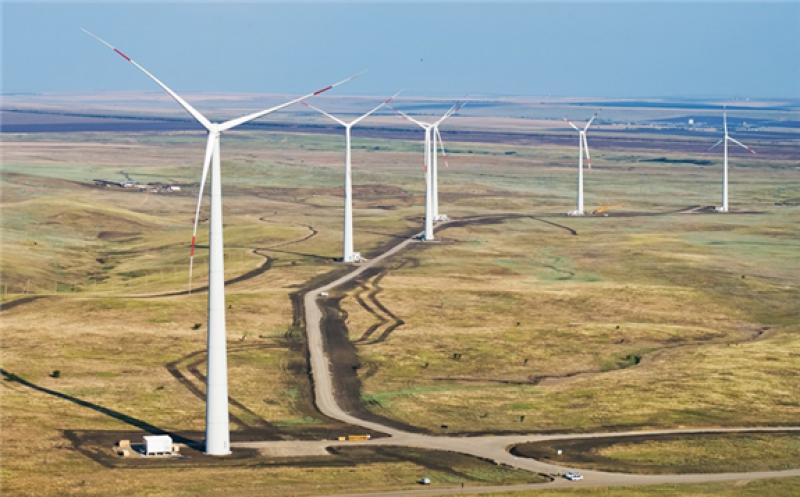
In total, the contract between Elemash Magnit LLC (an enterprise of TVEL Fuel Company of Rosatom in Elektrostal, Moscow region) and Red Wind B.V. (a joint venture of NovaWind JSC and the Dutch company Lagerwey) foresees manufacturing and supply over 200 sets of magnets. One set is designed to produce one power generator.
“The project includes gradual localization of magnets manufacturing in Russia, decreasing dependence on imports. We consider production of magnets as a promising sector for TVEL’s metallurgical business development. In this regard, our company does have the relevant research and technological expertise for creation of Russia’s first large-scale full cycle production of permanent rare-earth magnets,” commented Natalia Nikipelova, President of TVEL JSC.
“NovaWind, as the nuclear industry integrator for wind power projects, not only made-up an efficient supply chain, but also contributed to the development of inter-divisional cooperation and new expertise of Rosatom enterprises. TVEL has mastered a unique technology for the production of magnets for wind turbine generators. These technologies will be undoubtedly in demand in other areas as well,” noted Alexander Korchagin, Director General of NovaWind JSC.
For reference:
TVEL Fuel Company of Rosatom incorporates enterprises for the fabrication of nuclear fuel, conversion and enrichment of uranium, production of gas centrifuges, as well as research and design organizations. It is the only supplier of nuclear fuel for Russian nuclear power plants. TVEL Fuel Company of Rosatom provides nuclear fuel for 73 power reactors in 13 countries worldwide, research reactors in eight countries, as well as transport reactors of the Russian nuclear fleet. Every sixth power reactor in the world operates on fuel manufactured by TVEL. www.tvel.ru
NovaWind JSC is a division of Rosatom; its primary objective is to consolidate the State Corporation's efforts in advanced segments and technological platforms of the electric power sector. The company was founded in 2017. NovaWind consolidates all of the Rosatom’s wind energy assets – from design and construction to power engineering and operation of wind farms.
Overall, by 2023, enterprises operating under the management of NovaWind JSC, will install 1 GW of wind farms. http://novawind.ru
Elemash Magnit LLC is a subsidiary of Kovrov Mechanical Plant (an enterprise of the TVEL Fuel Company of Rosatom) and its main supplier of magnets for production of gas centrifuges. The company also produces magnets for other industries, in particular, for the automotive
industry. The production facilities of Elemash Magnit LLC are located in the city of Elektrostal, Moscow Region, at the site of Elemash Machine-Building Plant (a nuclear fuel fabrication facility of TVEL Fuel Company).
Rosatom is a global actor on the world’s nuclear technology market. Its leading edge stems from a number of competitive strengths, one of which is assets and competences at hand in all nuclear segments. Rosatom incorporates companies from all stages of the technological chain, such as uranium mining and enrichment, nuclear fuel fabrication, equipment manufacture and engineering, operation of nuclear power plants, and management of spent nuclear fuel and nuclear waste. Nowadays, Rosatom brings together about 350 enterprises and organizations with the workforce above 250 K. https://rosatom.ru/en/
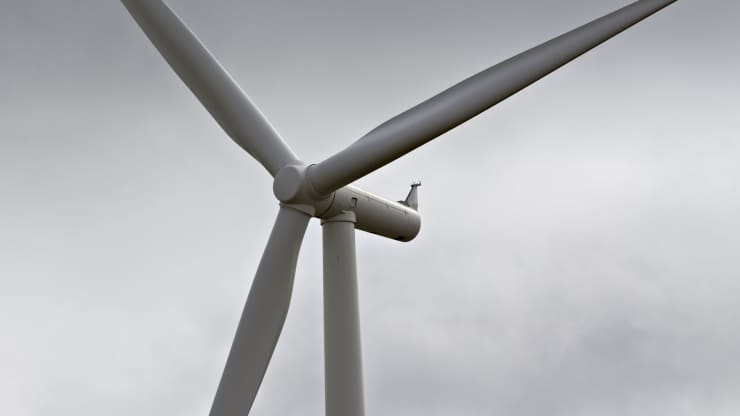
U.S. Added Less New Wind Power in 2021 Than the Previous Year — Here’s Why
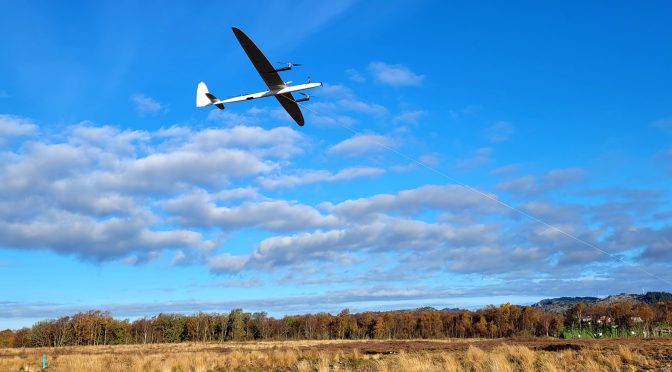
Airborne Wind Energy Developer Kitemill Prepares for 24HOUR Operation and Multi-Device Demonstrations
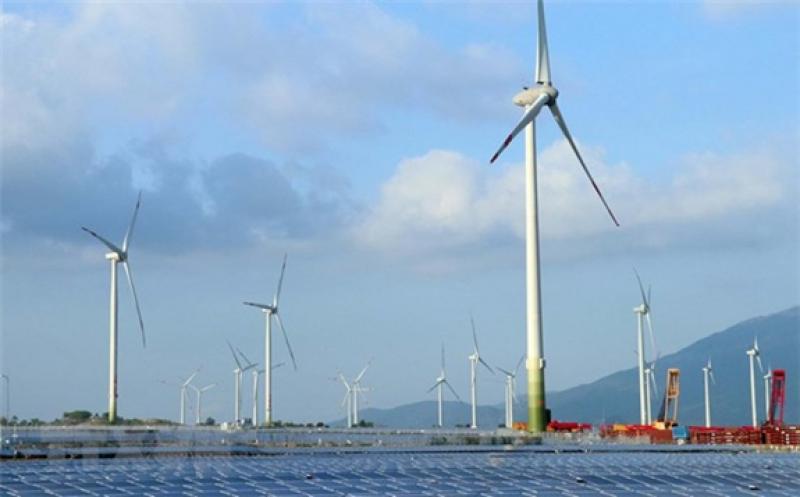
Vietnam's Largest Wind Power Plant Starts Operational
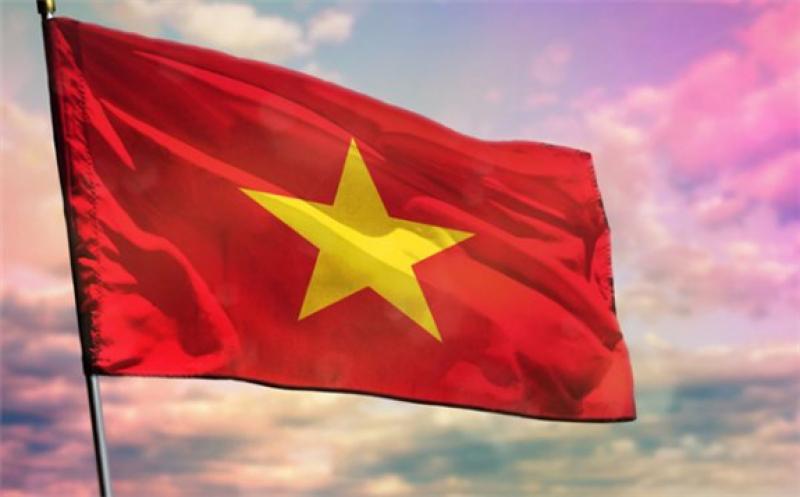
Vietnam Plans to Double Wind Power Generation by 2030
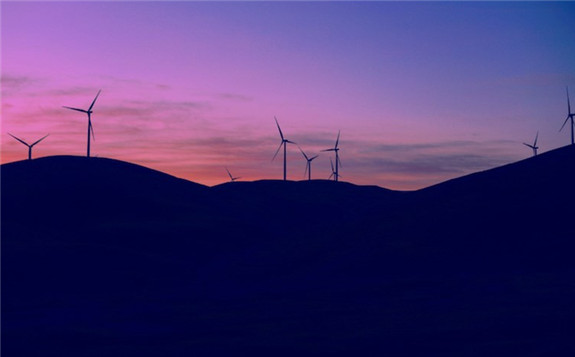
Developer Lines up Support for Vietnam Wind Build
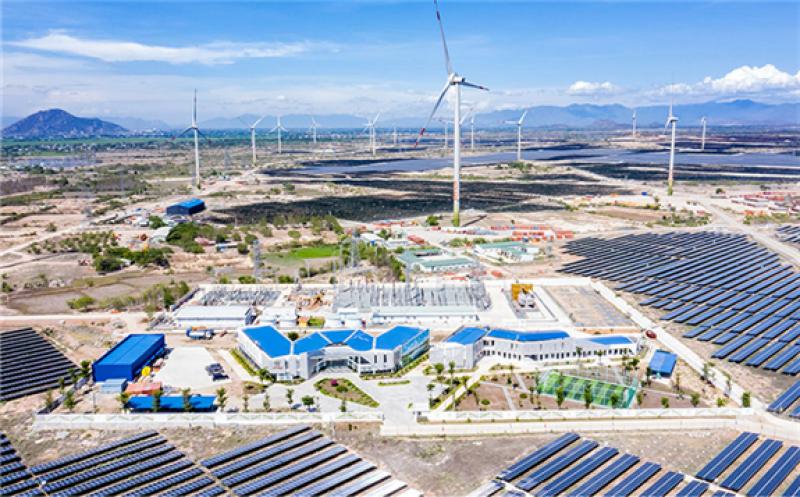
Trung Nam Group Inaugurates Wind Power Plant in Vietnam
- Phone: +90 (212) 875 19 08
- E-Mail: [email protected]
- Company Profile
- Company Policy
- Mission and Vision
- Certificates
- Aluminium Windows
- Aluminium Doors
- Aluminium Sliding Elements
- Aluminium Curtain Walls
- Aluminium Skylight Elements
- Aluminium Frames for Safety and Security
- Aluminium Conservatories
- Metal Panel Sheet Claddings
- Aluminium Entrance Frames
- Glass Structures
- Complementary Items
- Lightweight Steel Structures
- Human Resources OPEN
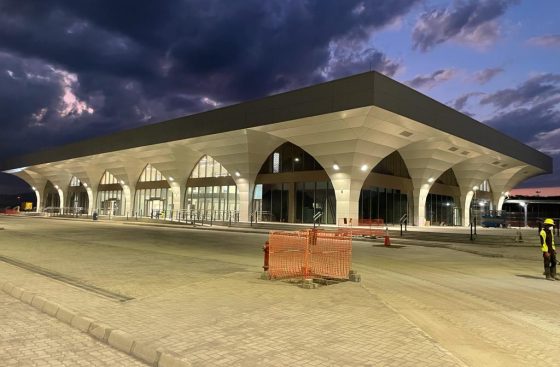
Project Description
Project name:, year of construction:.
COWI & SENER JV + Yapi Merkezi
Items to be completed:

IMAGES
VIDEO
COMMENTS
Ngorongoro safari tours offer your best chance in Tanzania of spotting all the Big Five (lion, leopard, elephant, buffalo and black rhino) in one game drive. The crater is also notable for the spectacularly scenic combination of the verdant plains of the lake-studded crater floor and imposing 600m-/1,968ft-high cliffs that enclose it on all sides.
As the world's only intact caldera, the crater is the top attraction of the 8,292km²/3,202mi² Ngorongoro Conservation Area. There are few places that have comparable wildlife densities. It is not unusual to see the Big Five in one day here. And all this is in the most amazing setting with a backdrop of the 600m-/1,968ft-high crater wall.
Ngorongoro Crater Safari Fees. There is no arguing that the crater is one of the most stunning natural features in Africa, a continent well known for its natural beauty. There is no cheap way to visit the crater as park fees are $78 a person per day and just the vehicle permit comes in at $297. We never told anyone Africa was cheap.
10 Day Luxury Fly-in Kenya & Tanzania Tour. 1 night at Gran Melia Hotel (breakfast only) 2 nights at Melia Ngorongoro Lodge. 3 nights at Nimal Serengeti. 3 nights at Entim Mara Camp. Transfers between lodges and airstrips. View safari to see all inclusions.. $ 950 USD. Per person per night.
Get to Know Ngorongoro Crater. This is where vast herds of the Great Migration come to give birth in a 3-million-year-old collapsed volcano, Masai people live and fossils abound. Ngorongoro Crater - a Unesco World Heritage site - is 600 meters deep, 20 kilometres wide and the largest unflooded, unbroken caldera in the world.
Safari in Ngorongoro. One of the Seven Natural Wonders of Africa, a safari at Ngorongoro is a must-do on a trip to Tanzania due to the incredible landscape and wildlife on display. The crater was formed when a large volcano erupted and collapsed on itself with this explosion creating a caldera. Thousands of animals are attracted to the crater ...
Ngorongoro Crater Safari, Tanzania. The Ngorongoro Crater is a breathtakingly beautiful setting and the best place in East Africa to see the Big Five. It is a great way to start your African safari adventure. However, as one of the world's most astonishing and renowned natural wonders, the Ngorongoro Crater does get busy, and at times very busy.
From the camp, it was a quick 15-minute descent into Ngorongoro Crater. Once we got there, it was easy to see why the crater is so famous. We saw countless animal species like buffaloes, elephants, zebras, lions, hippos, and hyenas, to name a few. Ngorongoro is also one of the best safari locations in Tanzania to see the black rhino, and we got ...
"A 2-day Ngorongoro safari means that you'll only have 1 night here. On the first day, you'll travel to Ngorongoro, and return late the following day. Most tours take one of the tracks down into the crater in the early morning, usually just after sunrise. In theory, there is a six-hour time limit for each vehicle to remain down in the ...
The Ngorongoro Conservation Area is a protected area and a World Heritage Site covers an area of 8,288 square kilometers and is located 180 km west of Arusha in the Crater Highlands area of Tanzania, Ngorongoro lies just 60 kms NW of Lake Manyara, 190 km W of Arusha and 145 km SE of The Serengeti. The area is named after Ngorongoro Crater, a ...
There are bigger and wilder parks but if you want some of the easiest and most rewarding game viewing in East Africa, an Ngorongoro Crater safari won't disappoint. A can't-miss destination on Tanzania's star-studded Northern Safari Circuit, the Ngorongoro Crater offers a classic Big 5 safari experience in the unique setting of an ancient ...
Indulge in an extraordinary safari experience at Sanctuary Ngorongoro Crater Camp, surrounded by the natural splendour of the Ngorongoro Conservation Area. An absolute must-visit destination for any wildlife enthusiast visiting Tanzania, the Ngorongoro Crater is a UNESCO World Heritage Site and one of the Seven Natural Wonders of Africa.
Discover the lush wildlife-filled landscape of Ngorongoro Crater with game drives in this 'Garden of Eden' - without doubt one of Africa's Seven Natural Wonders. Camp in the heart of Tanzania's oldest national park, the Serengeti. Explore timeless East Africa where endless savanna, bursting with predators and prey, offers the ultimate ...
Top ways to experience Ngorongoro Crater. 3 Days Tanzania Safari Tarangire, Manyara, & Ngorongoro Crater. Tanzania Safari: 1 day Safari - Ngorongoro Crater. After Kilimanjaro I decided to join two travelers for safari in Tanzania also this was organized by local company Nafika Tours, We were treated like royalty on our safari.
At Ngorongoro Serena Safari Lodge, our stunning setting on the rim of the ancient Ngorongoro Crater provides a gateway to unforgettable adventures and excursions. Enjoy a wide range of activities, from game drives on the Crater plains to guided nature walks, bush dining experiences, visits to Maasai villages and cattle markets, and much, much ...
When visiting the Ngorongoro Crater and Serengeti National Park, a 4×4 safari vehicle is required unless you stick on the main roads, which are graveled. This 1-day Ngorongoro tour starts and ends in Arusha. Book your own international flights. Fly to/from Kilimanjaro Airport (JRO) near Arusha/Moshi. Or fly to/from Arusha Airport (ARK) via Dar ...
A walking safari in the Ngorongoro Conservation Area is a once-in-a-lifetime opportunity to connect with nature in a more intimate and personal way. You not only walk through the Ngorongoro Conservation Area's natural areas, which have spectacular landscapes, wildlife, and people, but you also synchronize with your surroundings and become one ...
Transportation to/from Lodge. 140kms (2 - 3 Hours' Drive) from Arusha on a dry weather road through Makuyuni, Mtowambu & Karatu Area. 45 minutes. from Arusha Airport to Lake Manyara Airstrip. Manyara Airstrip is 10Kms from the Camp, 'Meet and greet' and transfer services can be provided (Please advise arrival time in advance).
A safari is the best way to do this, and that's why tourists flock to the most beautiful natural parks in South Africa, Tanzania, Botswana, Namibia, and Kenya. ... The Ngorongoro Crater is one of ...
Nomad Tanzania operates some of the country's most remote, luxurious and exclusive bush lodges. Entamanu Ngorongoro, the only accommodation situated on the northern crater rim, is a great example. The cottages here, newly built in 2023 and spread across two camps, are the last word in bush chic and also offer splendid views over the crater rim.
First came the British colonial authorities, who established the 5,700-square-mile Serengeti National Park, pushing the Maasai to an adjacent zone called the Ngorongoro Conservation Area, with its ...
Welcome to the 628DirtRooster website where you can find video links to Randy McCaffrey's (AKA DirtRooster) YouTube videos, community support and other resources for the Hobby Beekeepers and the official 628DirtRooster online store where you can find 628DirtRooster hats and shirts, local Mississippi honey and whole lot more!
In 1938, it was granted town status. [citation needed]Administrative and municipal status. Within the framework of administrative divisions, it is incorporated as Elektrostal City Under Oblast Jurisdiction—an administrative unit with the status equal to that of the districts. As a municipal division, Elektrostal City Under Oblast Jurisdiction is incorporated as Elektrostal Urban Okrug.
06 Nov 2020 by Rosatom. TVEL Fuel Company of Rosatom has started gradual localization of rare-earth magnets manufacturing for wind power plants generators. The first sets of magnets have been manufactured and shipped to the customer. In total, the contract between Elemash Magnit LLC (an enterprise of TVEL Fuel Company of Rosatom in Elektrostal ...
Adres: BOSB Mermerciler San. Sitesi 4. Cadde No: 7 34520, Beylikdüzü / İstanbul / TÜRKİYE